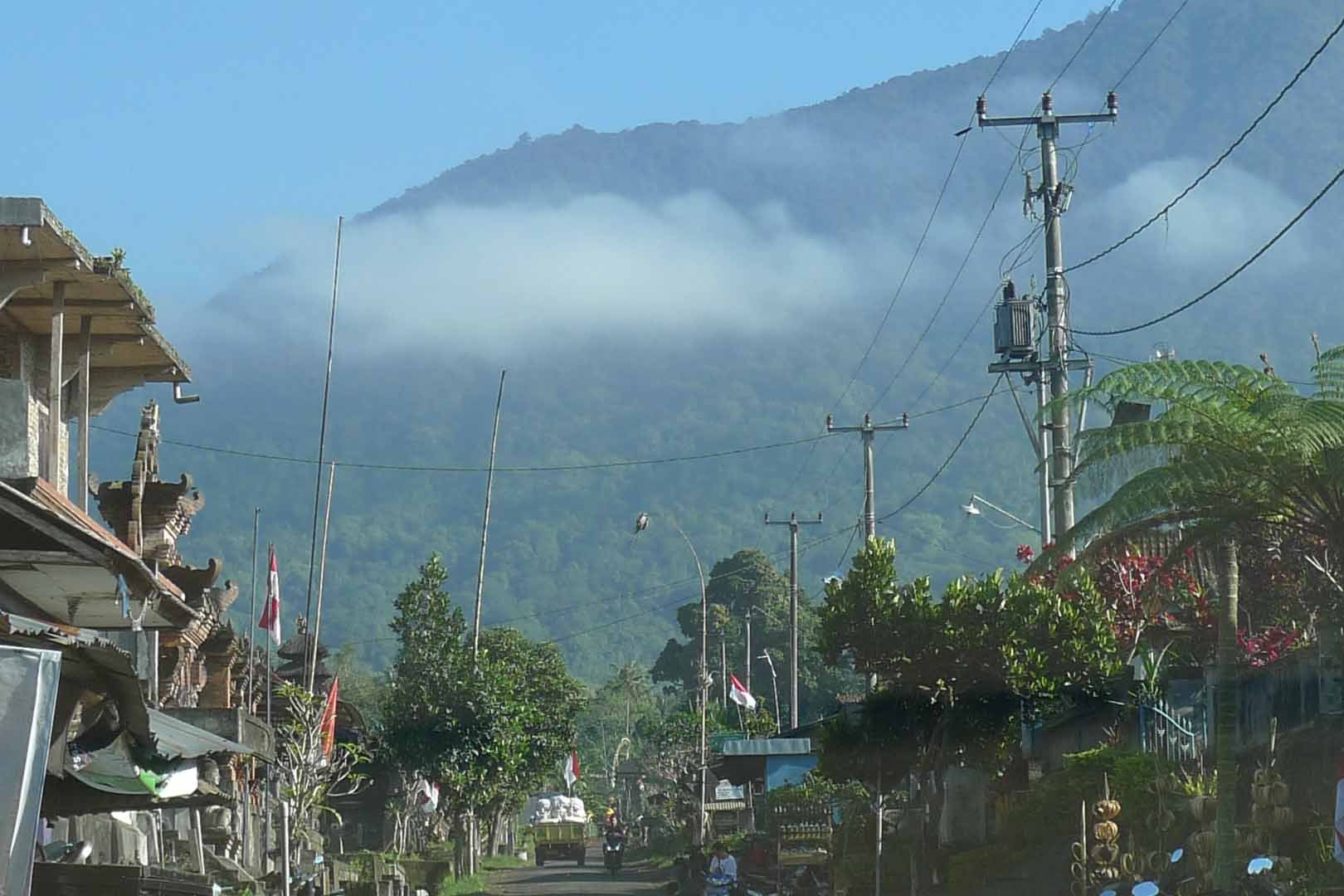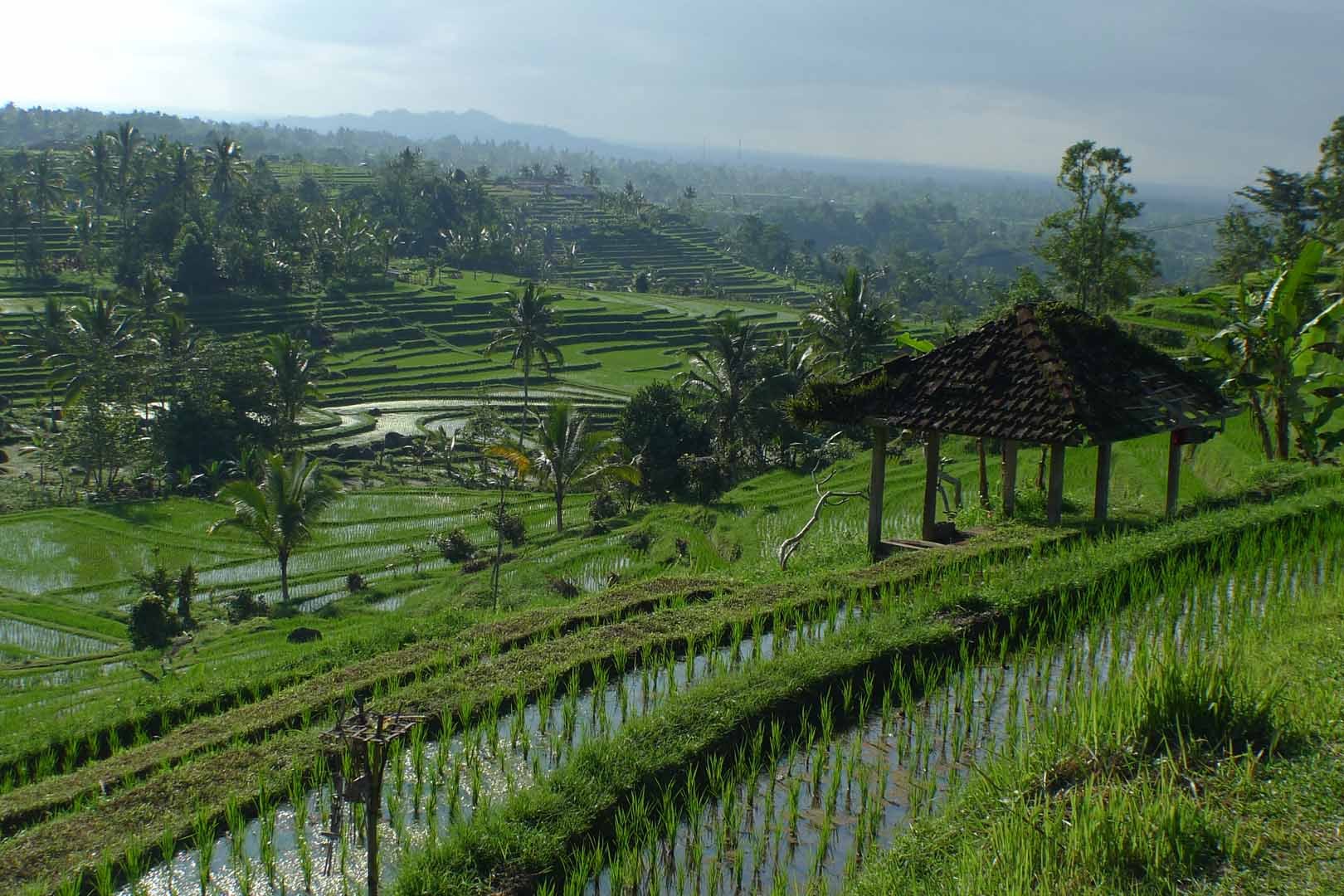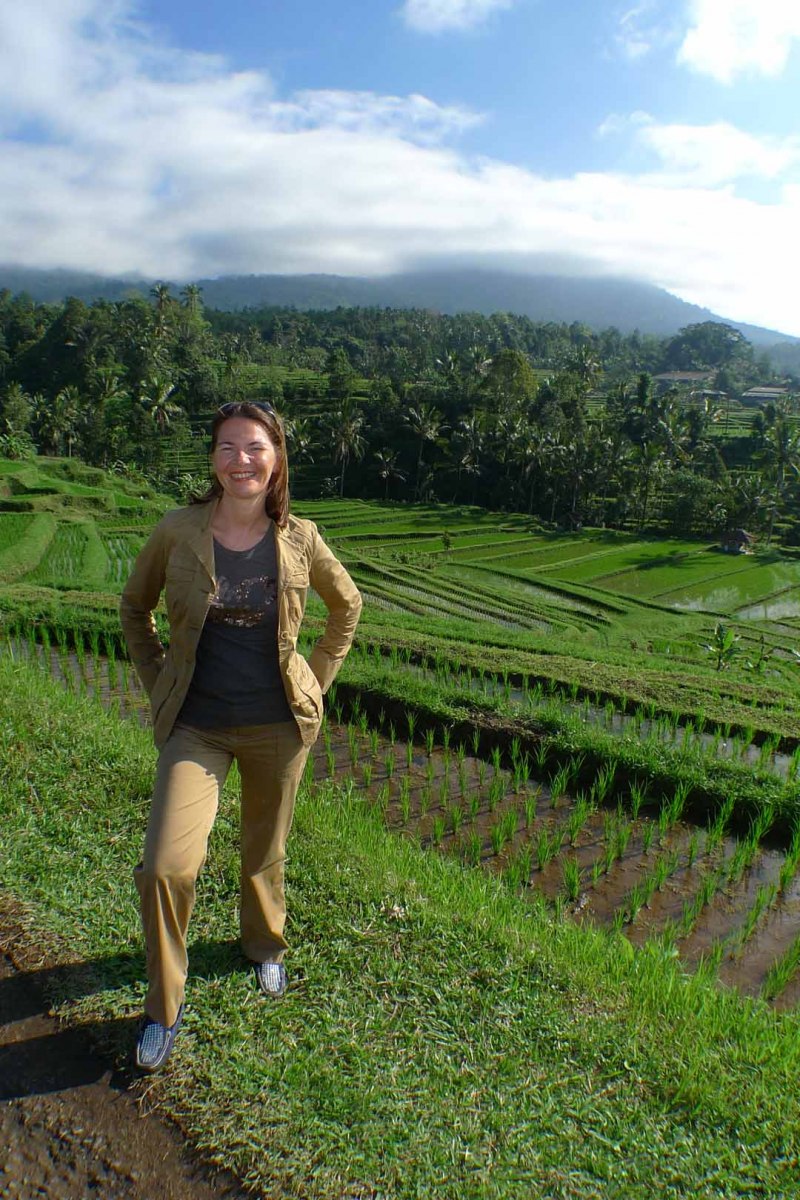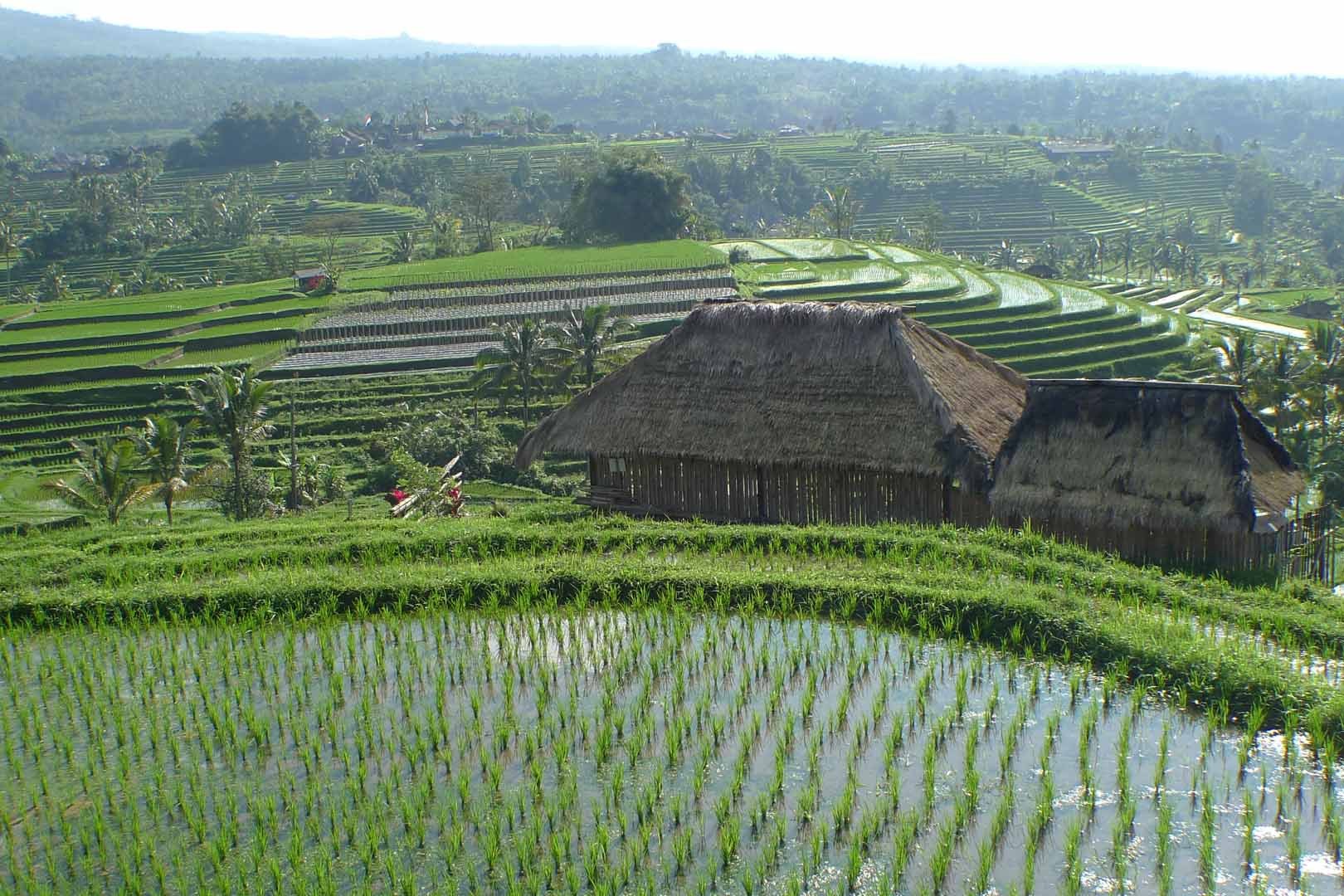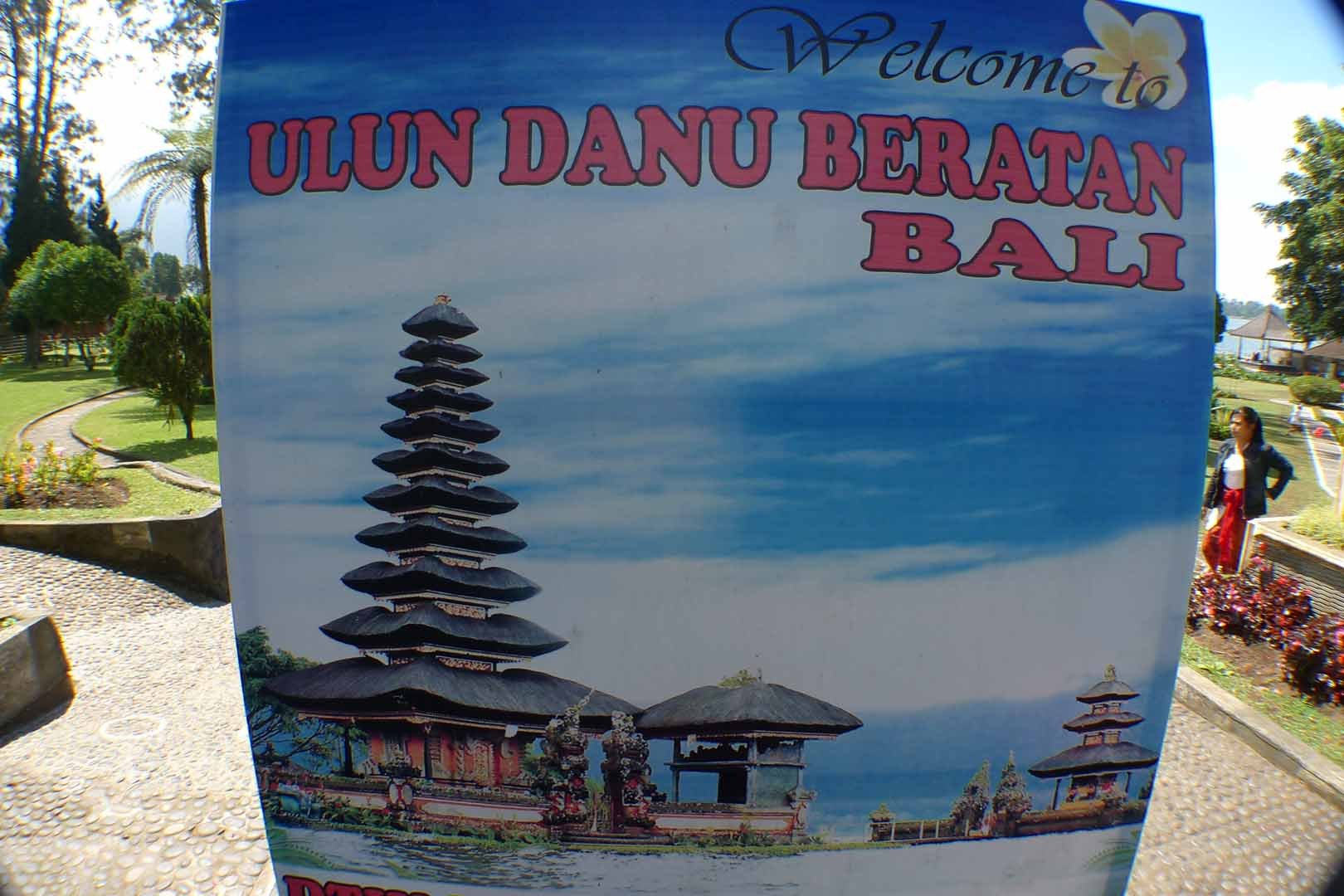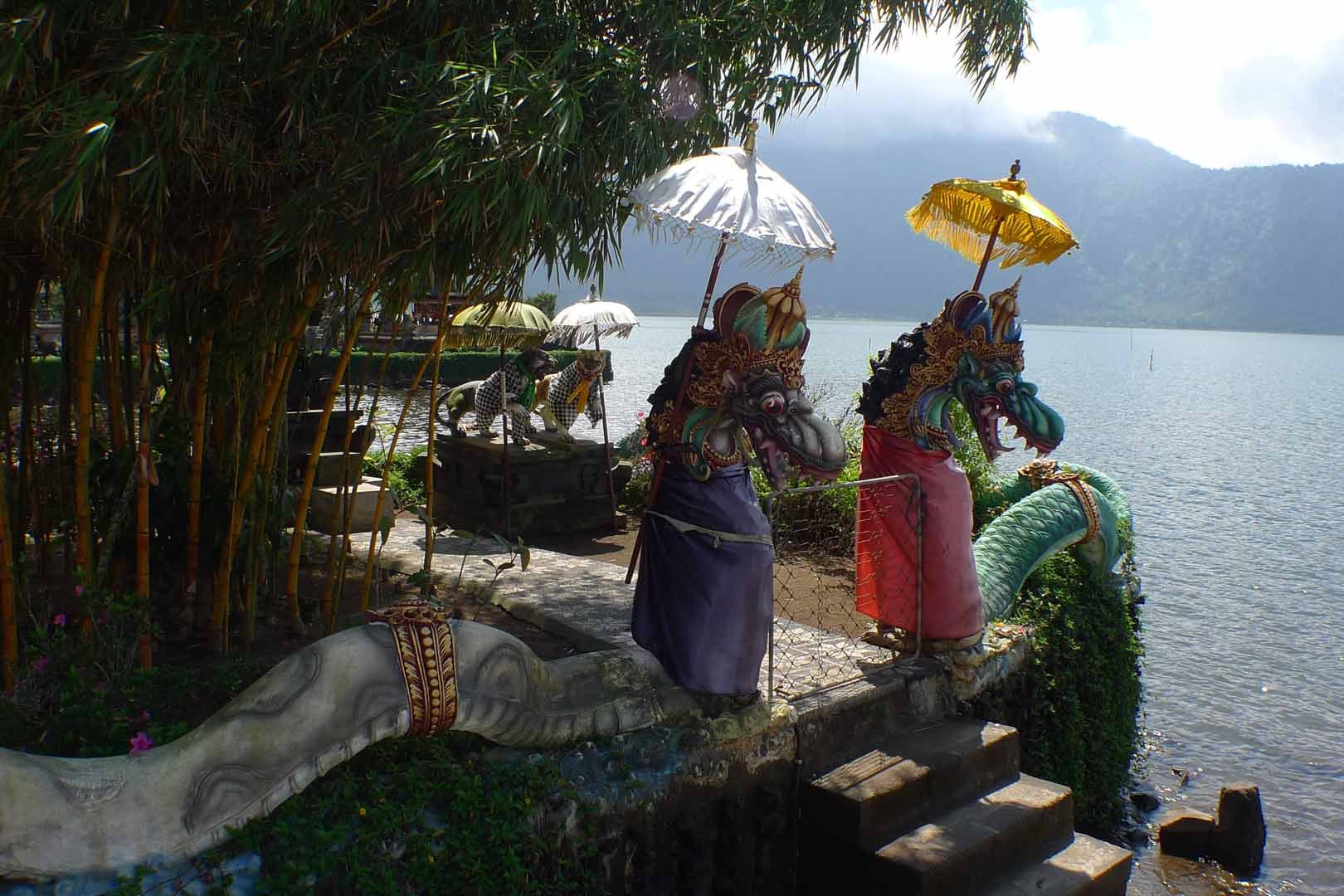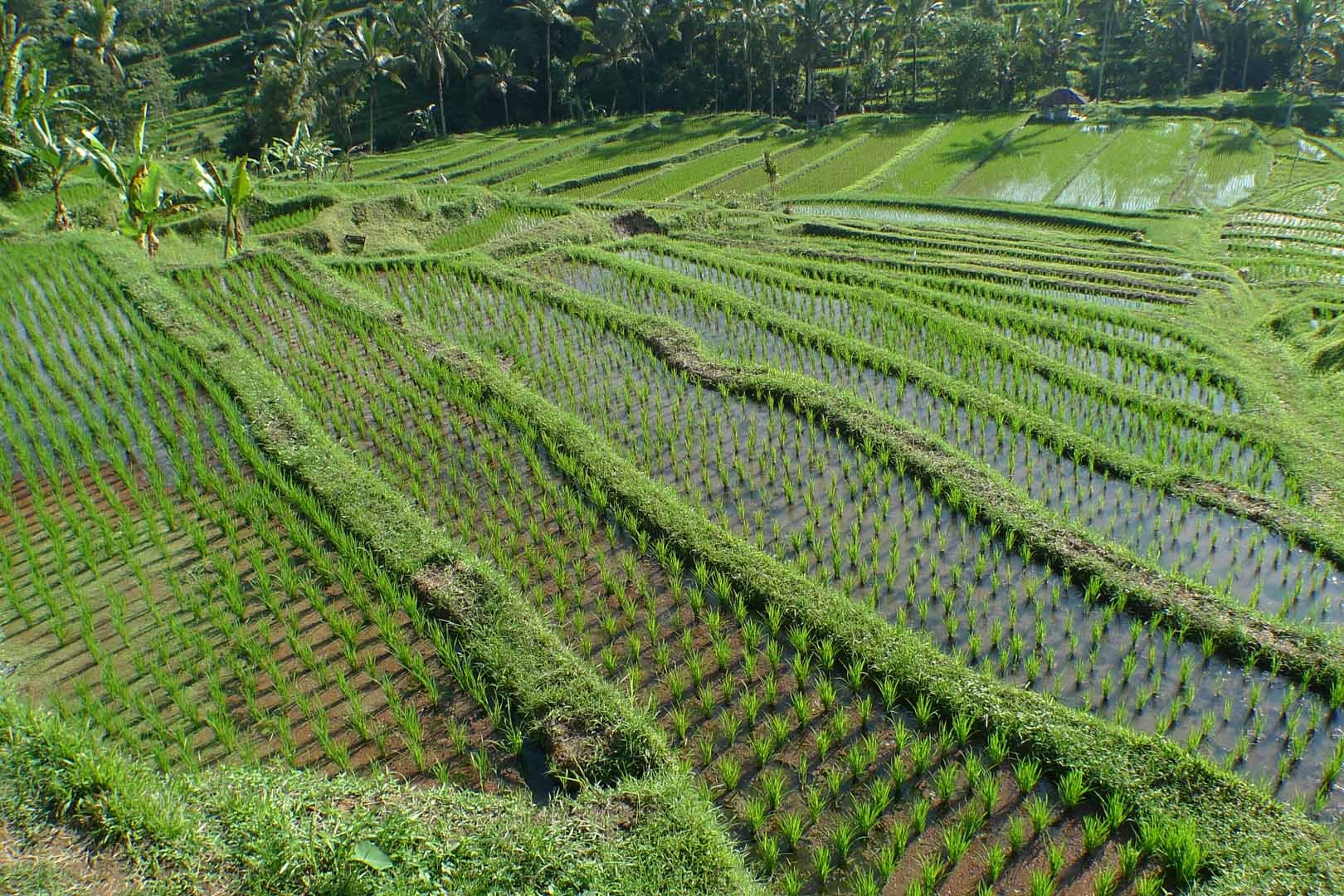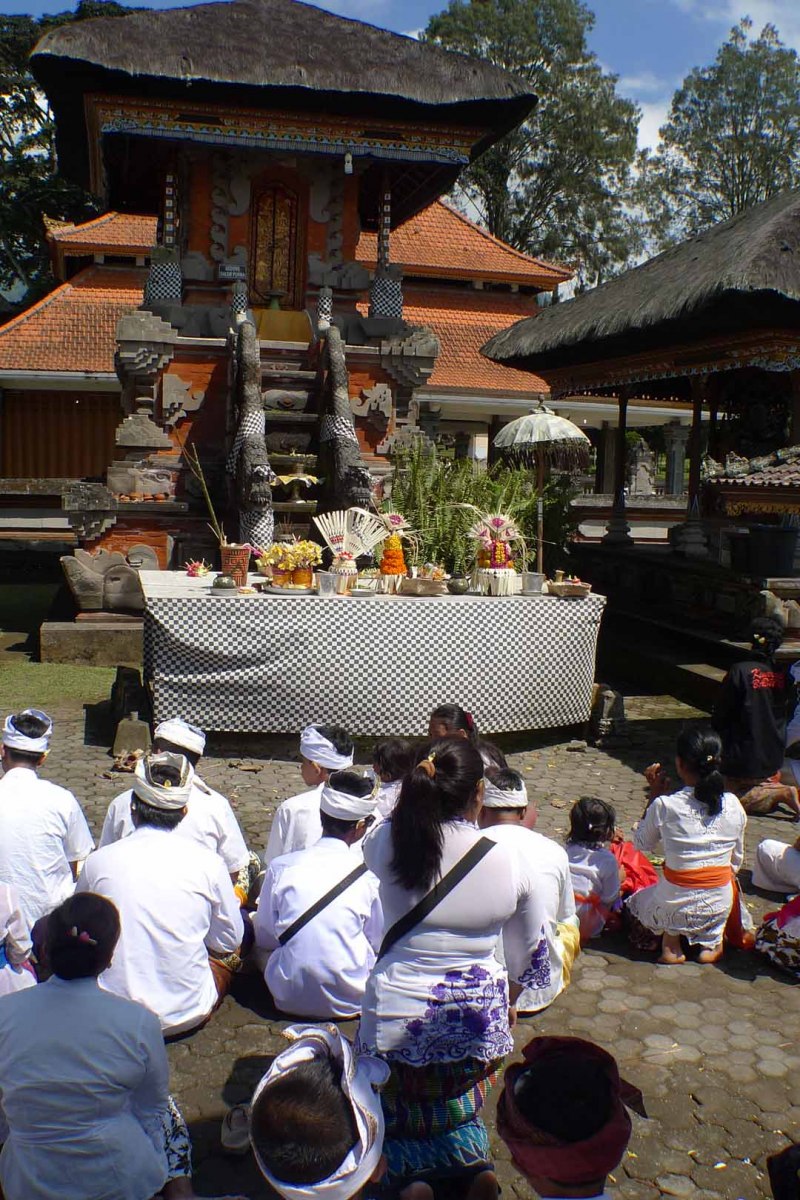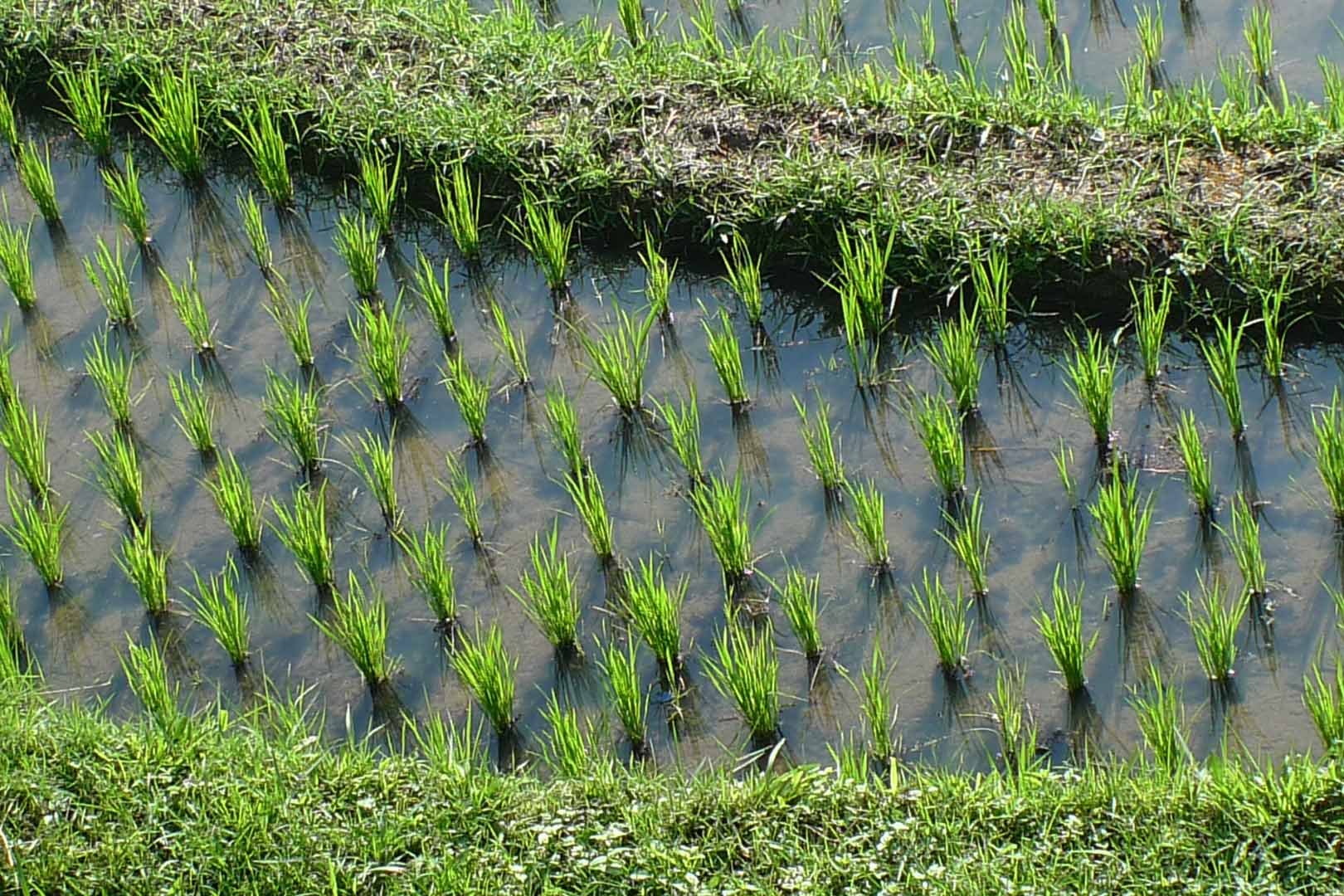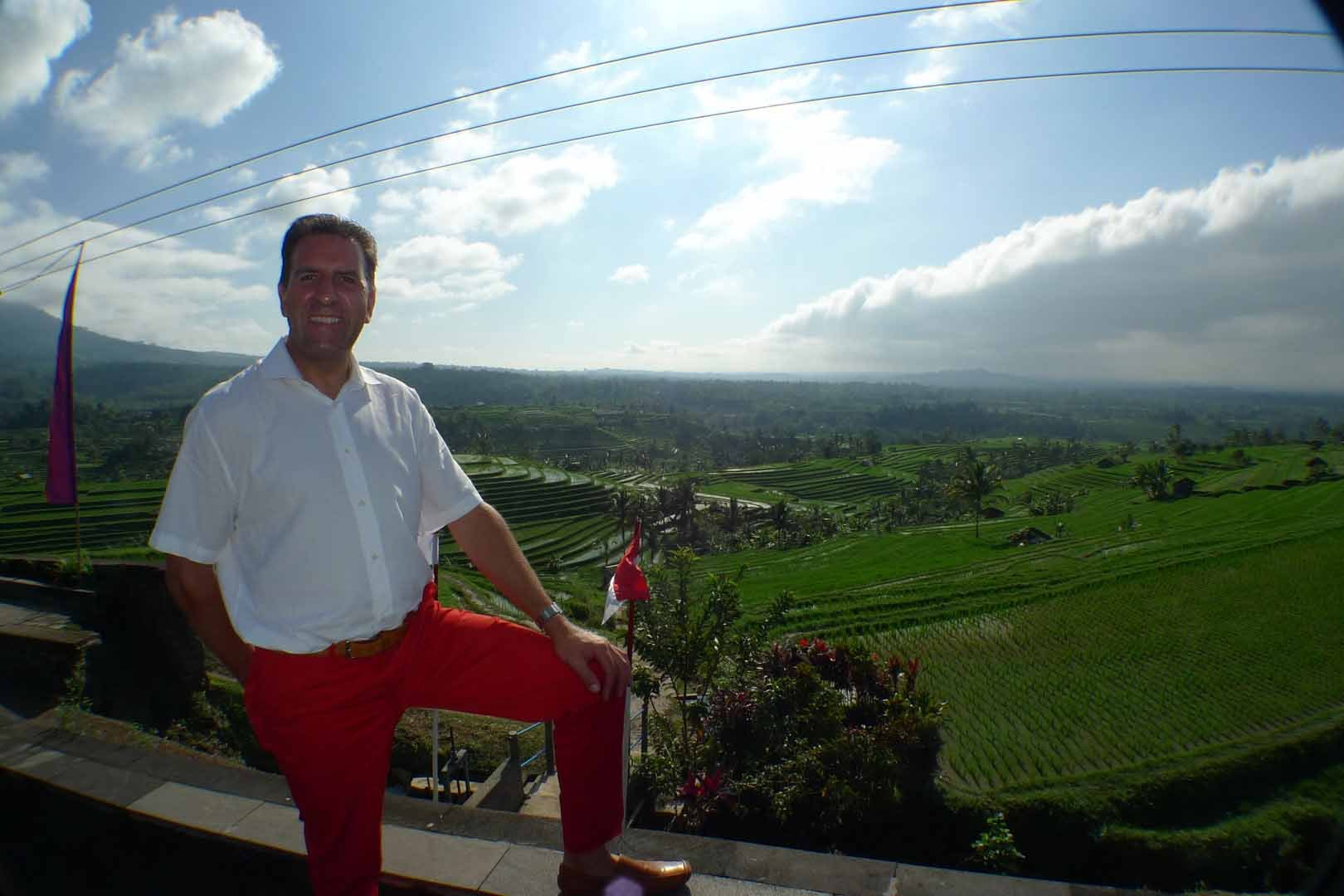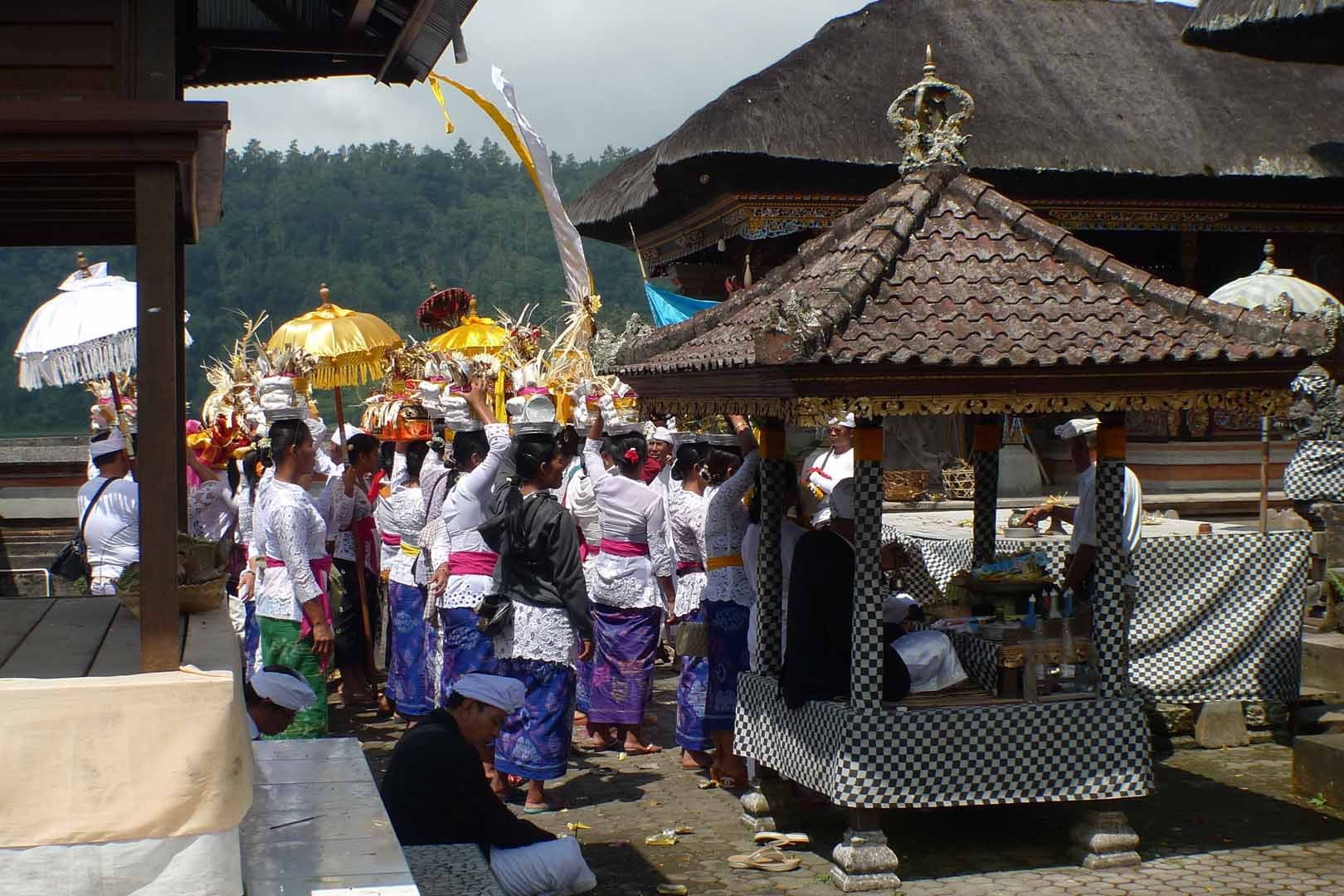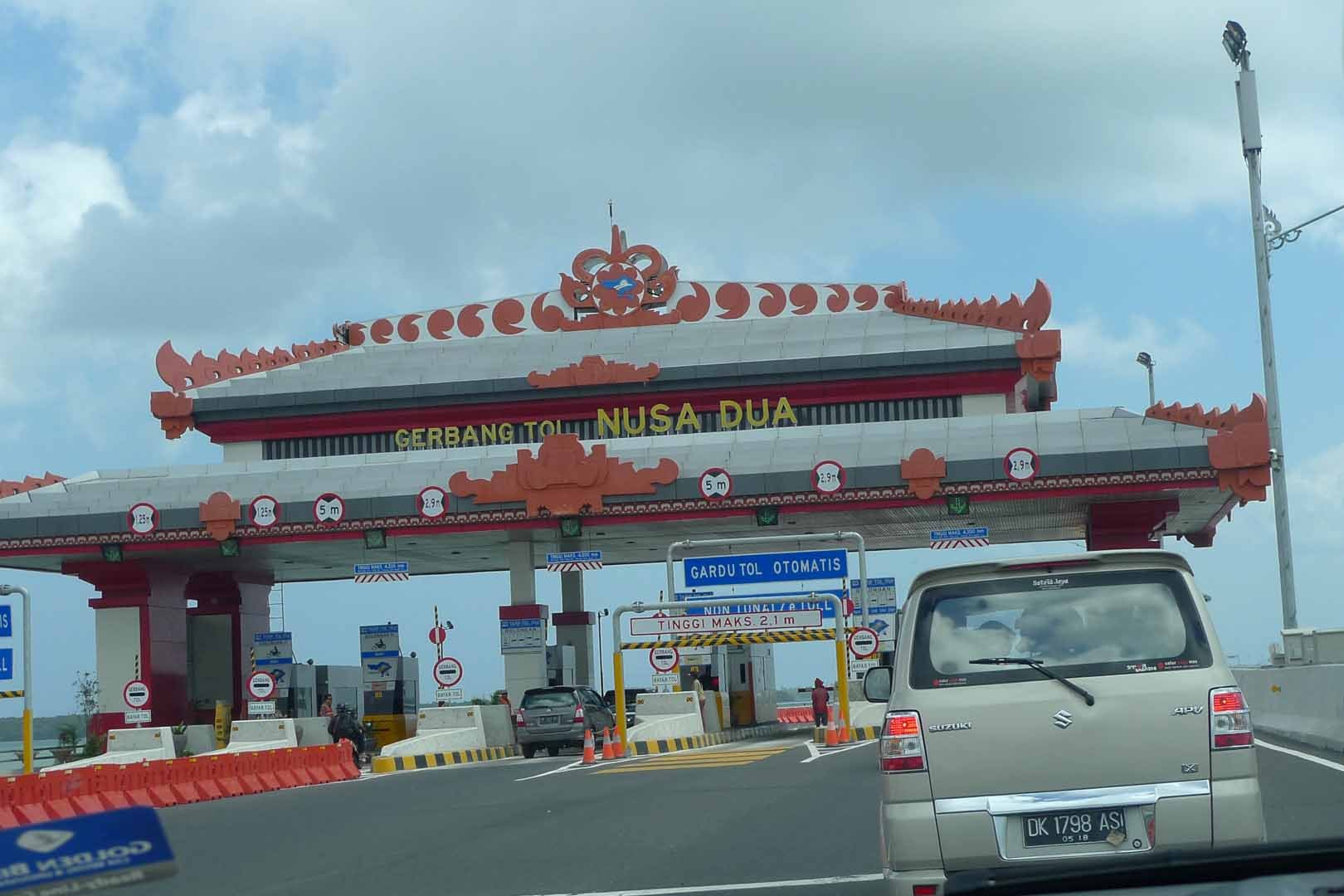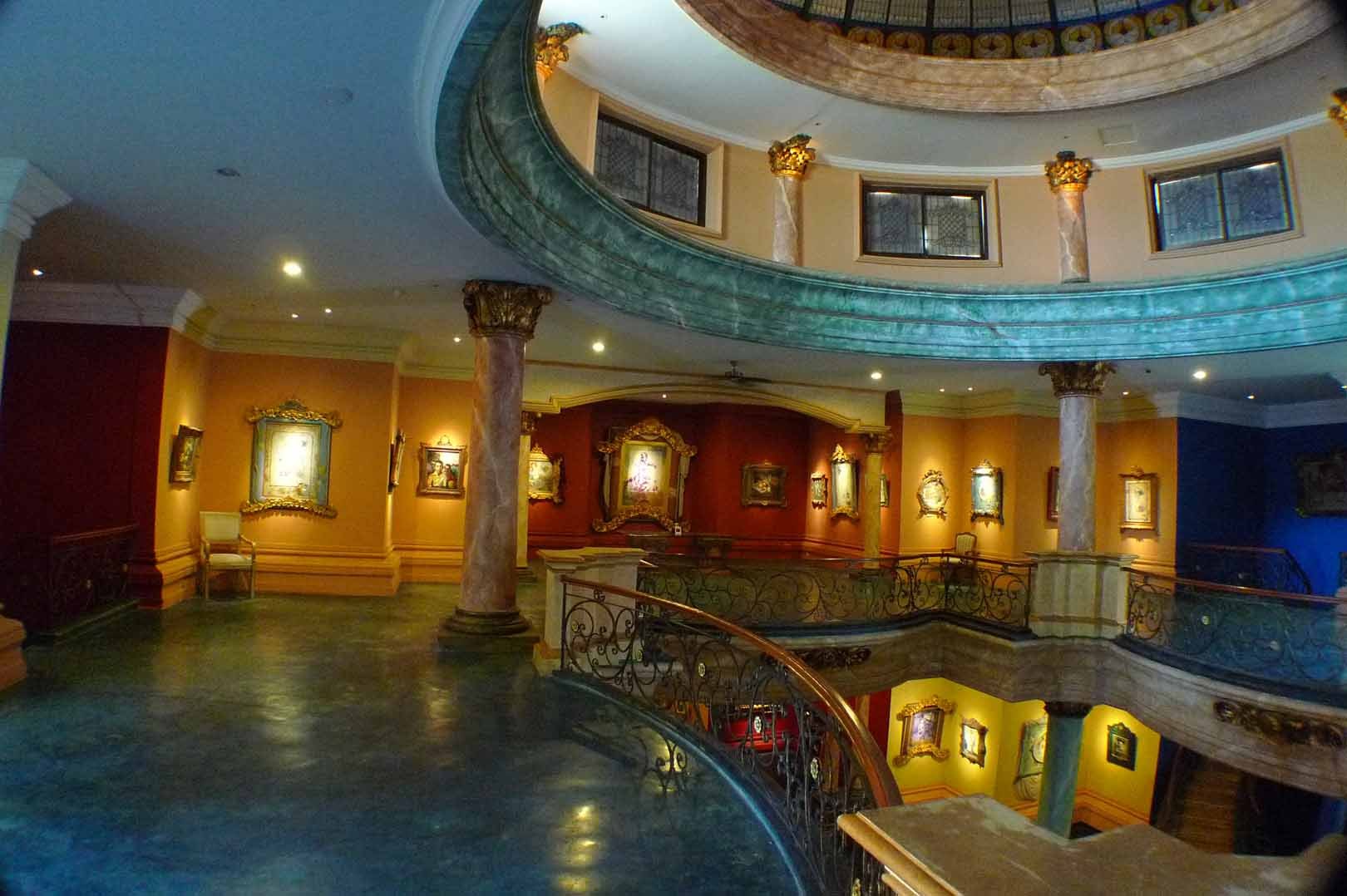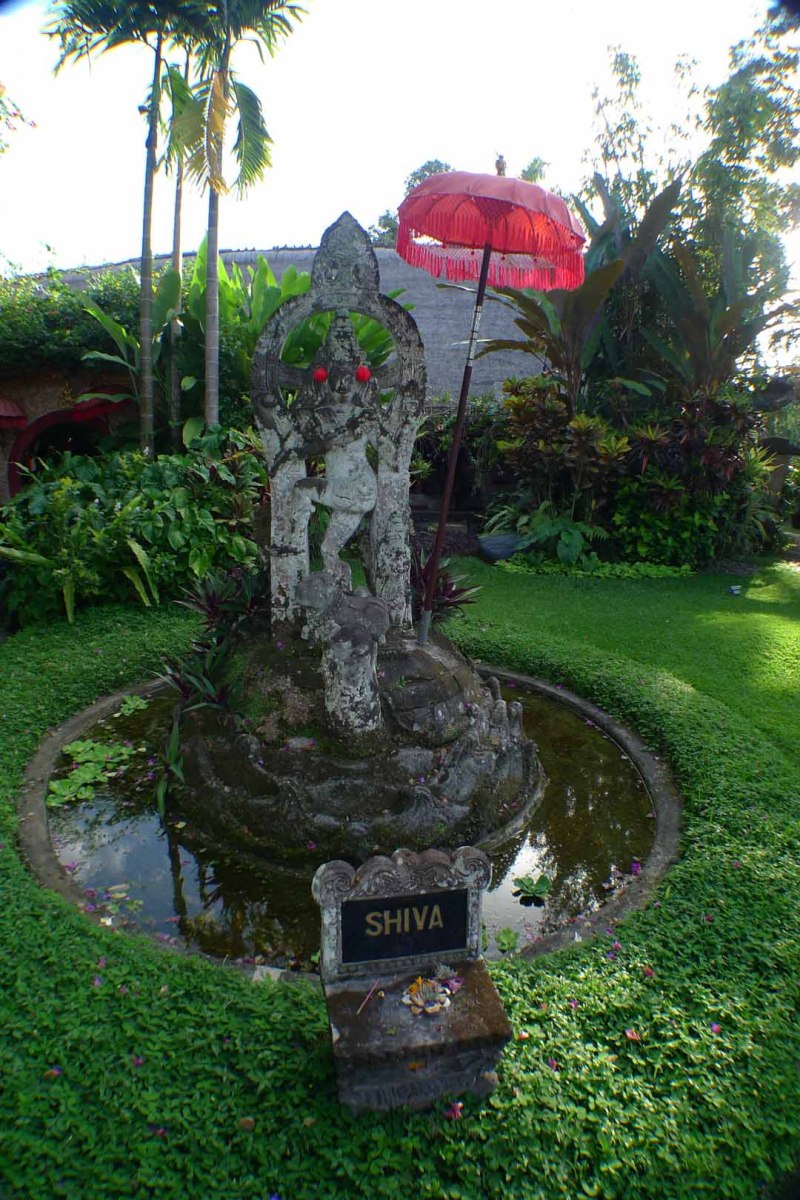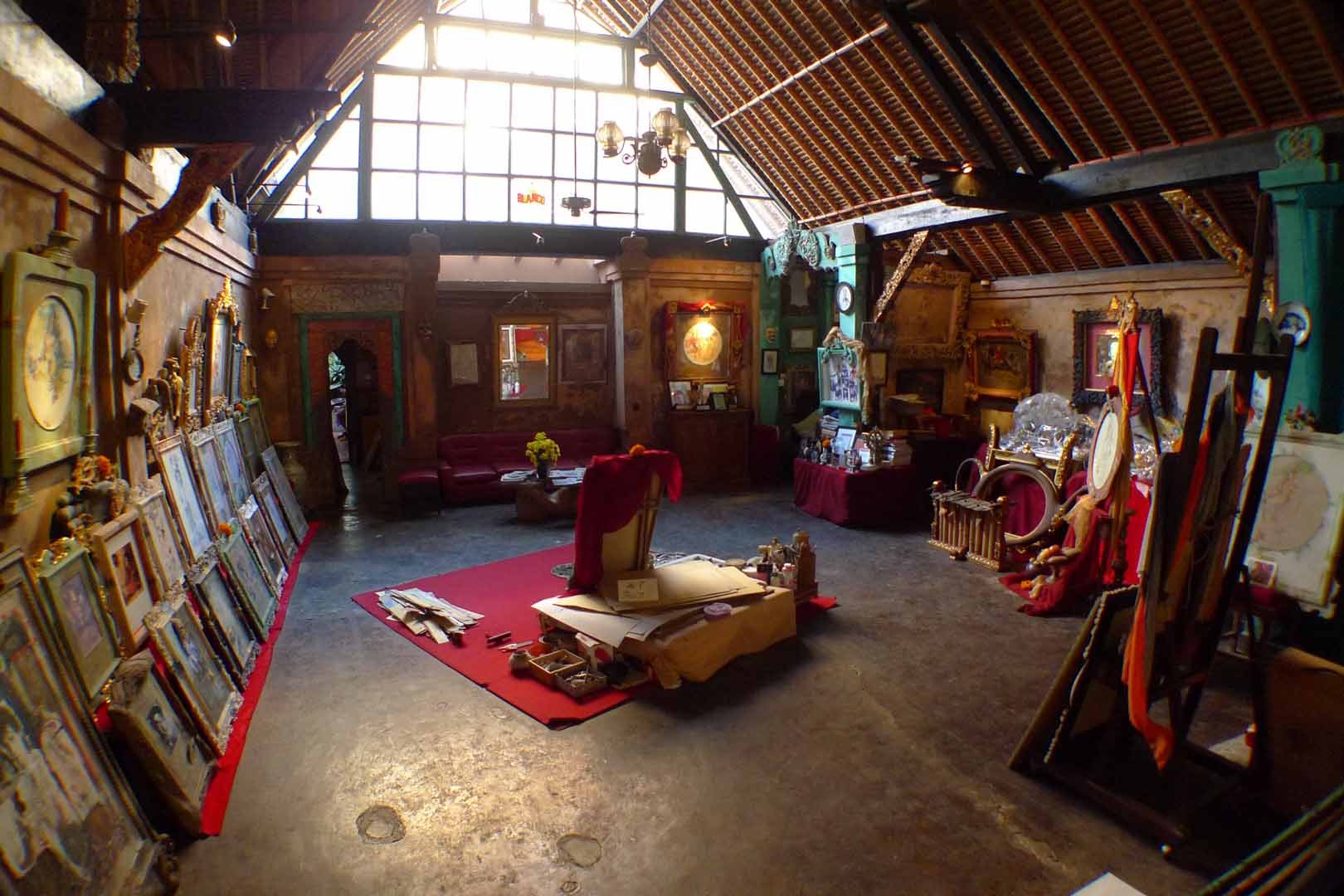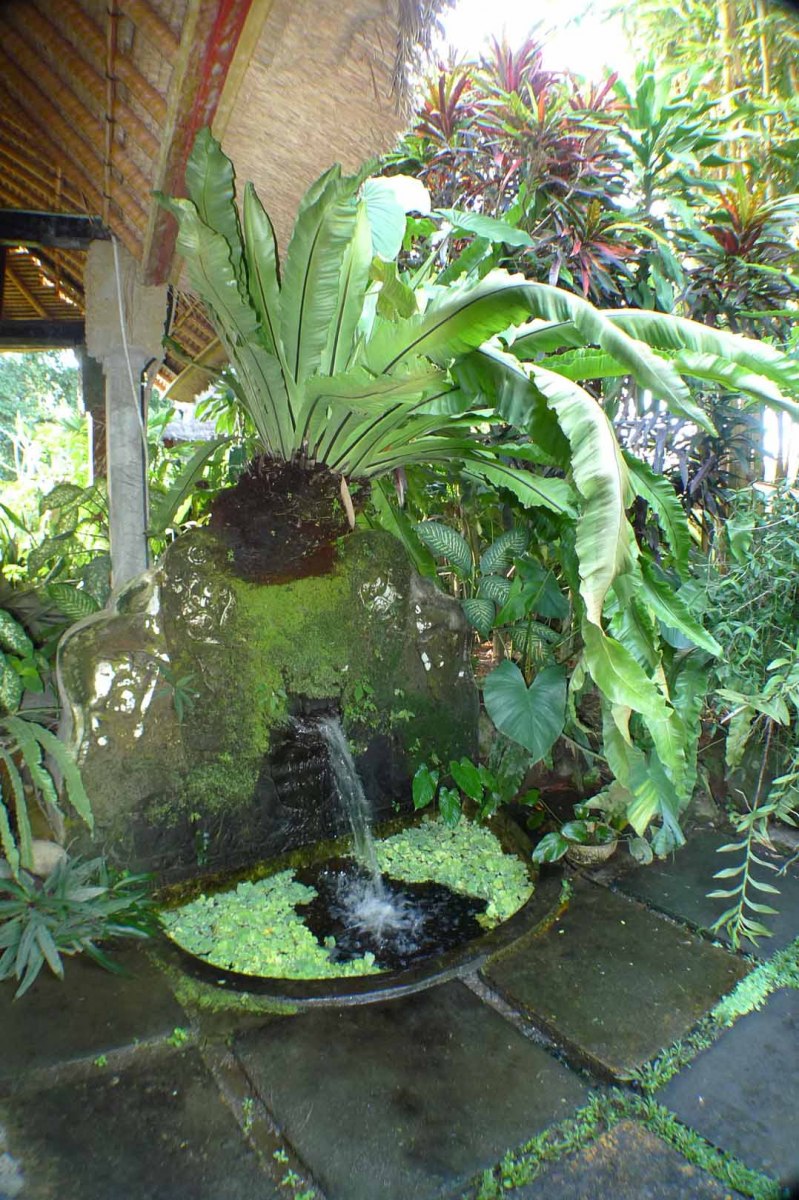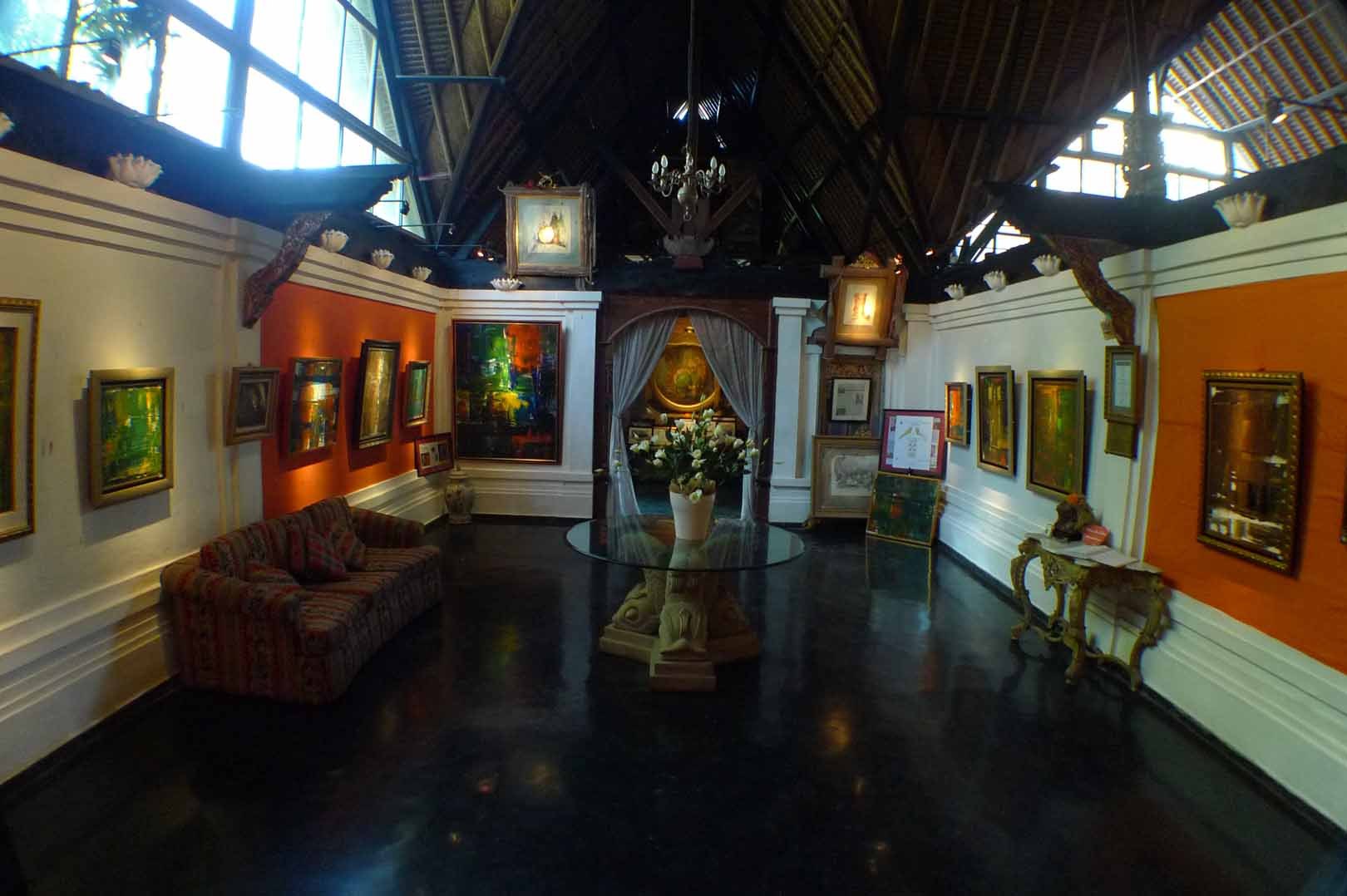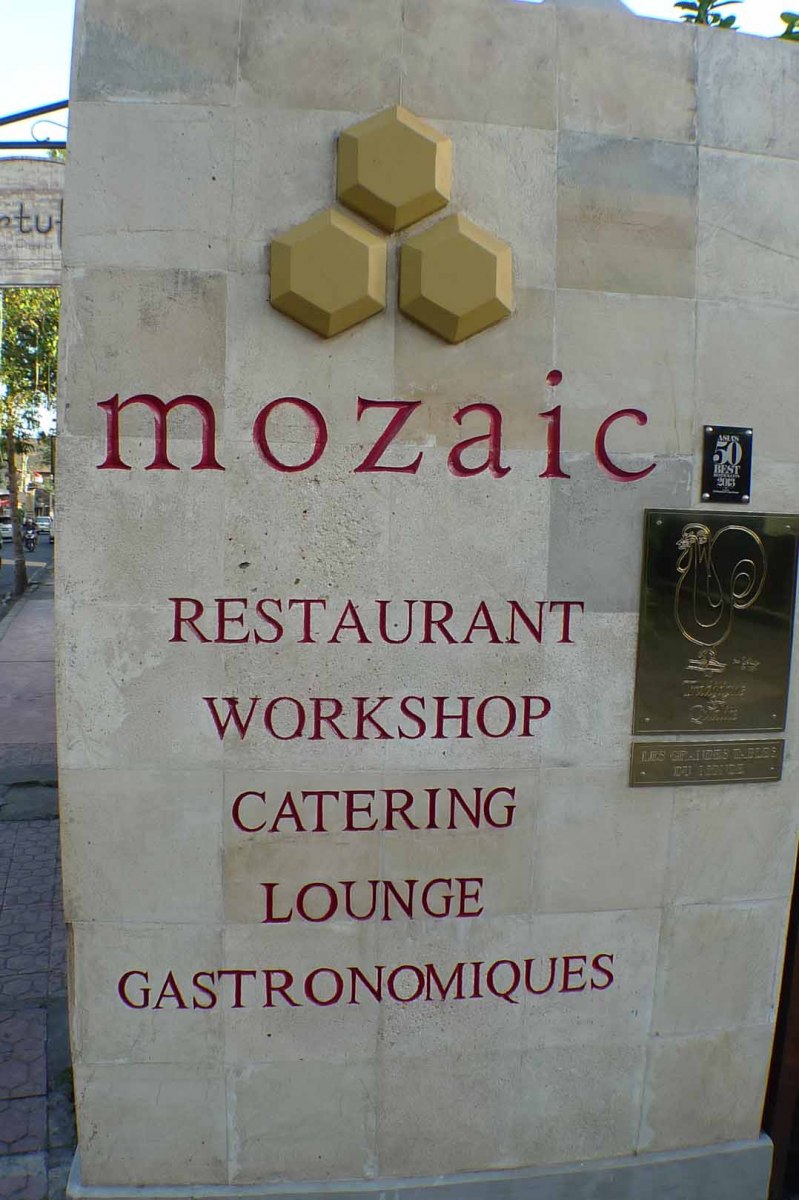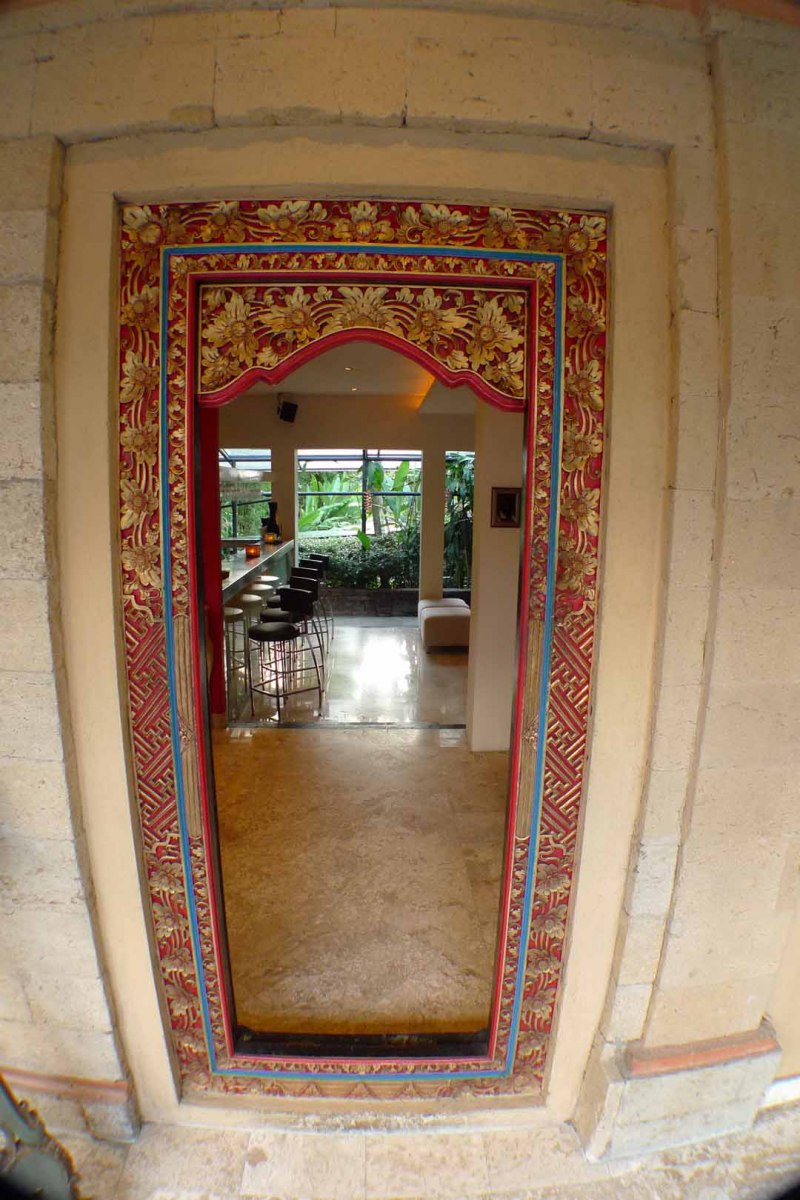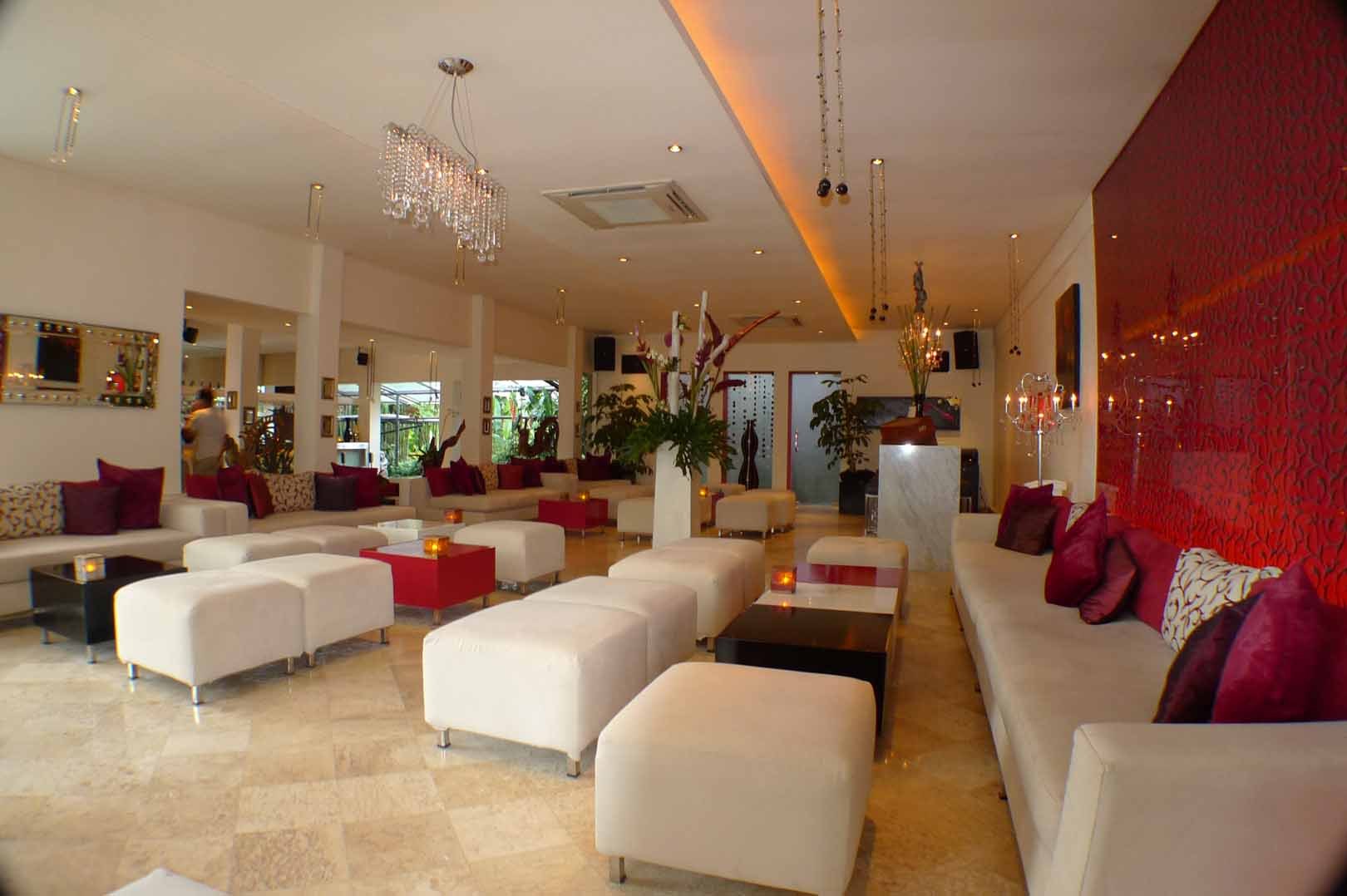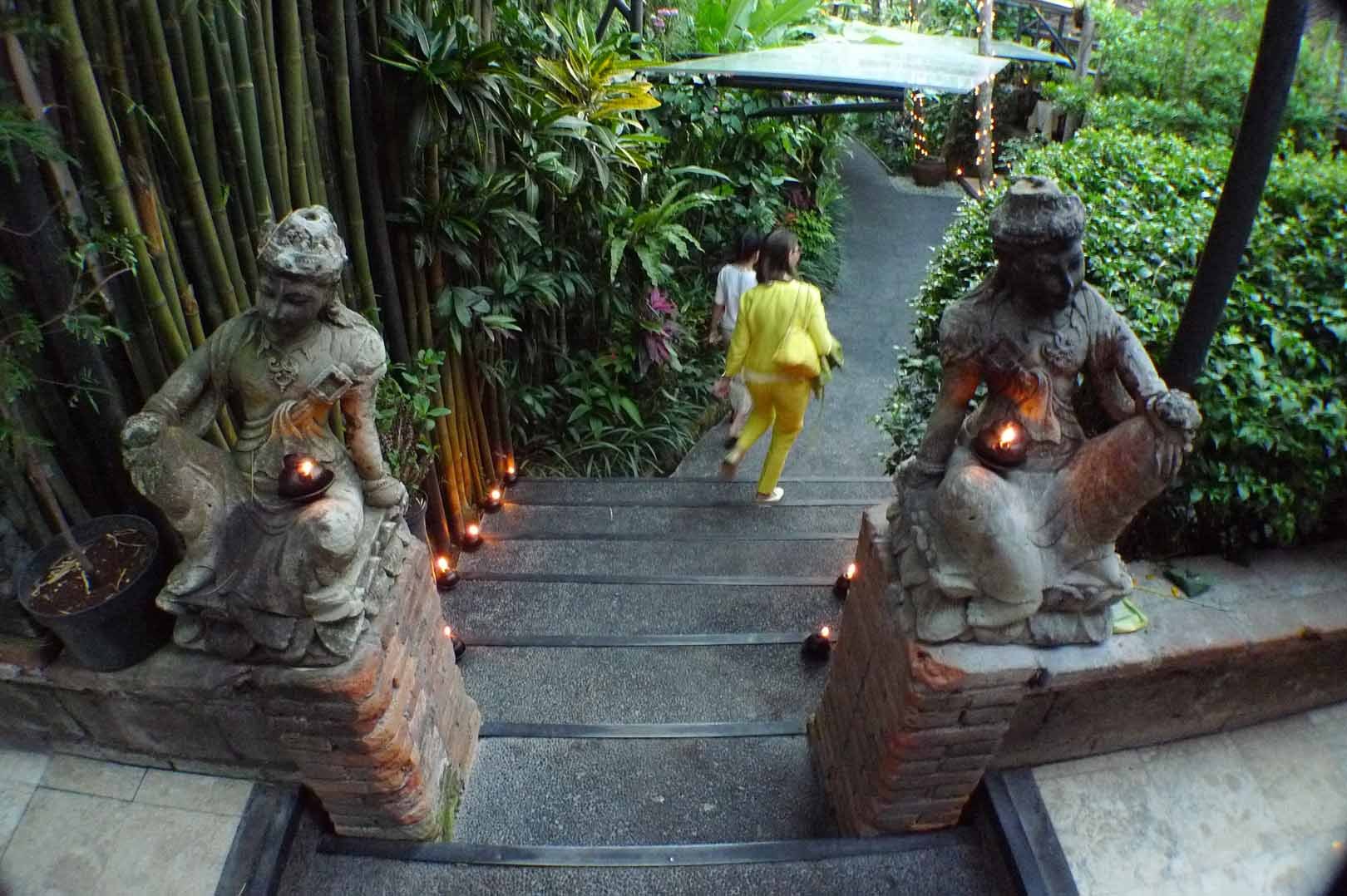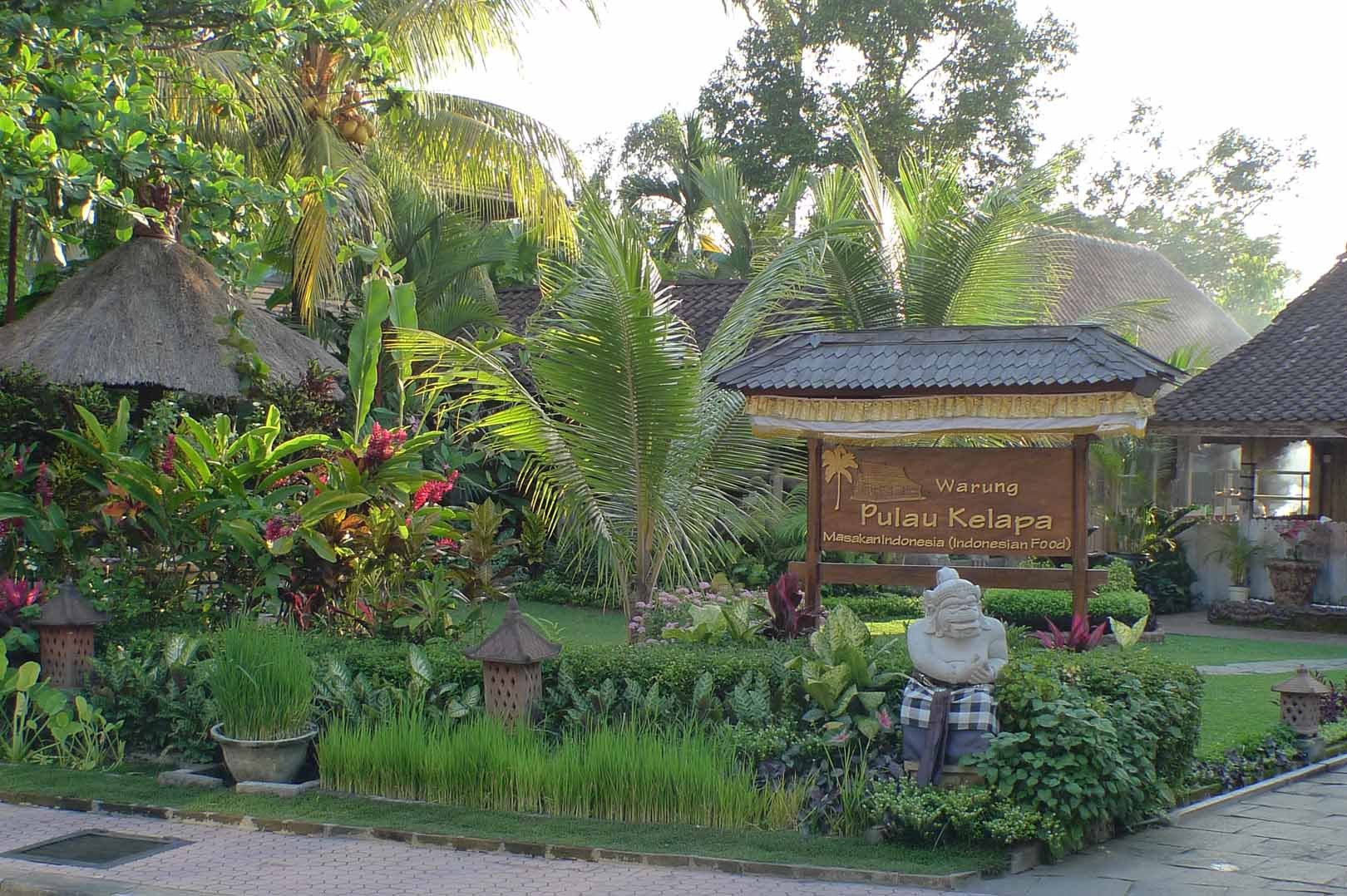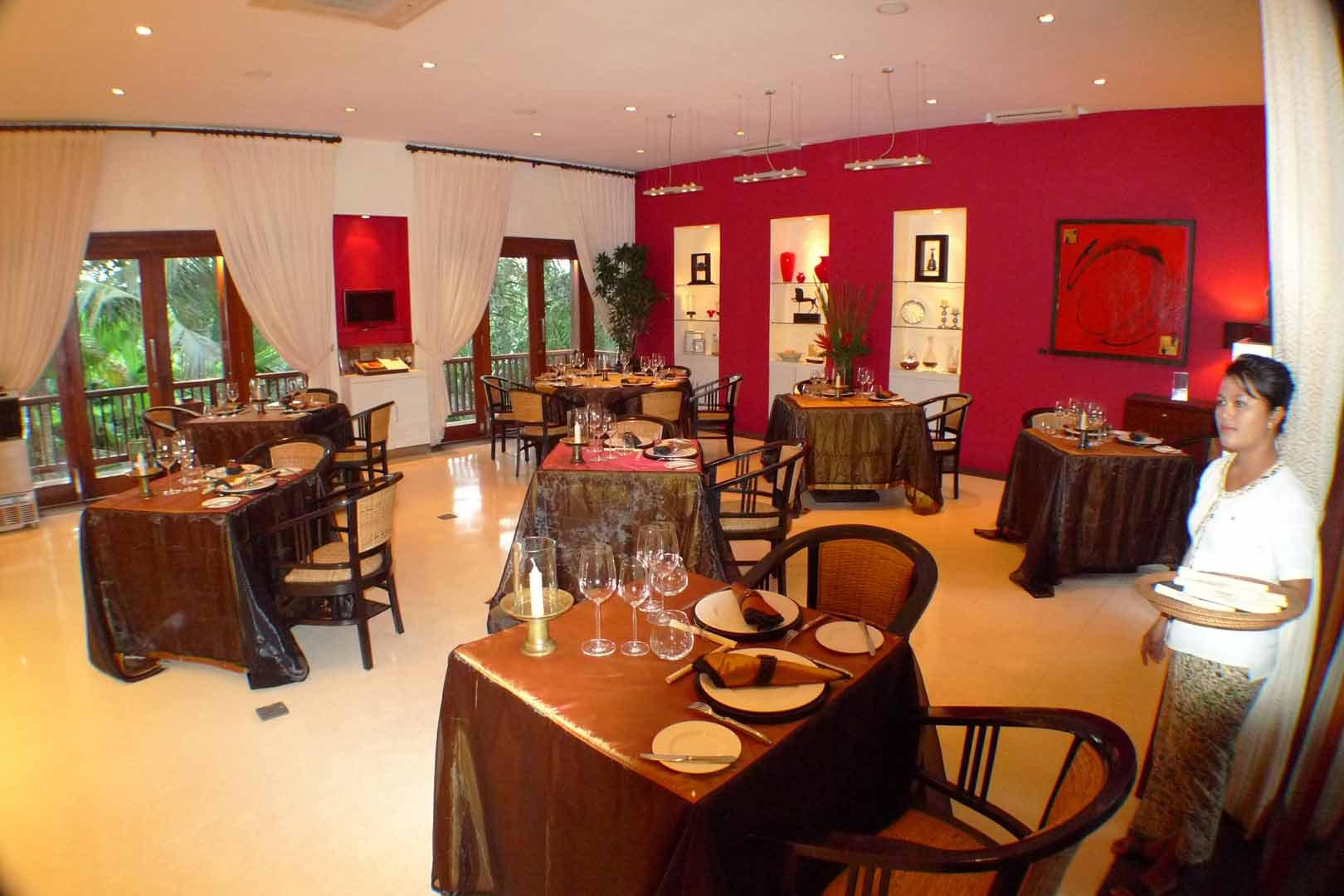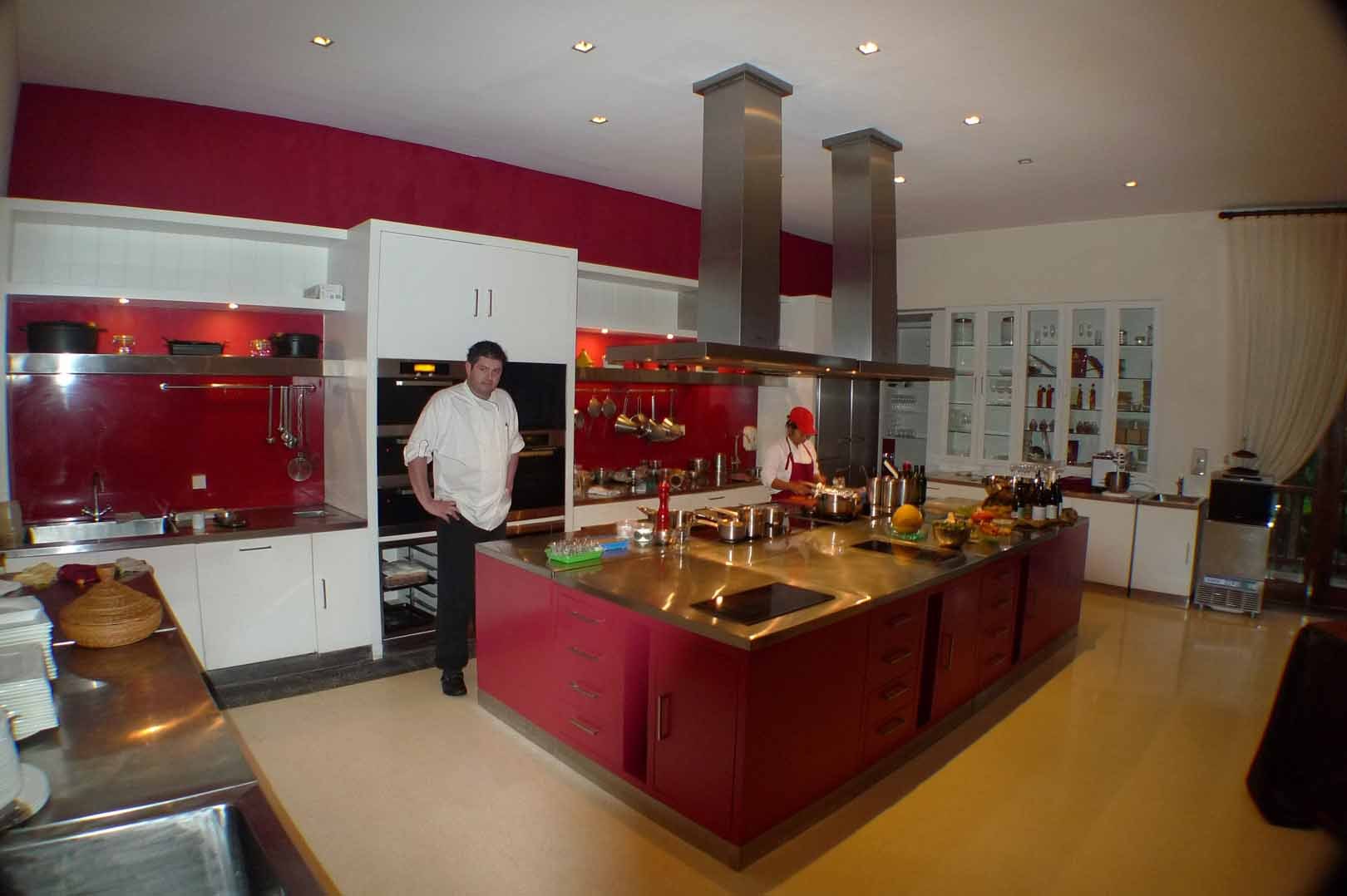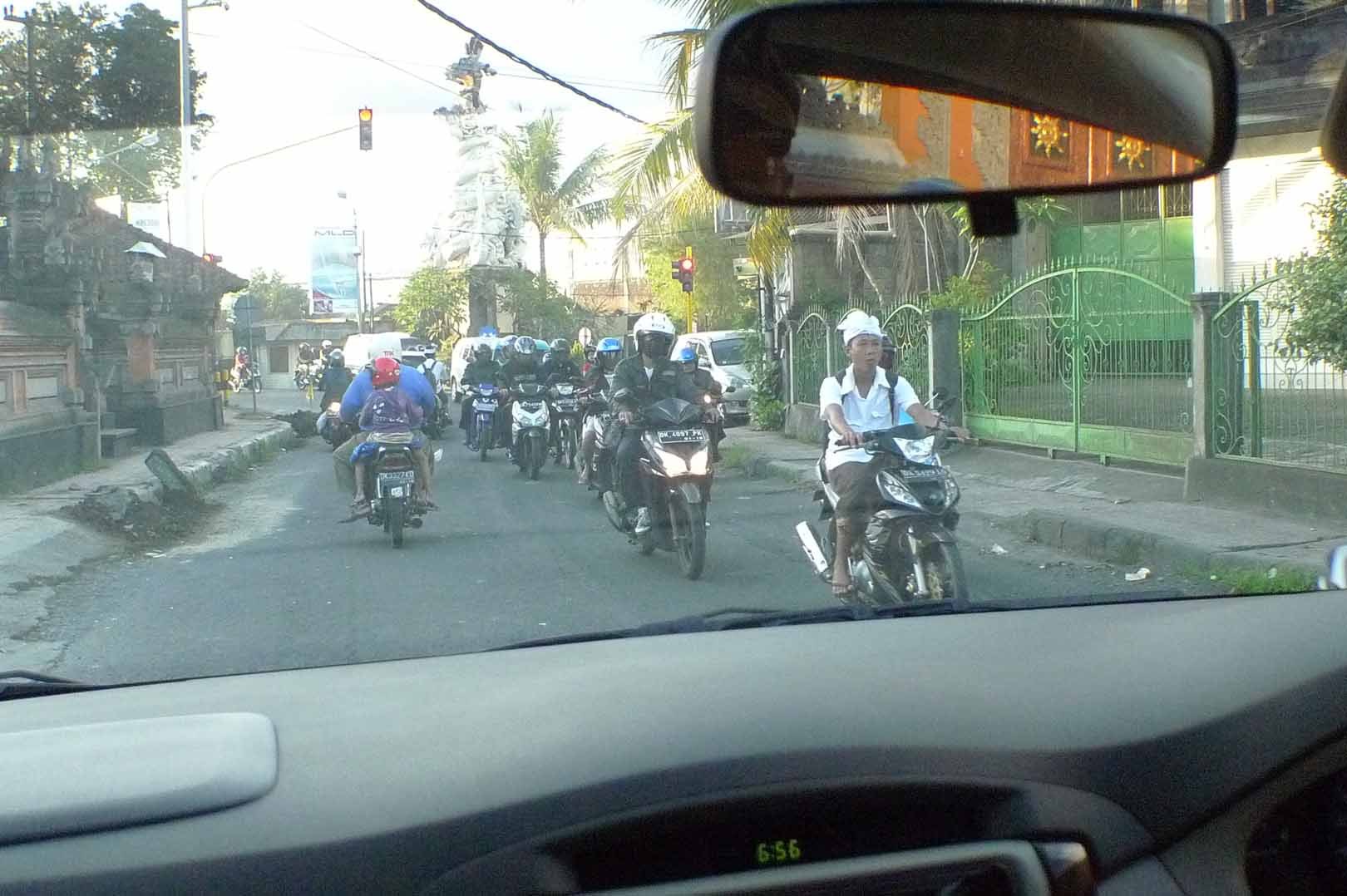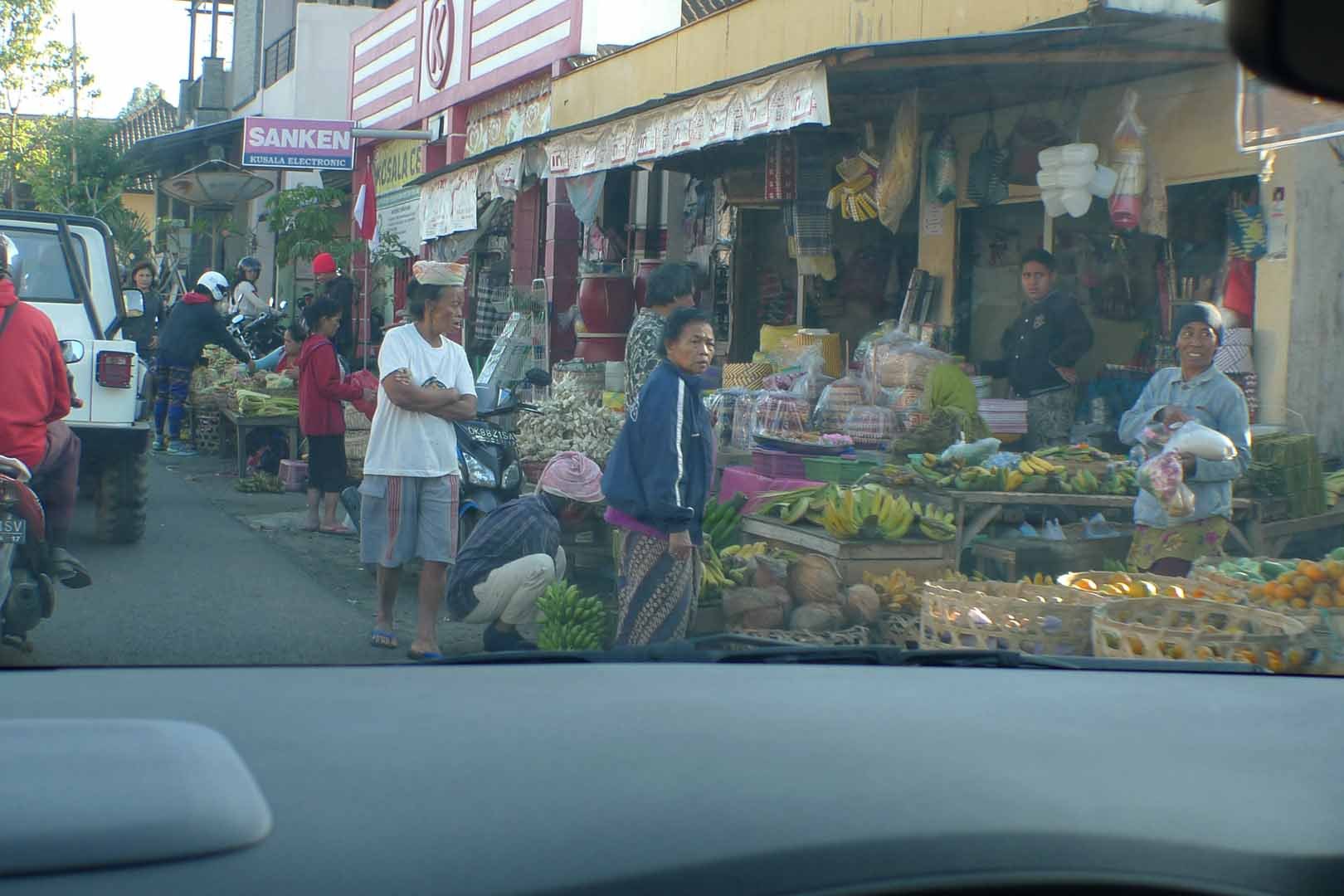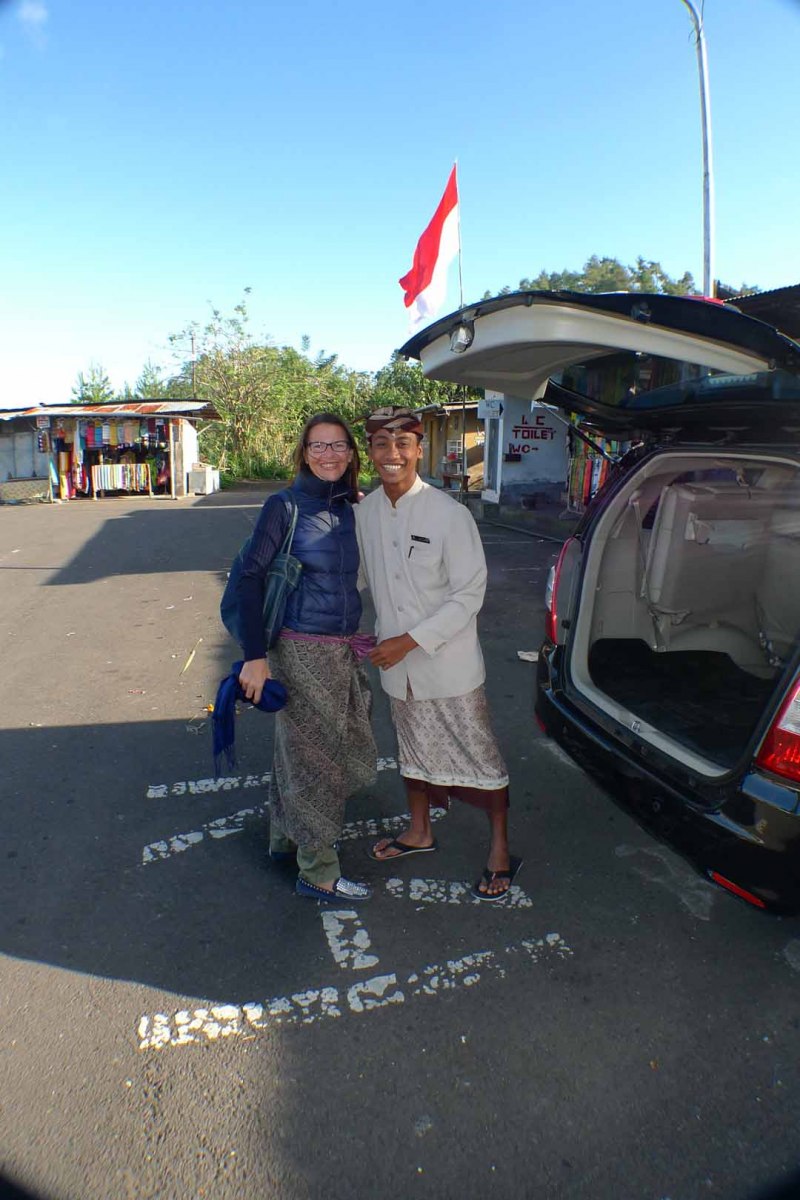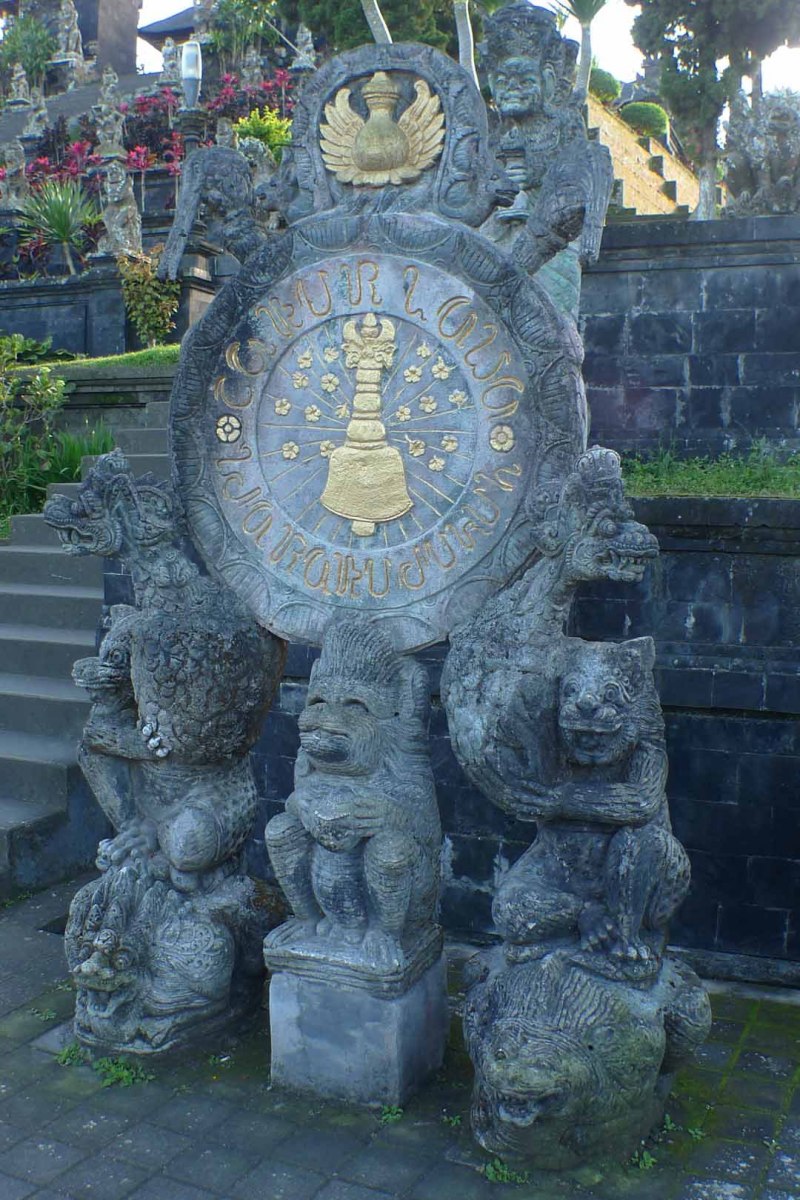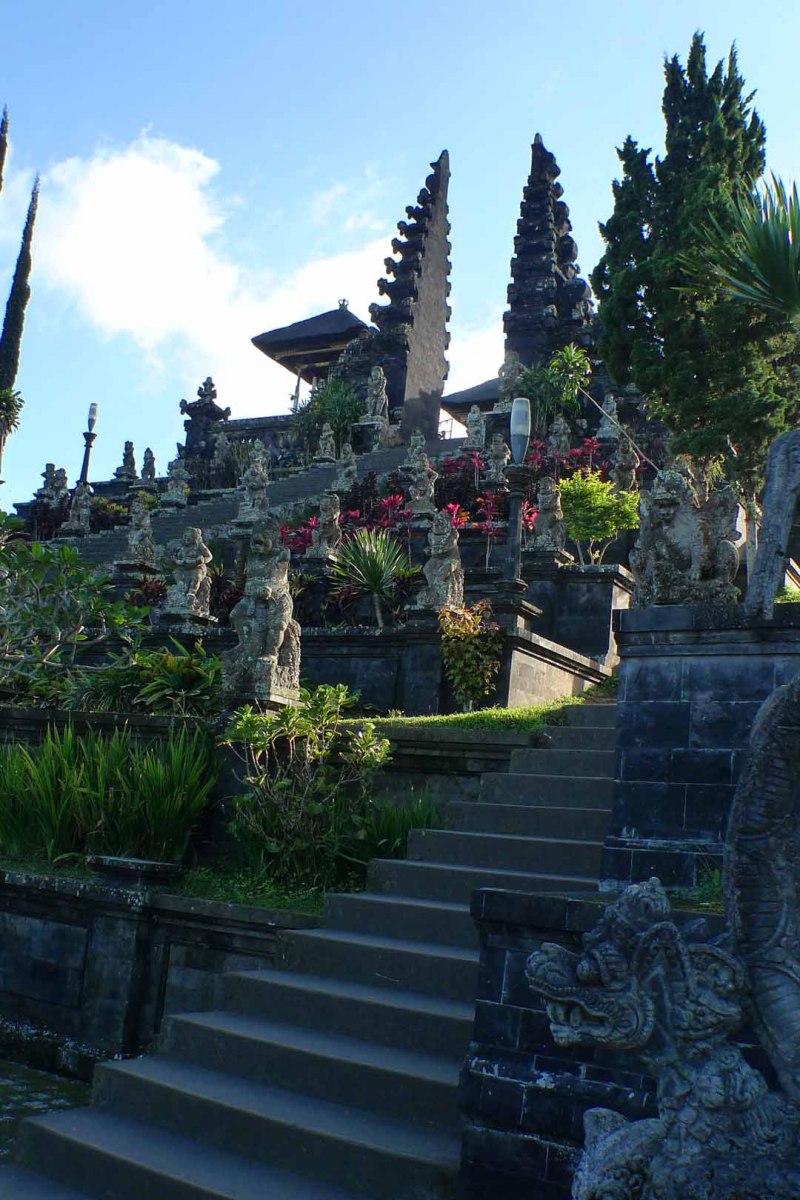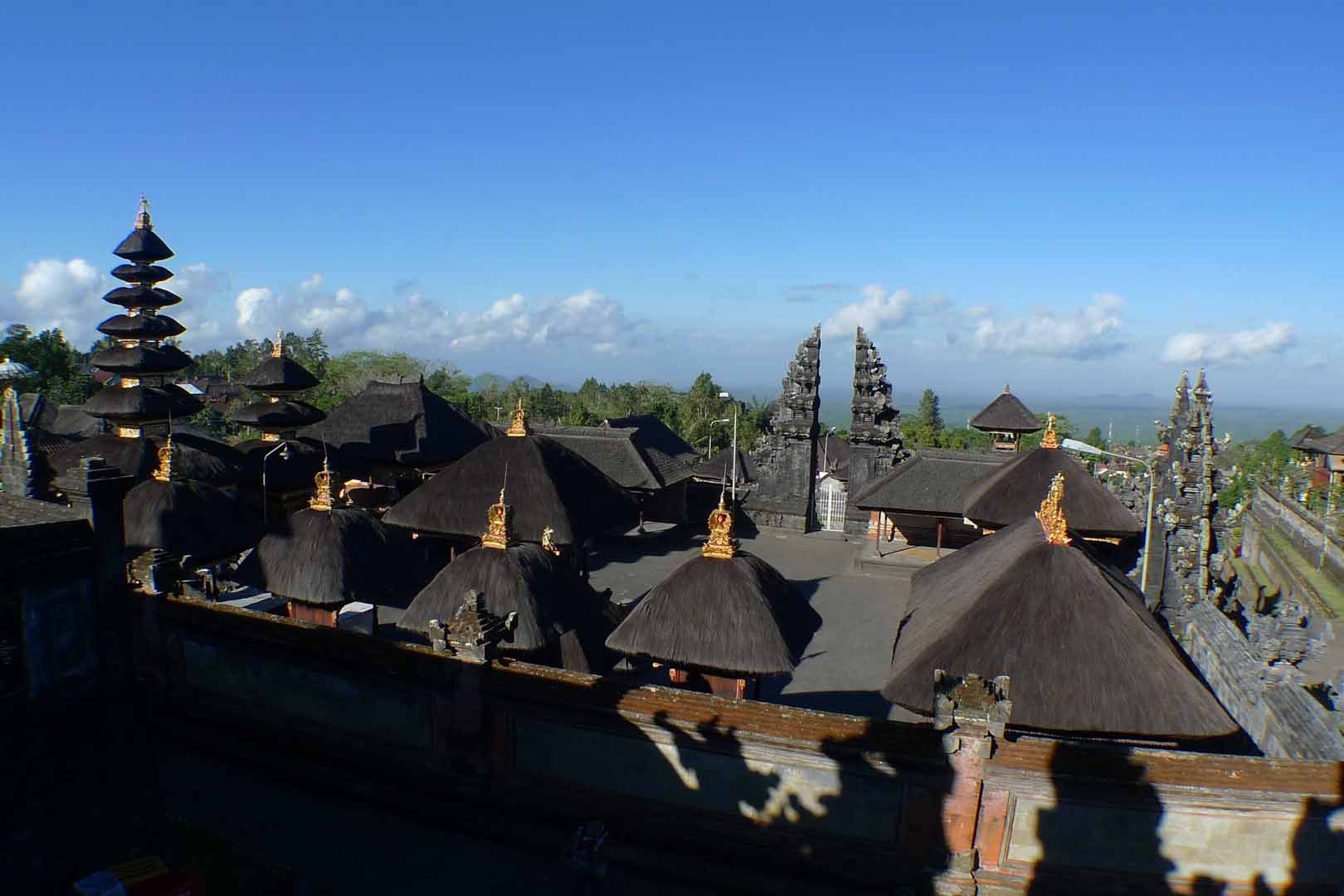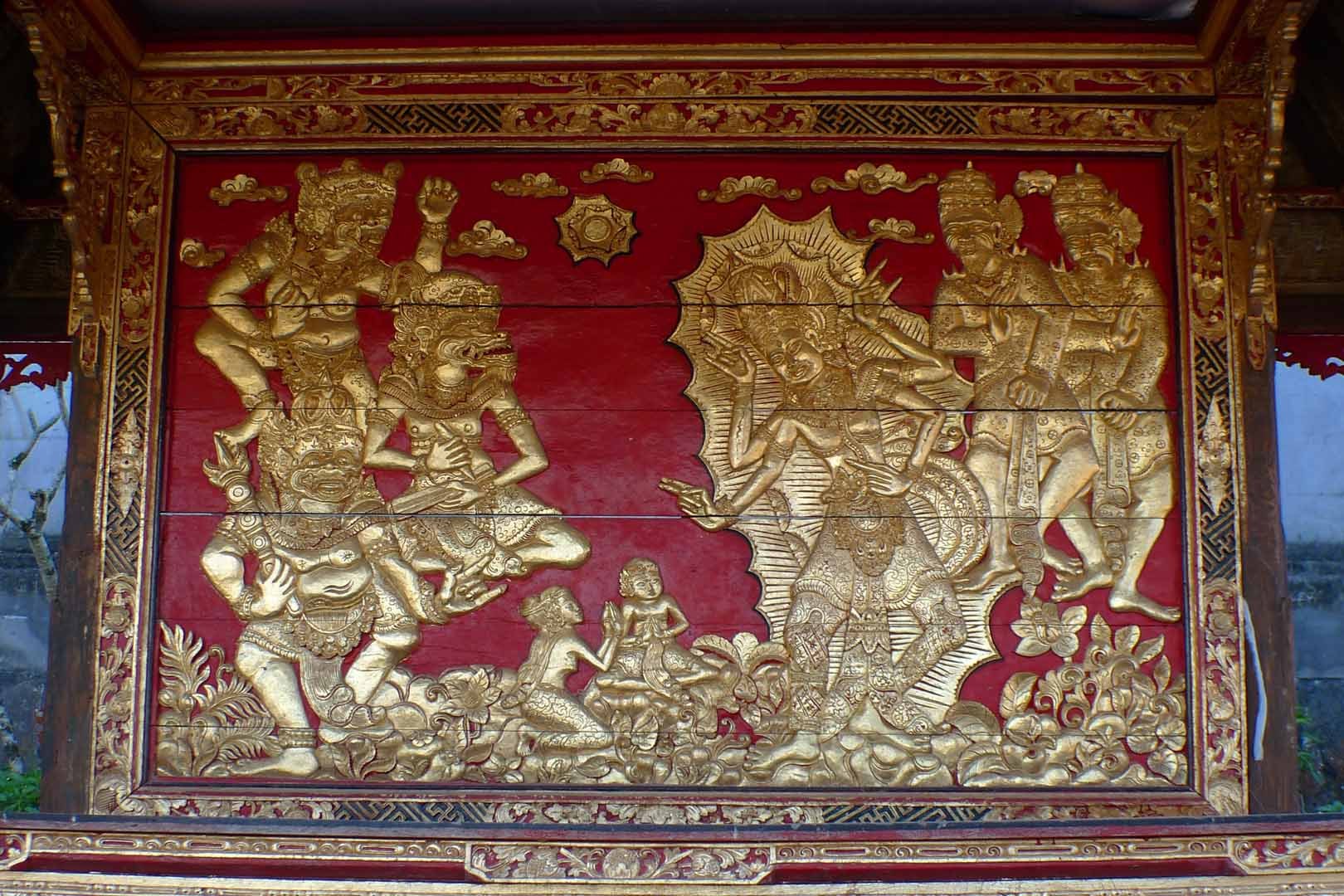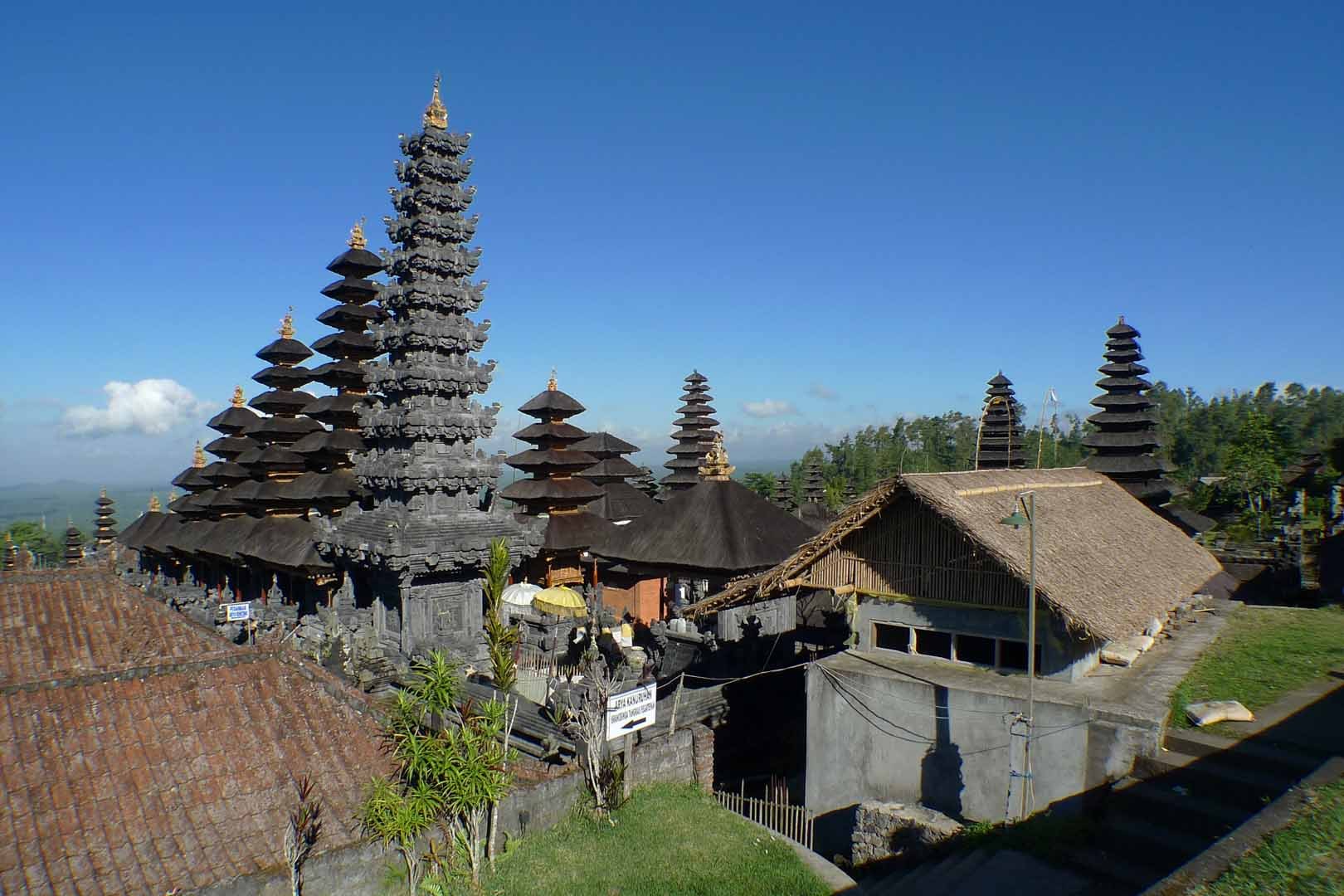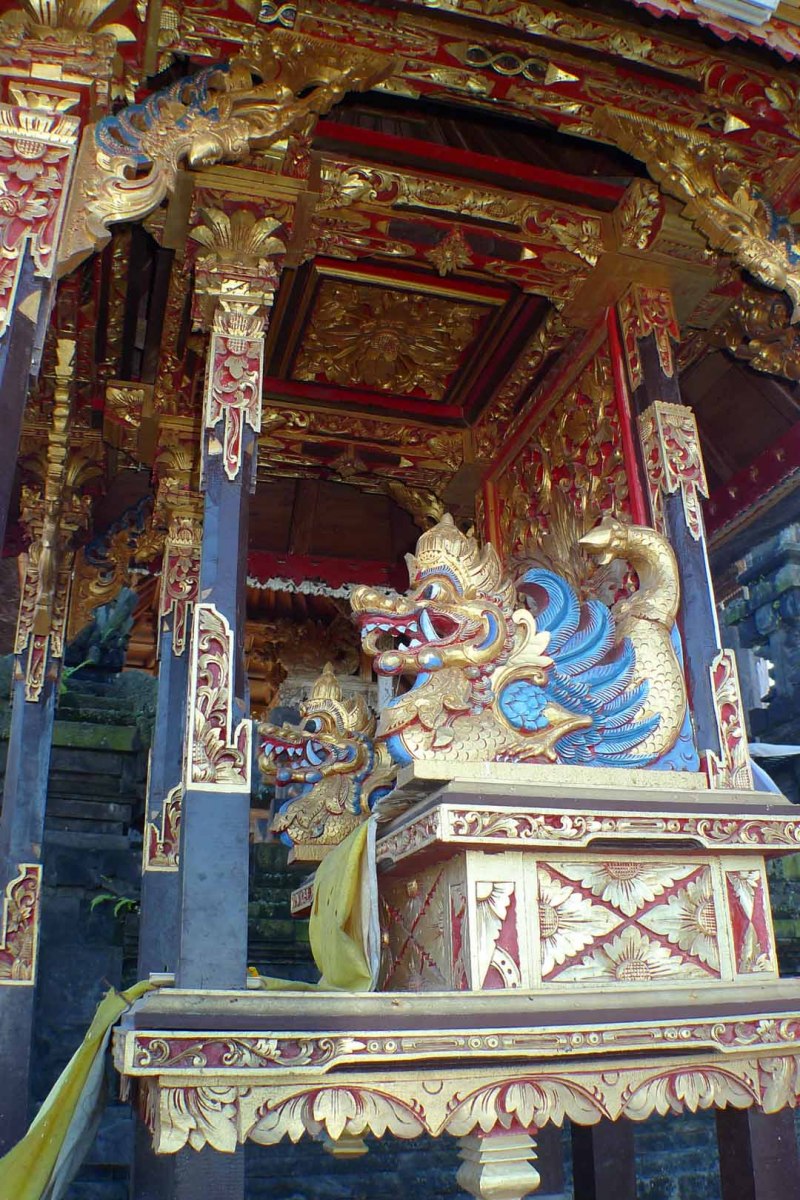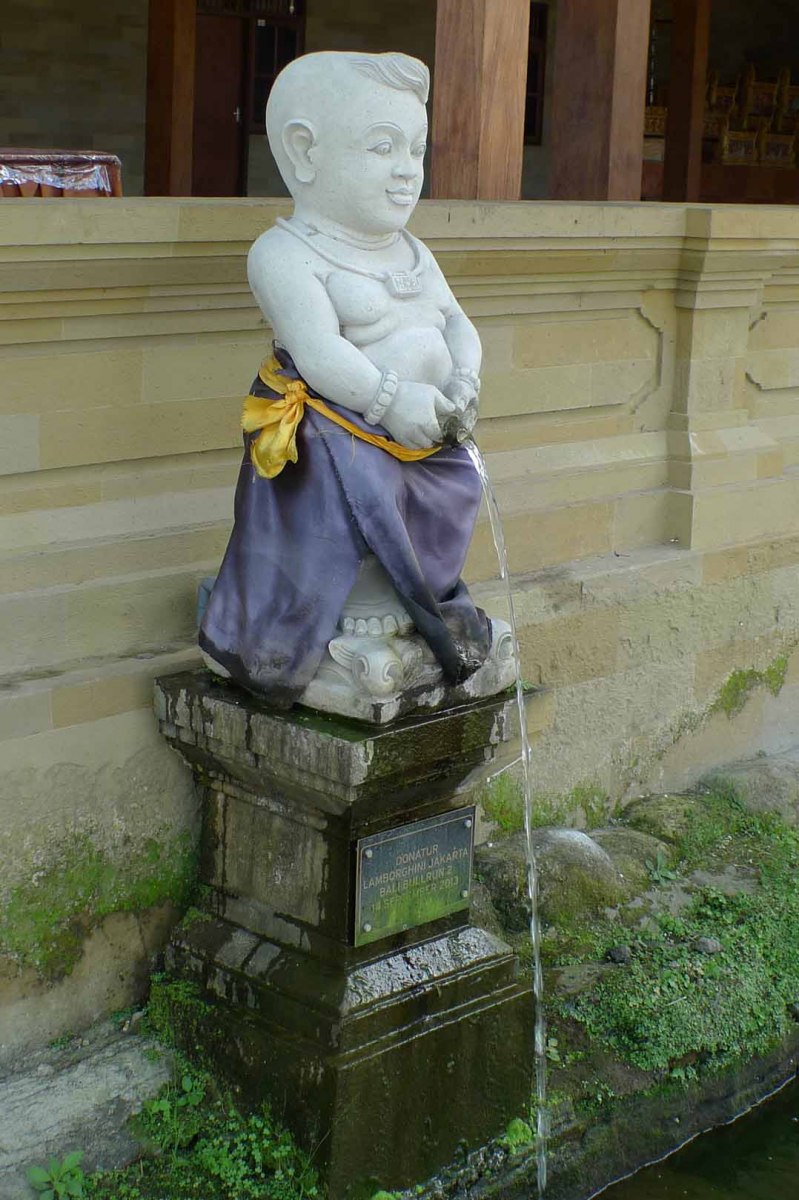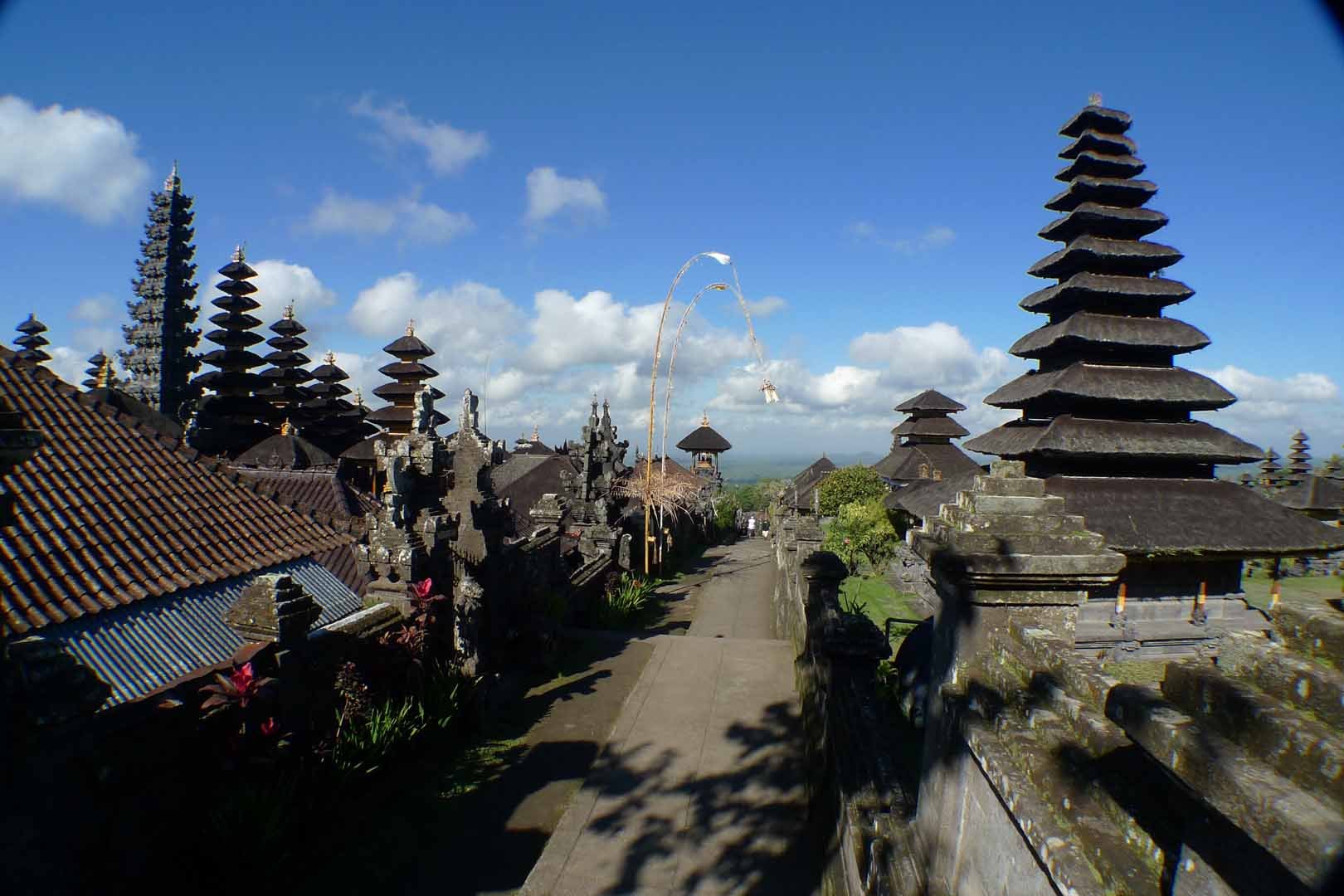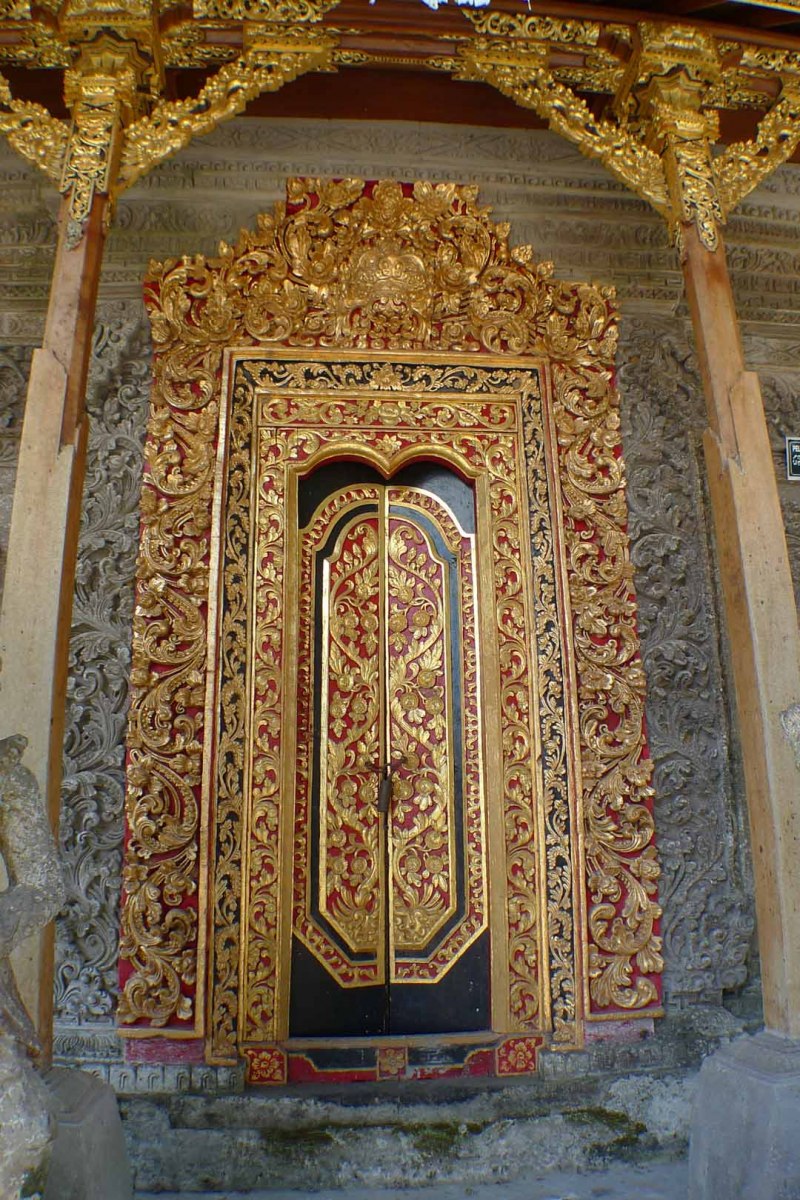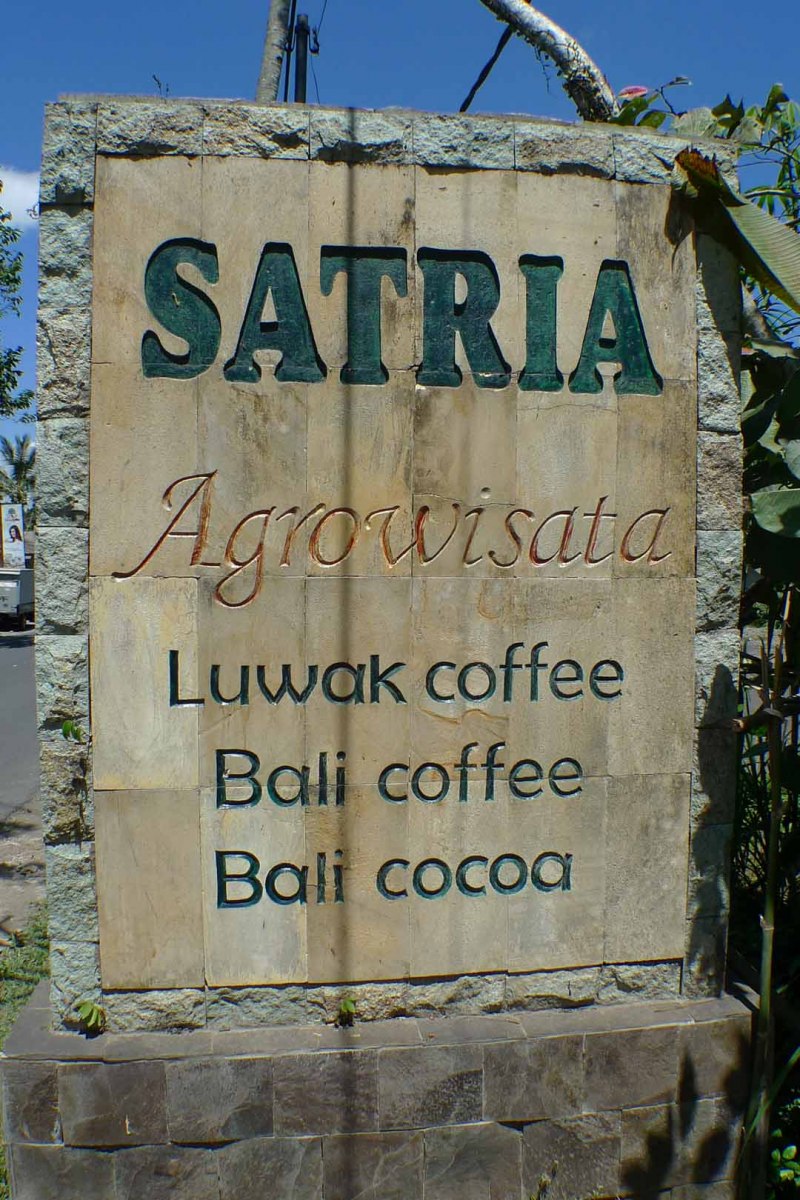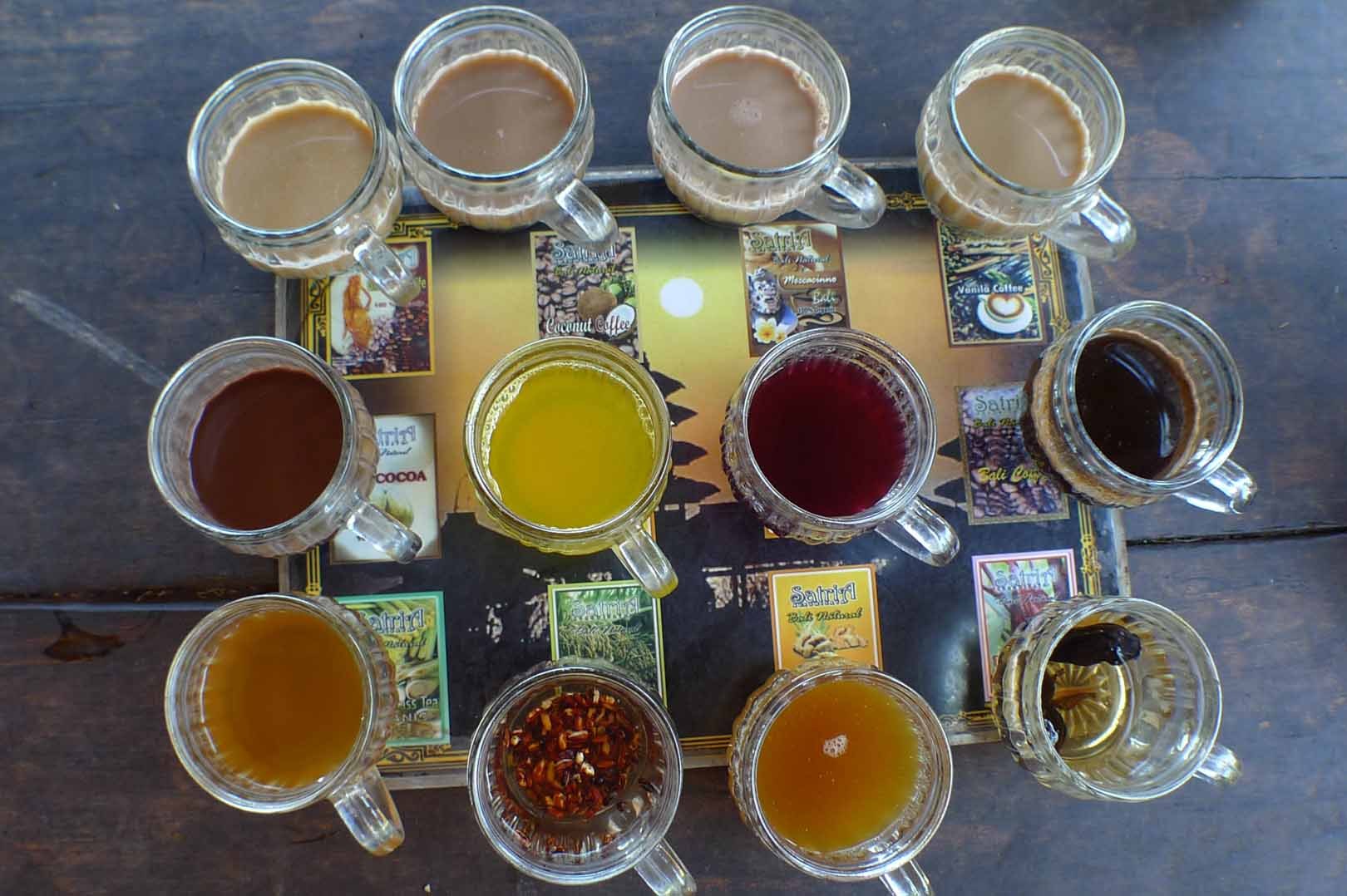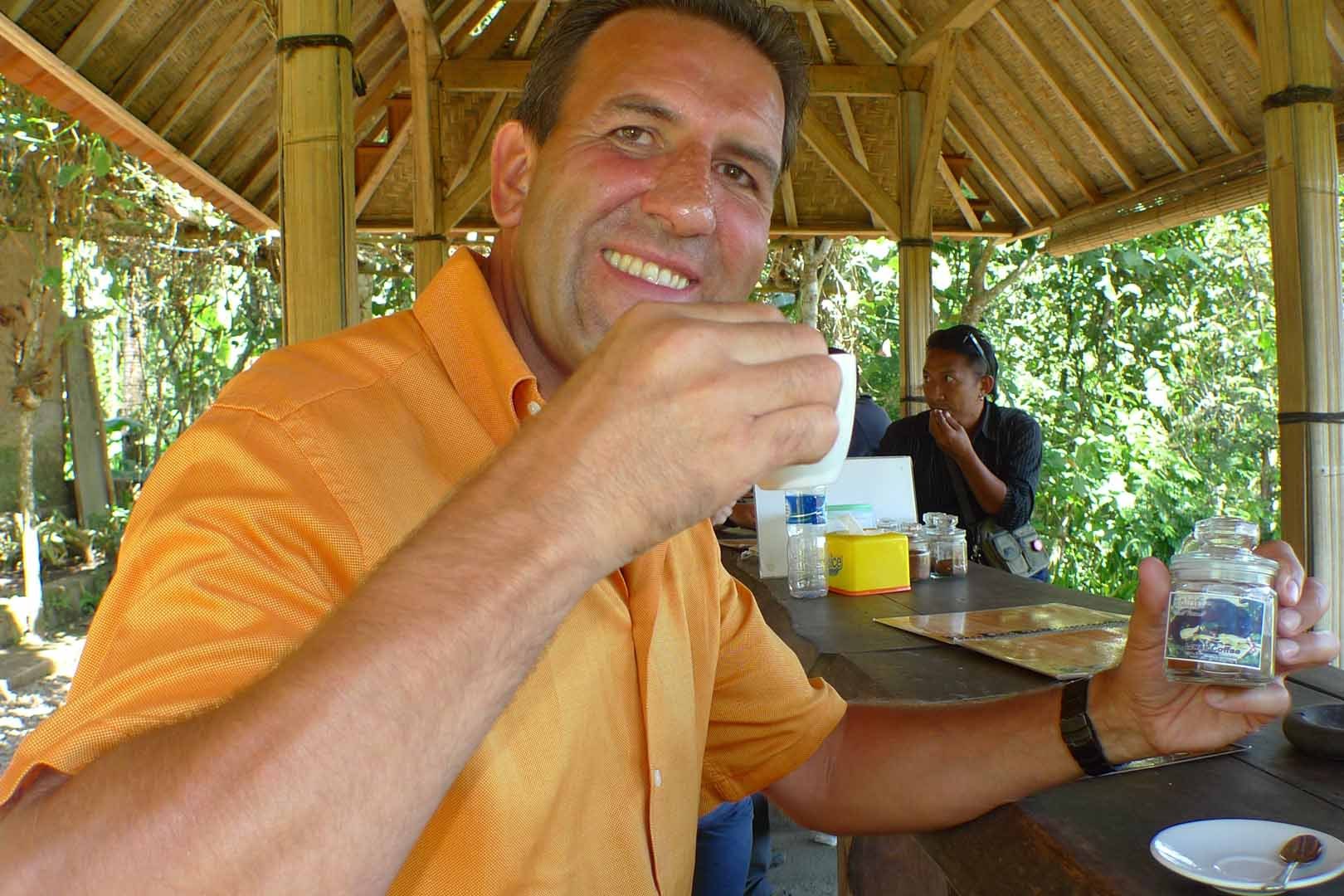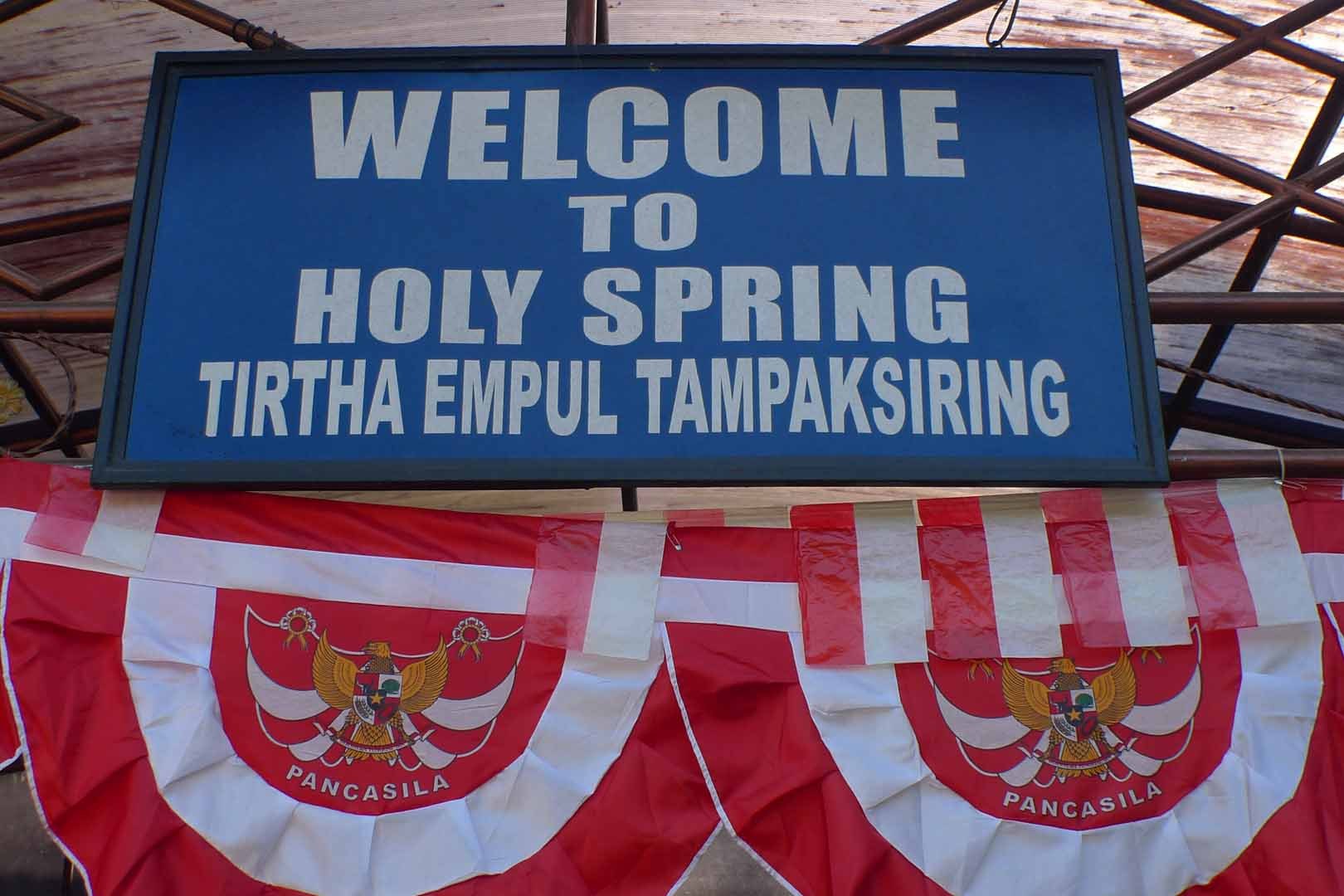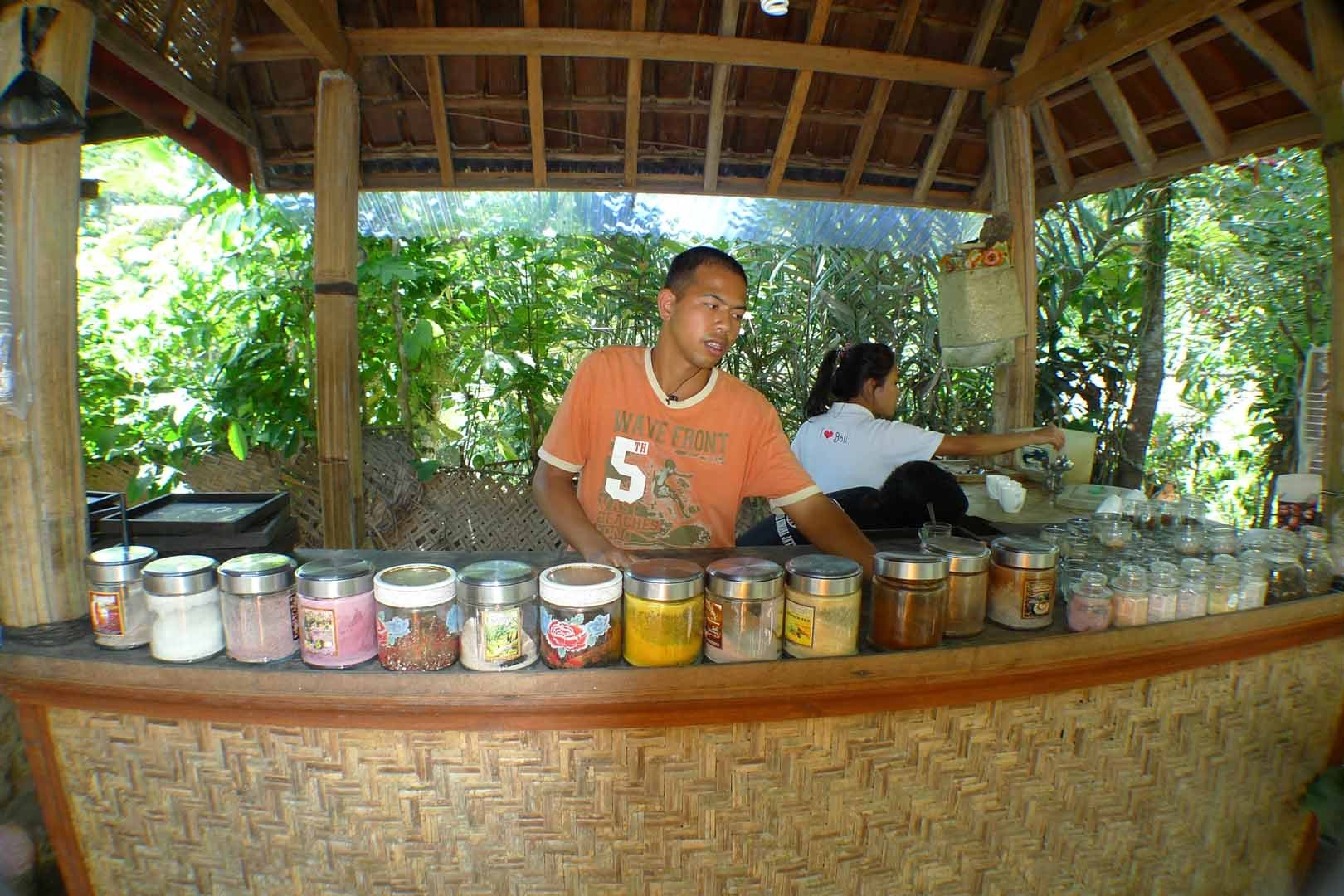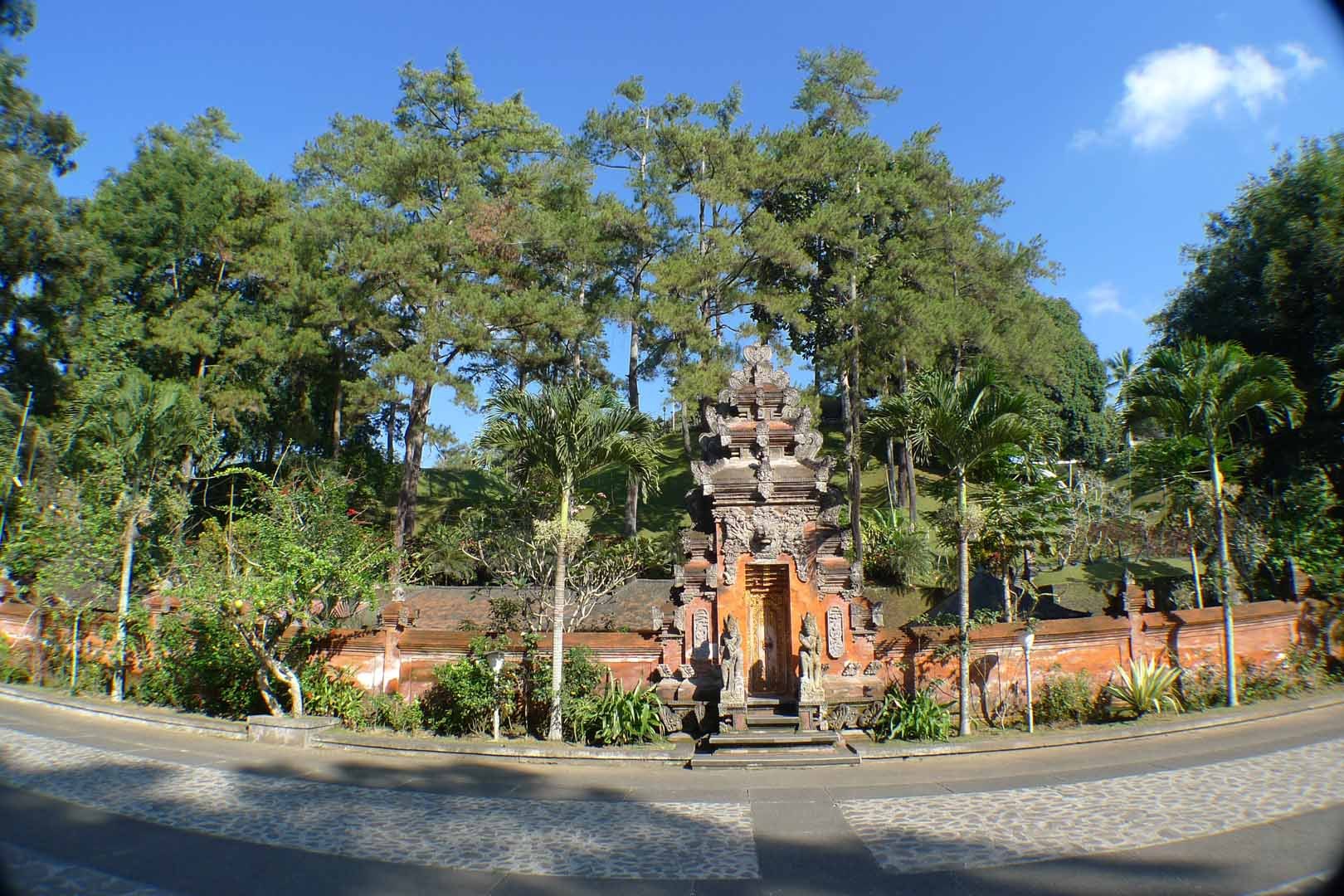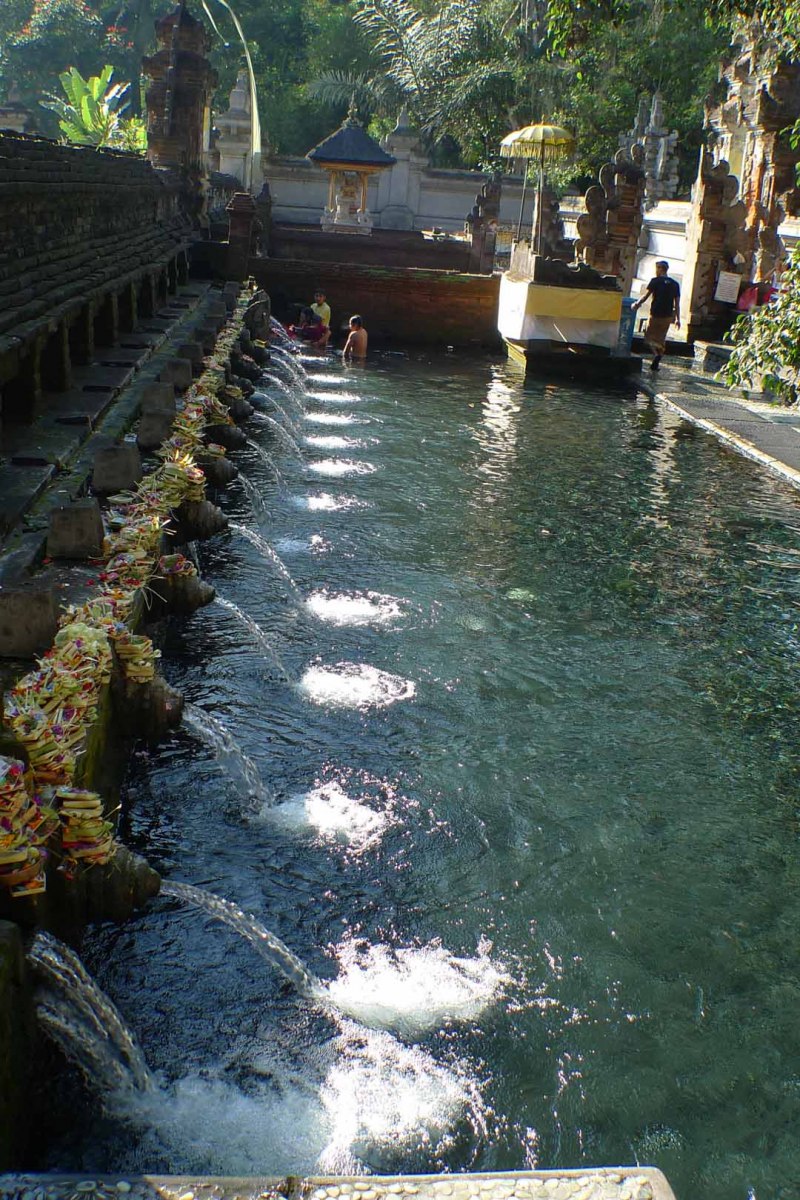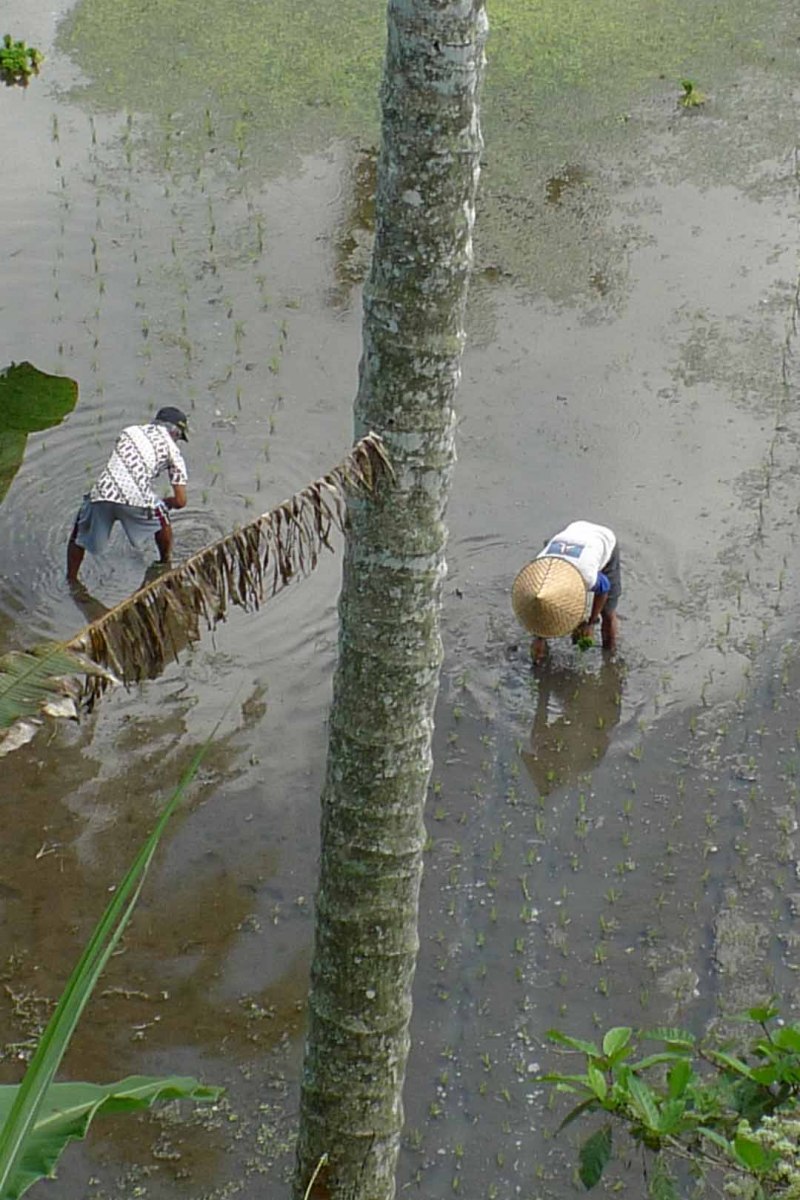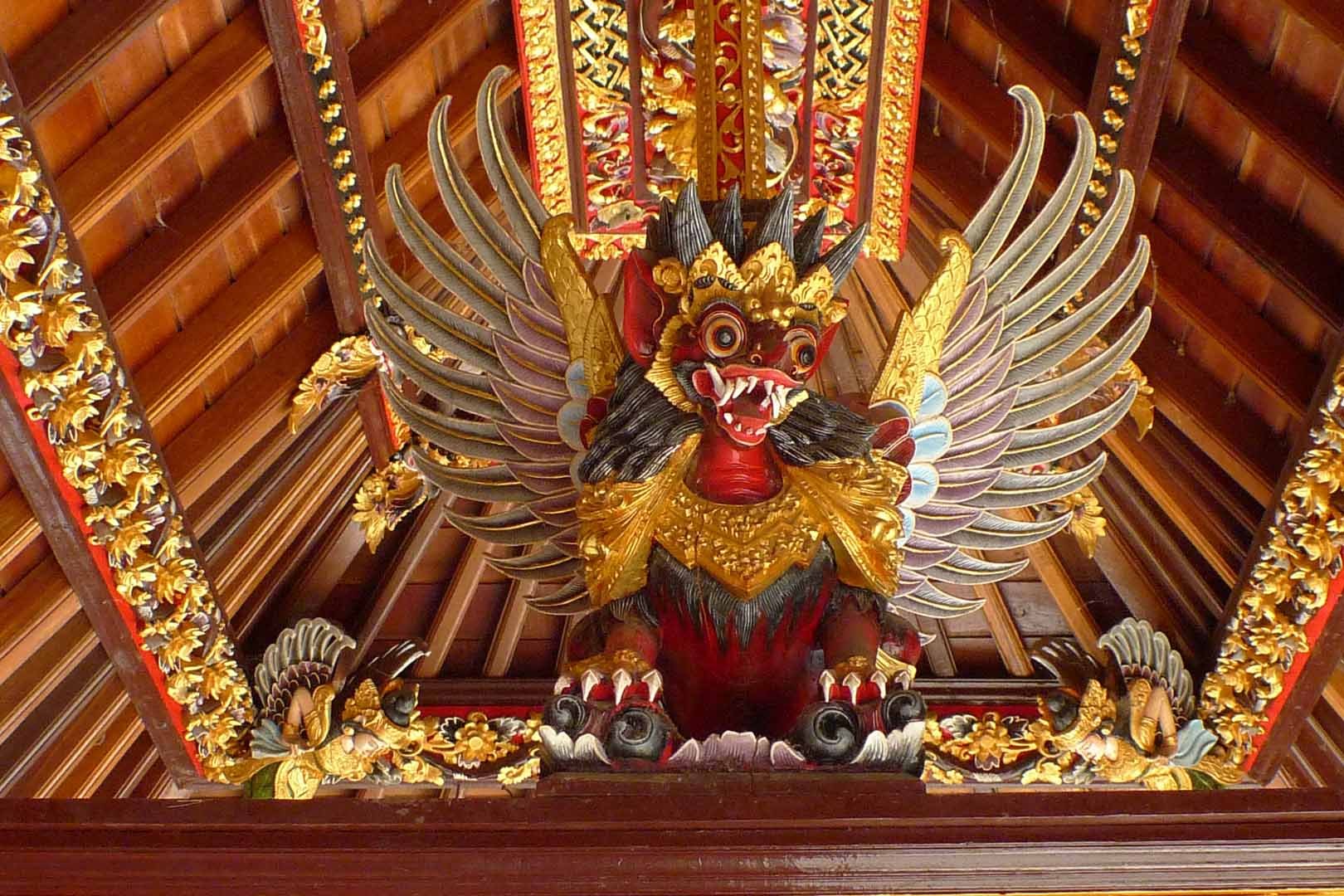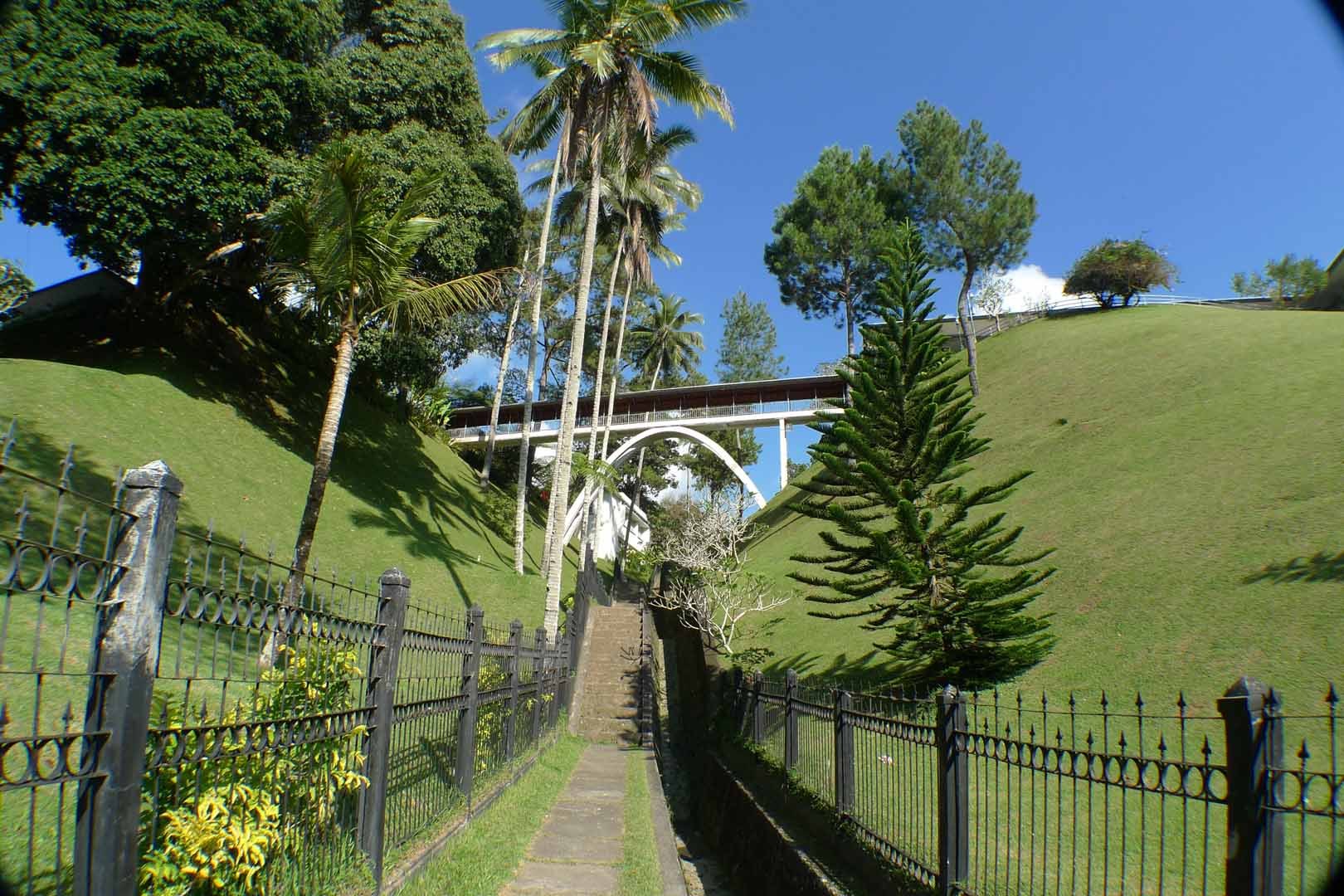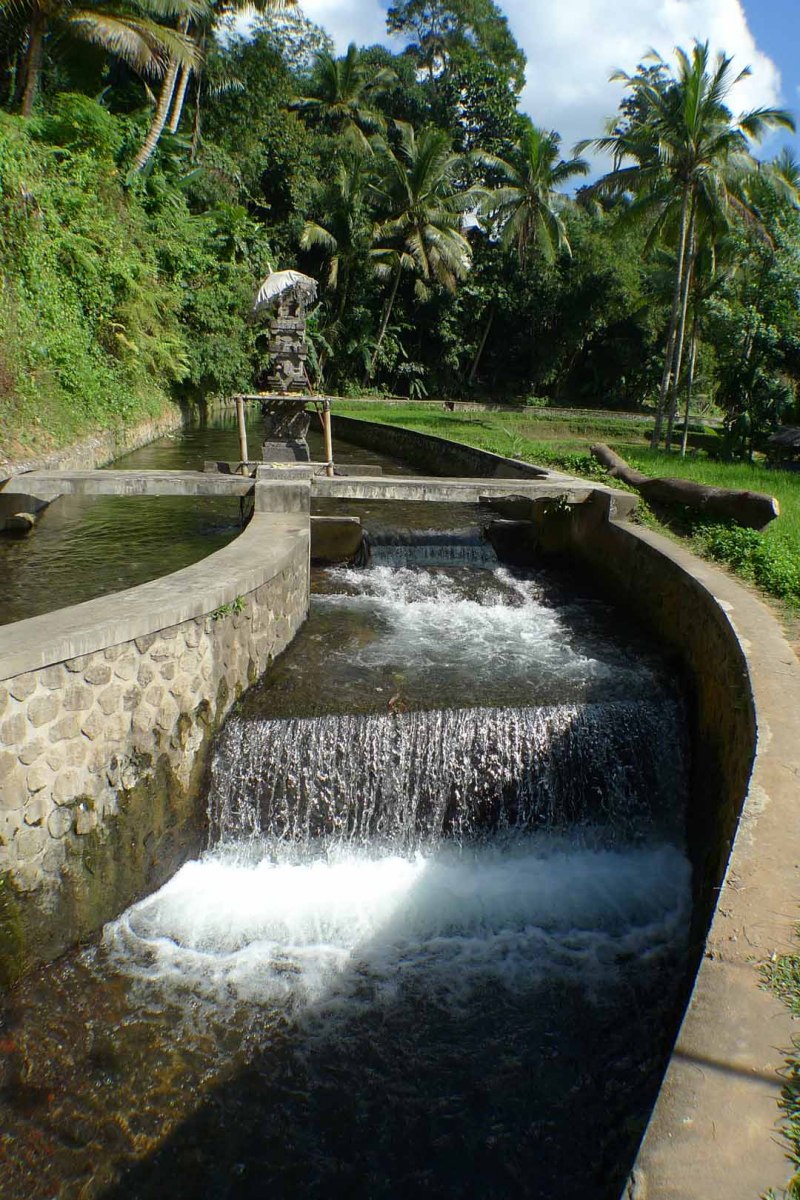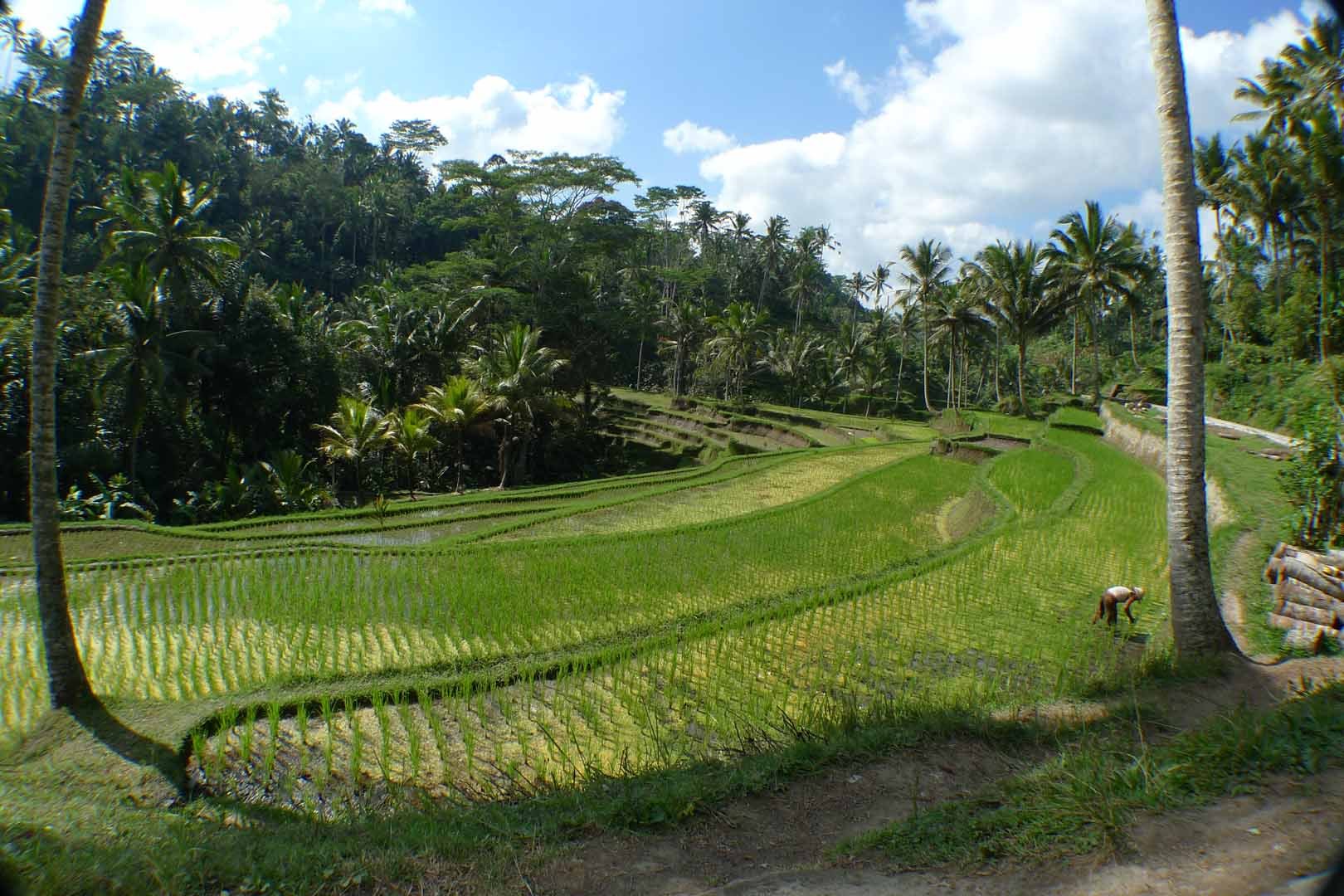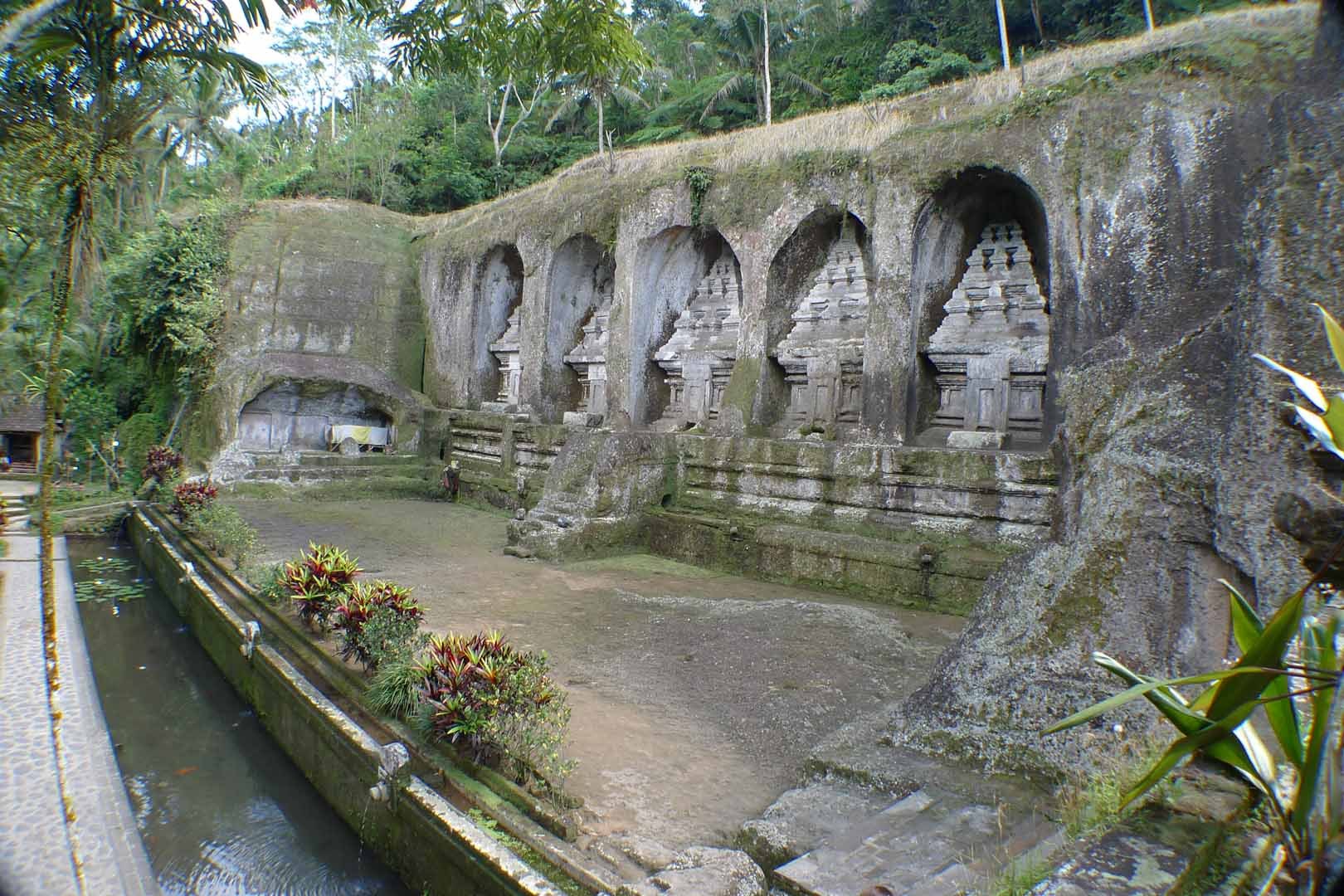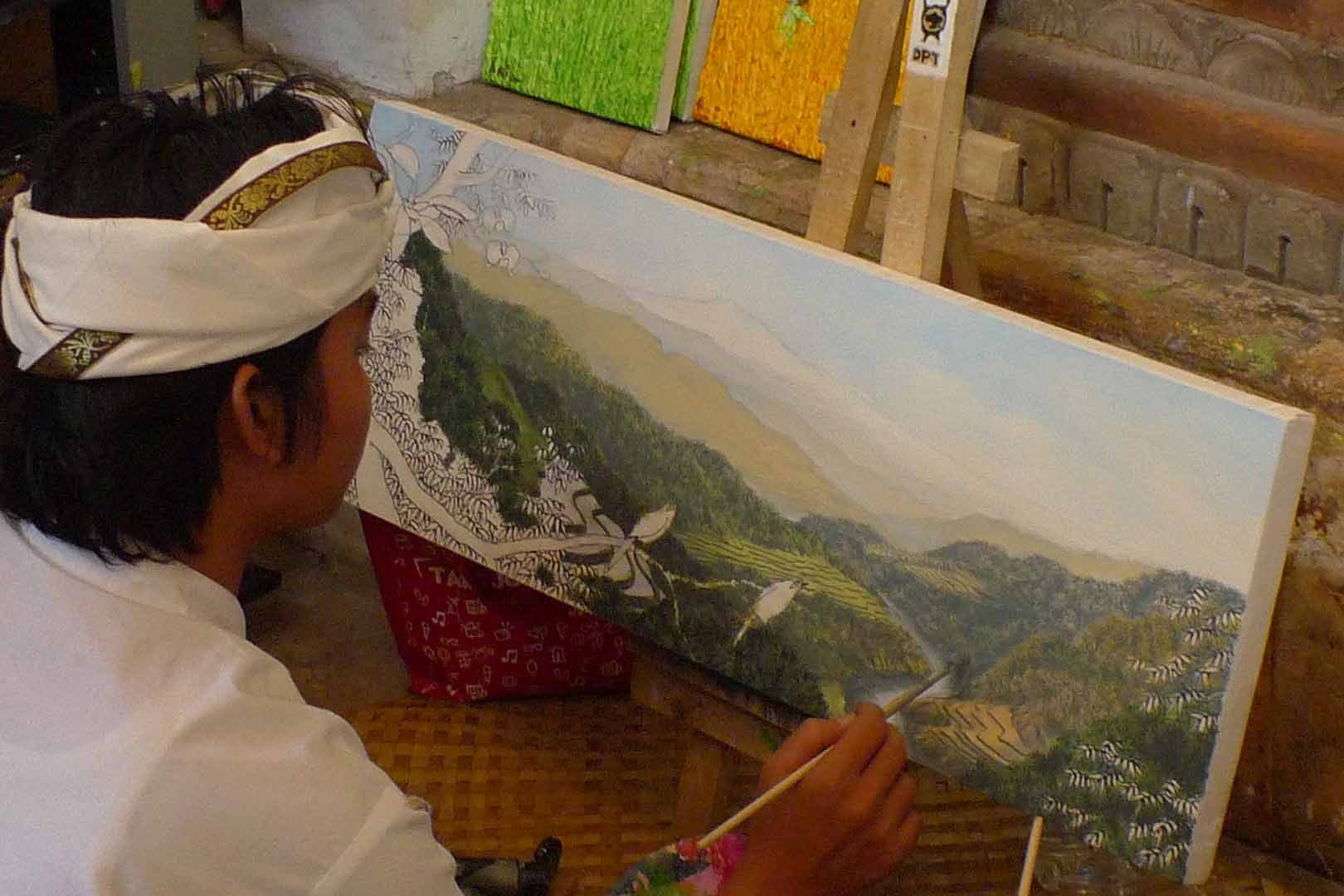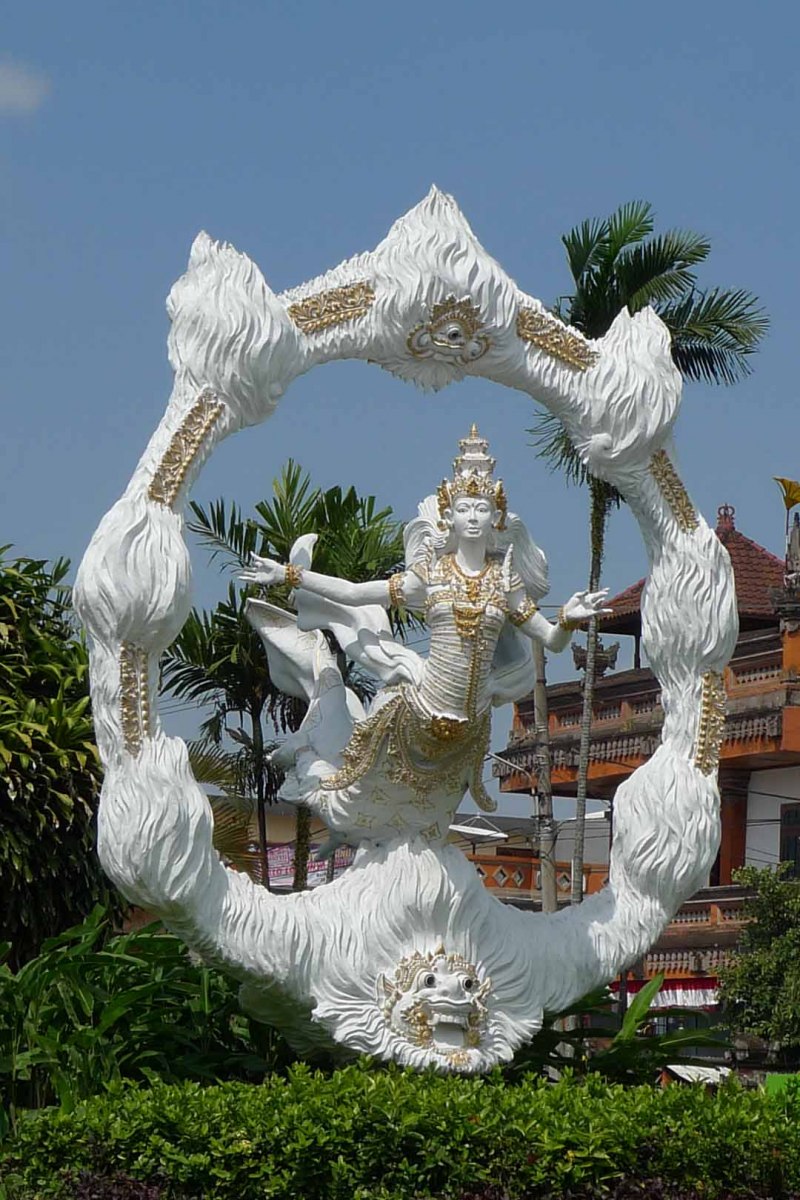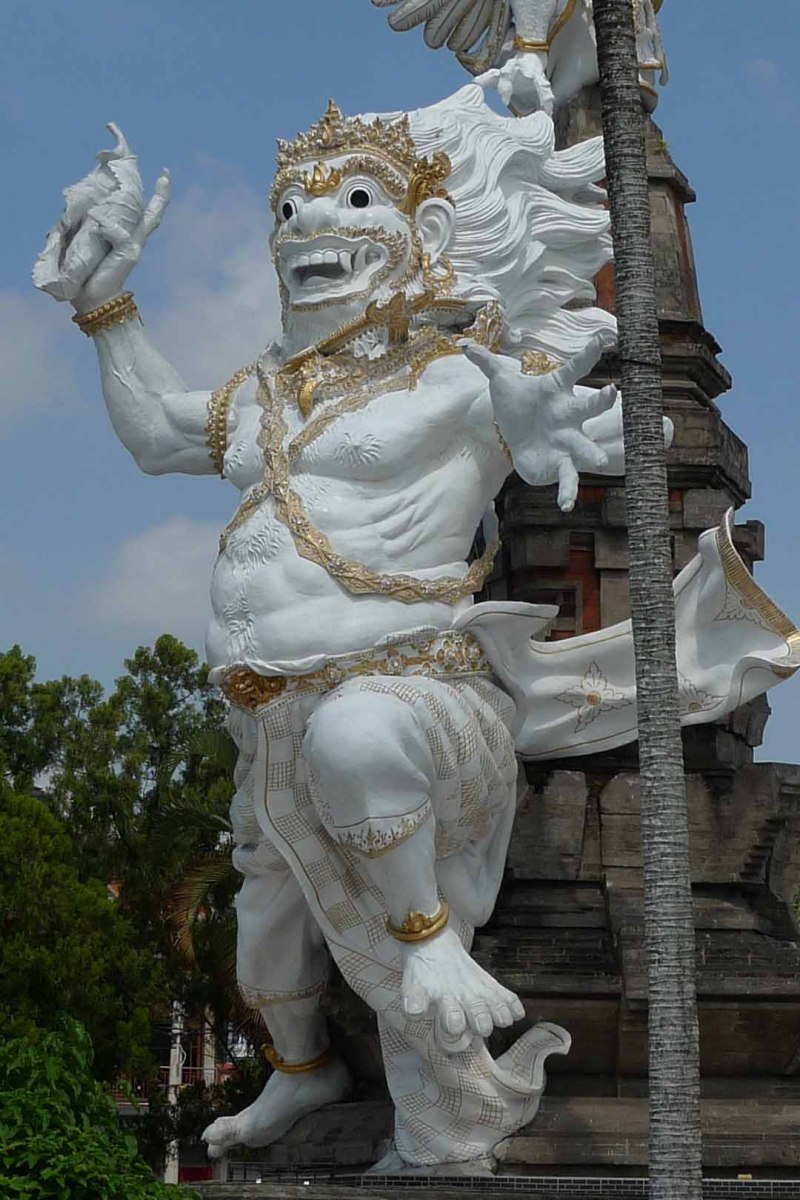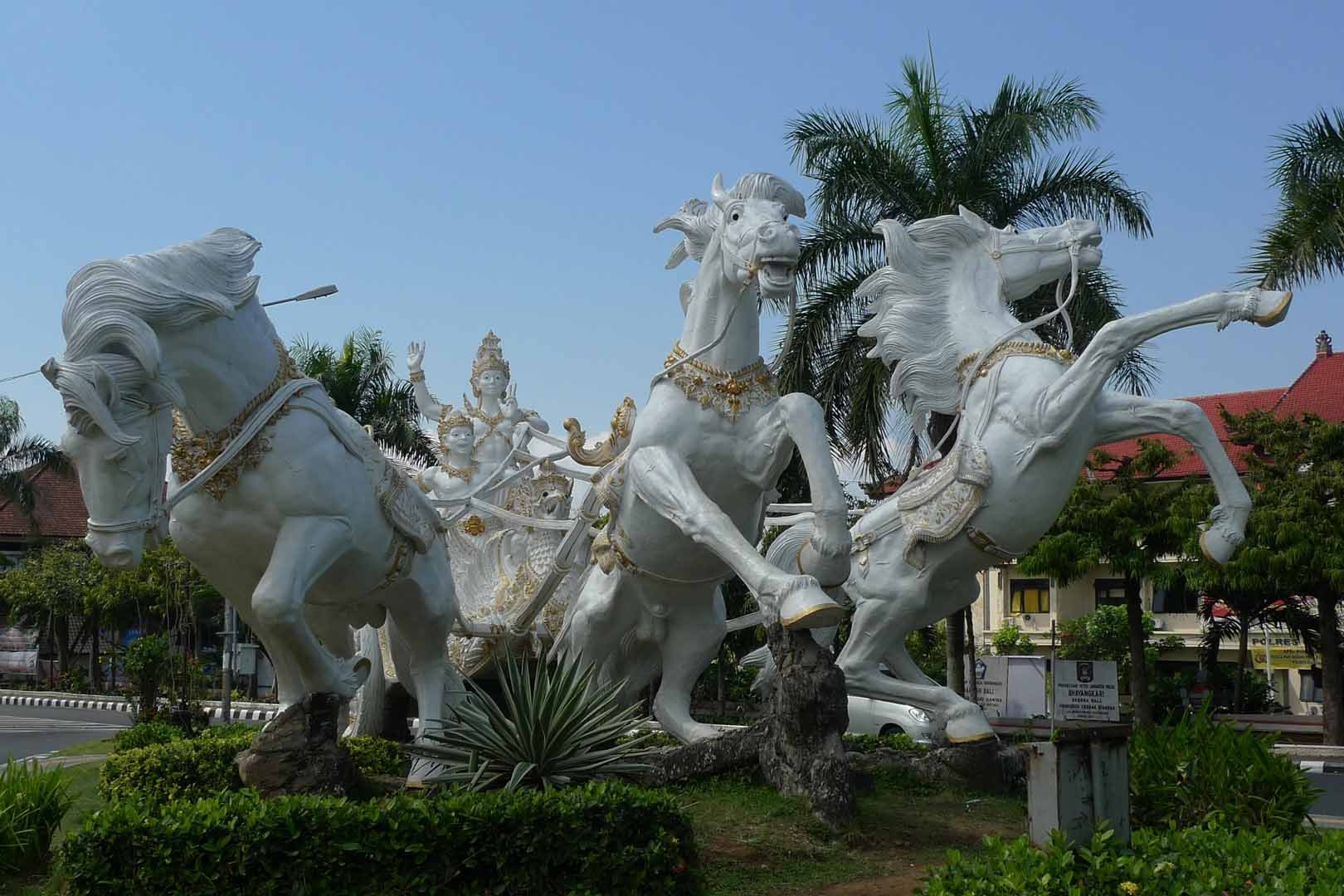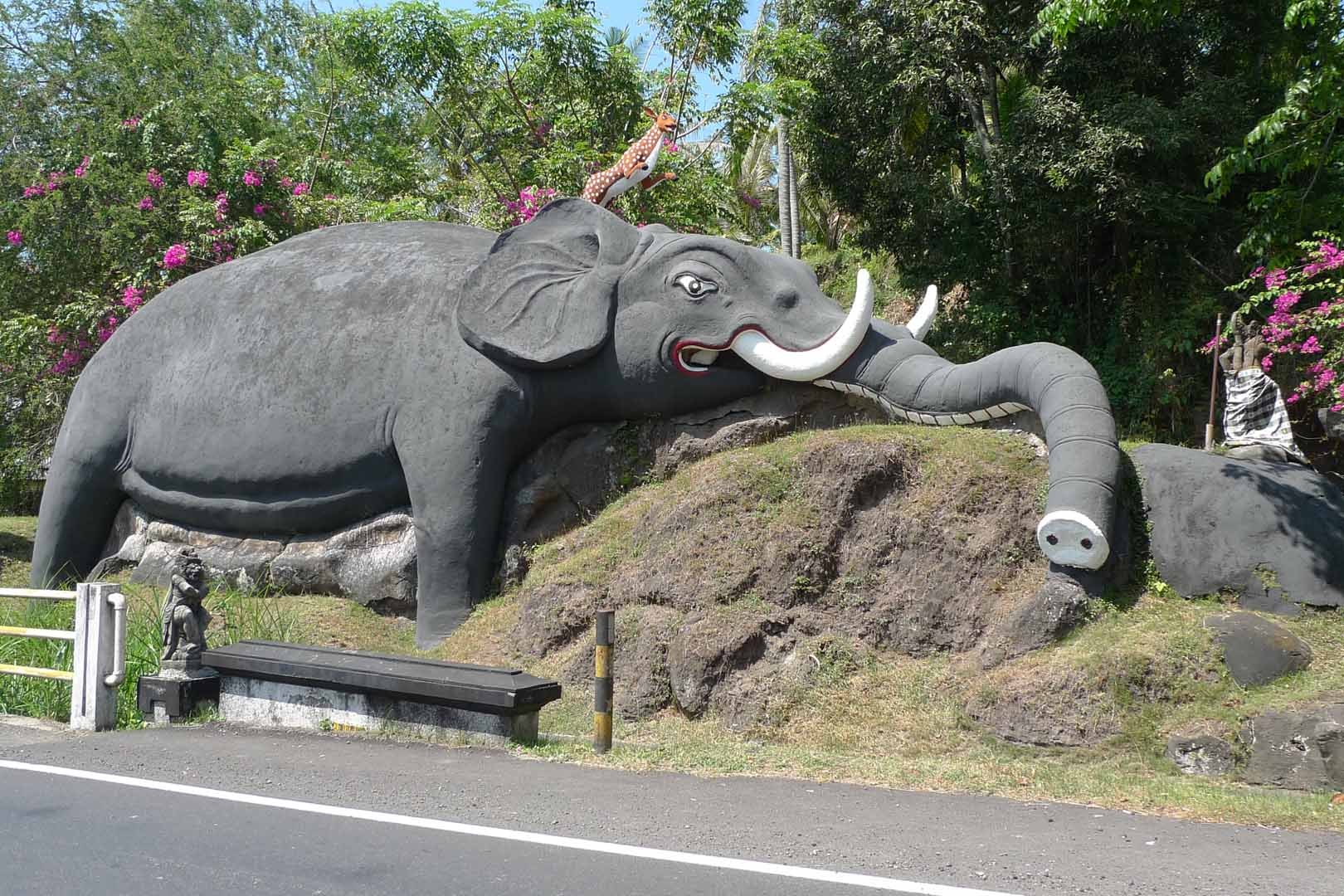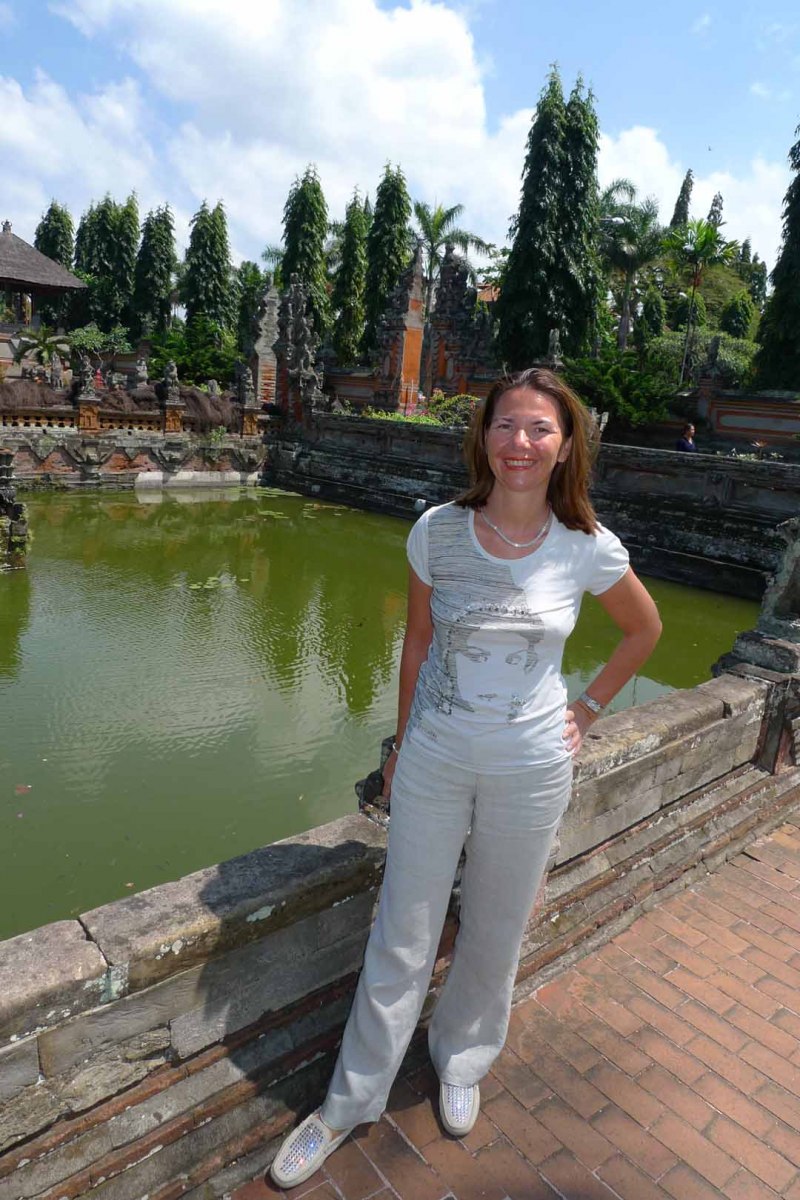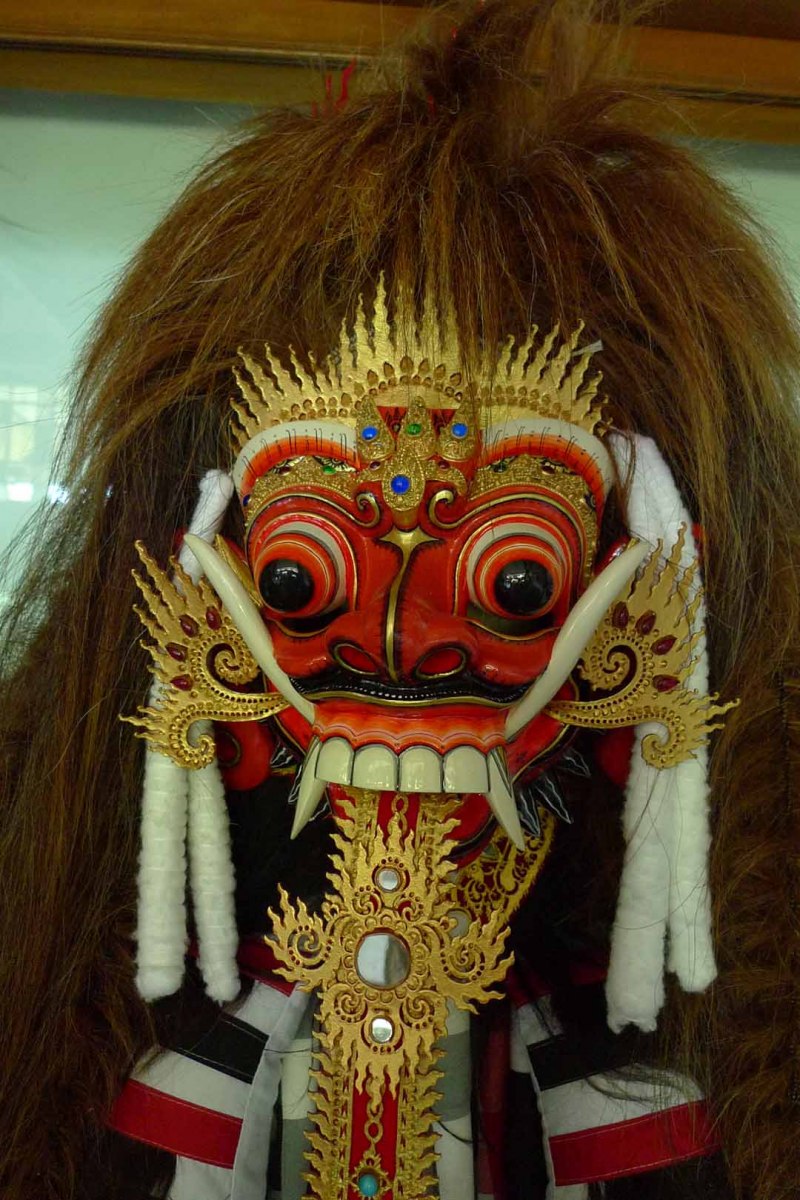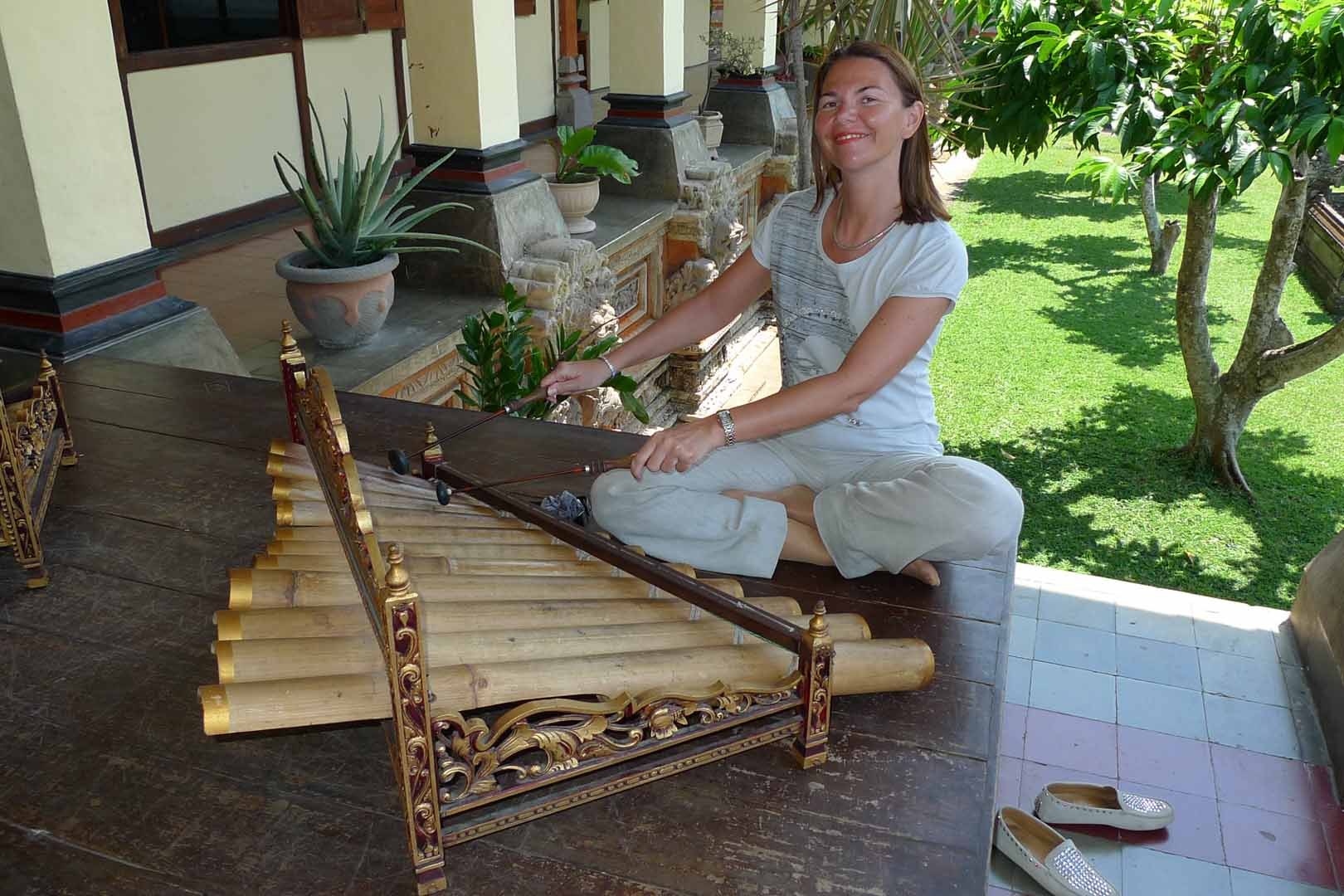Bali
Island of the gods, the demons and the thousand temples
Bali, the “Island of Gods and Demons”, the “Island of a Thousand Temples”, enchants every traveler with its scenic diversity and beauty (picturesque sandy beaches, breathtaking rice terraces), as well as richly decorated temples, fabulous stone sculptures and unique handicrafts.
The following program covers the entire island (the coast in the south and the Ubud area in the highlands of Bali’s south have the most highlights) and gives you a carefully selected variety of sights to discover with your private driver.
Day 1: Half day excursion
From Jimbaran, you should definitely visit the Pura (temple) Luhur Uluwatu. Book a private driver to take you to the famous Hindu sea temple on the slope of a cliff about 80 meters high. The Balinese ask for protection from the demons of the sea in the temple built in the 11th century, which is said to be dedicated to the sea goddess Dewi Danu. Visit the temple at sunset and don’t be deterred by the narrow, challenging path over hill and dale.
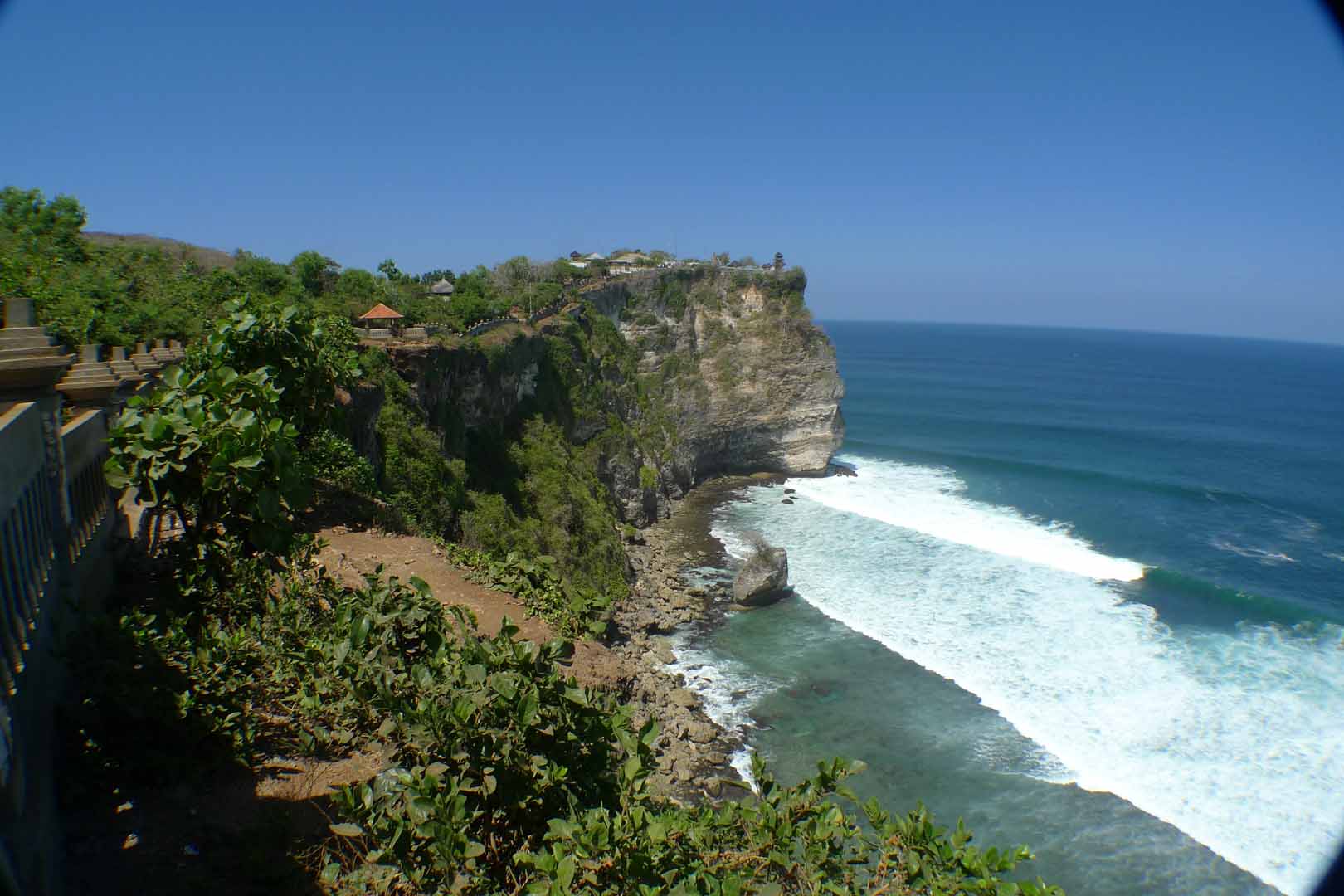
Hati Hati (means be careful): The long-tailed macaques are just waiting to relieve temple visitors of their hats, glasses, necklaces, watches and cameras. Anything shiny, flashing, or easy to grab is attack-worthy merchandise for these aggressive monkeys. They literally have a monkey’s fun stealing from the tourists. I had to experience firsthand how mercilessly one such playful monkey jumped on my shoulder and grabbed my sunglasses. Quick-witted, I grabbed the left temple, which was still resting, and screamed loudly. At the sight of me and my shouting, the macaque was terribly frightened and silently moved to a tree, while the others from his group fell into mocking laughter.
On the way from Jimbaran to Pura Luhur Uluwatu, take a look at typical handicrafts, such as stone or wood sculptures, which are exhibited along the streets, or even have them delivered to your home.
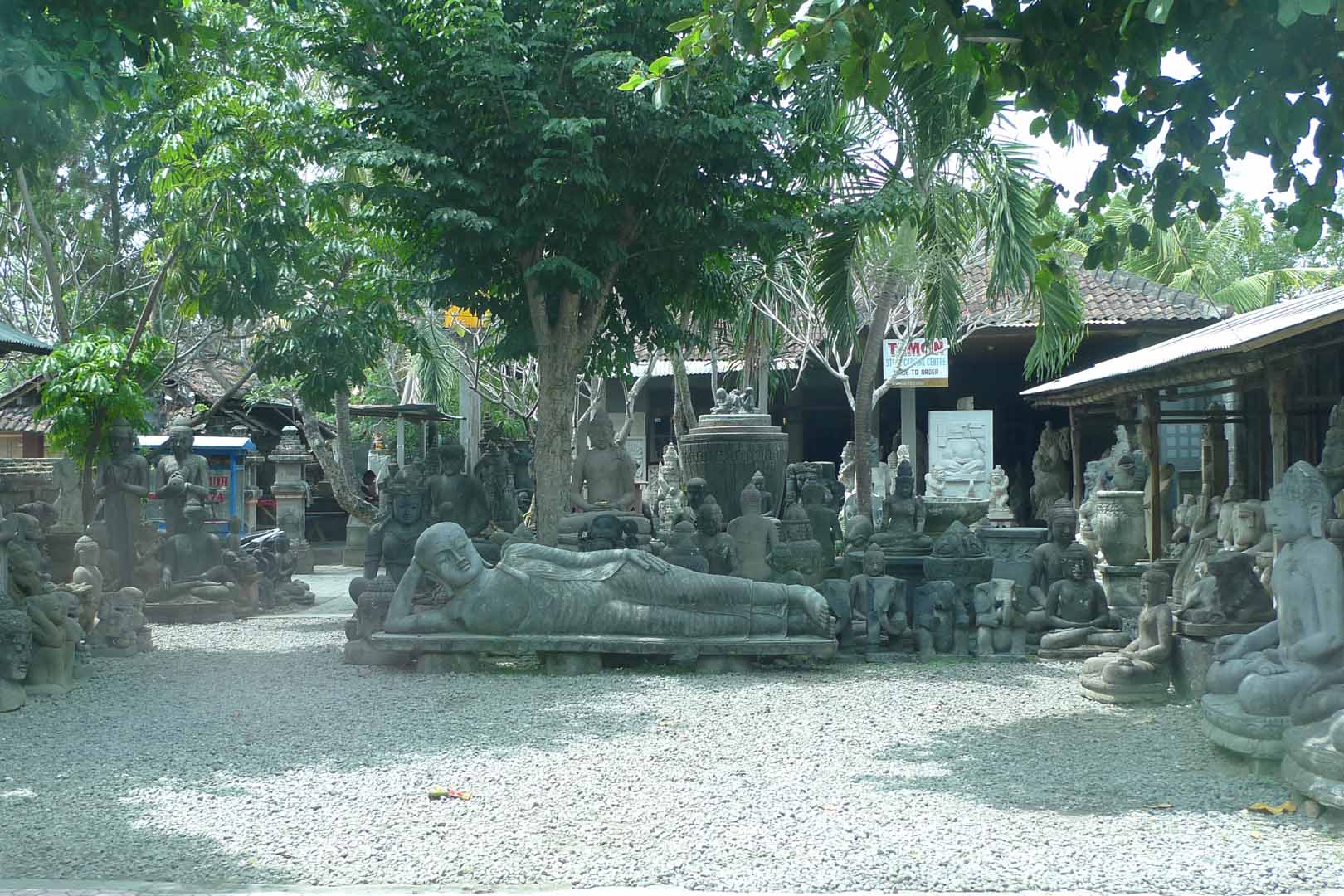
Day 2: Relaxation at AYANA Resort and Spa (detailed hotel report under hotels in Bali in my blog)
Day 3: Relaxation at The Mulia or the St. Regis in Nusa Dua (detailed hotel reports under Hotels in Bali in my blog)
Day 4: Full day program from 8:00 am to 6:00 pm
From Nusa Dua, you should visit the famous rice terraces of Jatiluwih. They are picturesquely nestled in the impressive mountain landscape of Bali. The artfully laid-out rice terraces, which belong to the UNESCO world cultural heritage, will also inspire you. However, you must go there very early, preferably at 8:00 am, to escape the tourist crowds. Like a terraced canyon landscape, sometimes gently curved, sometimes steeply stepped, the kilometer-long hills for rice cultivation, surrounded by mud walls, stretch out. A true work of art! From time to time you will surely see one of the rice farmers working in these green rice paddies.
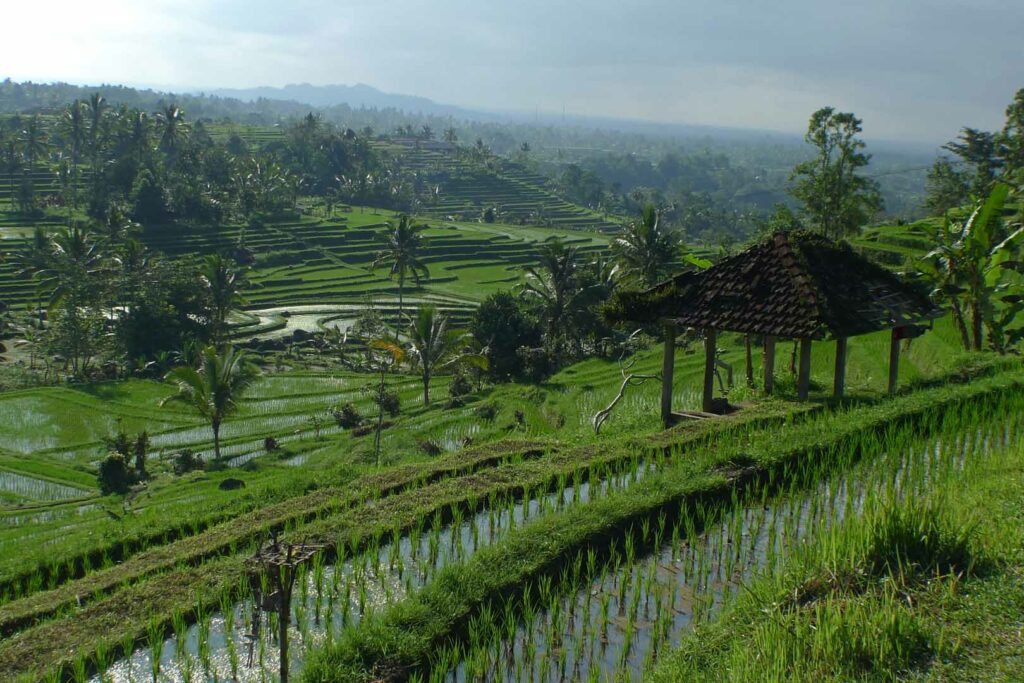
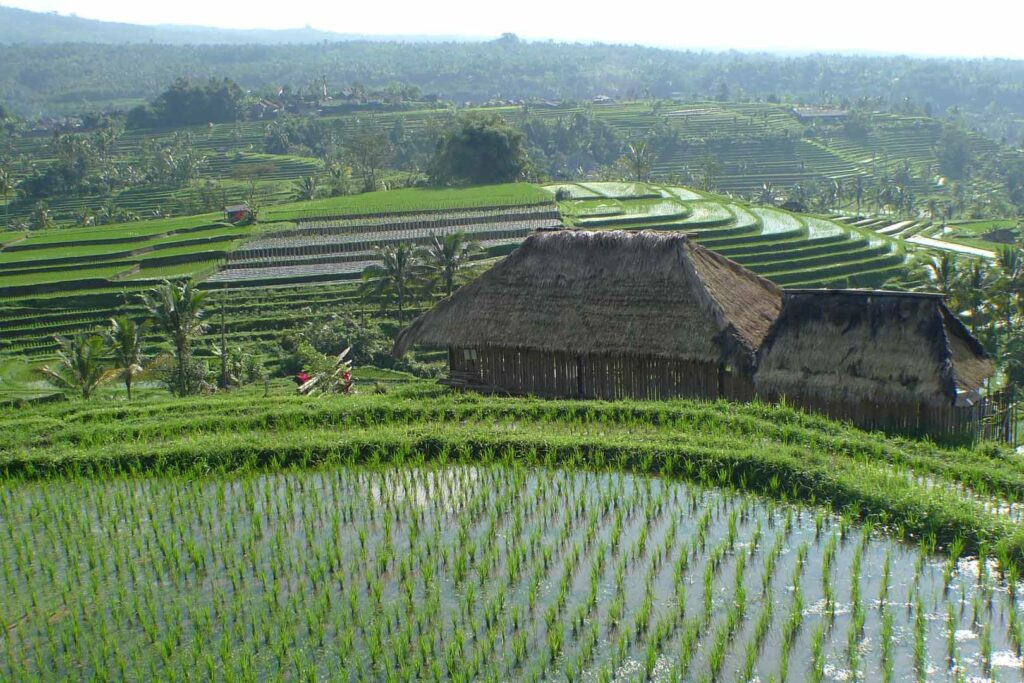
After this interesting visit, your private driver will take you to the botanical garden Eka Karya. Due to its size, I recommend exploring this landscape park with two temples, a mosque, a library, a guest house, a restaurant and a congress center by car. At the south entrance you will be greeted by huge white and gold stone statues. These are absolutely stunning. Furthermore, we liked the glass cactus greenhouse with the orchid garden opposite as well as the rose and fern garden. Finally, we walked through the bamboo and tropical rainforest.
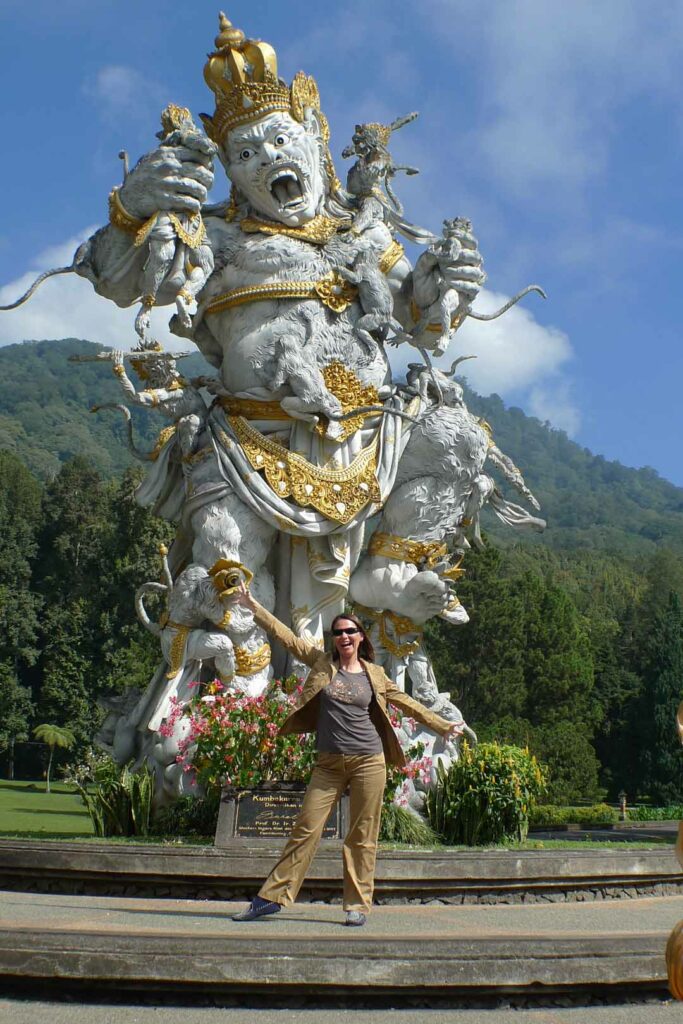
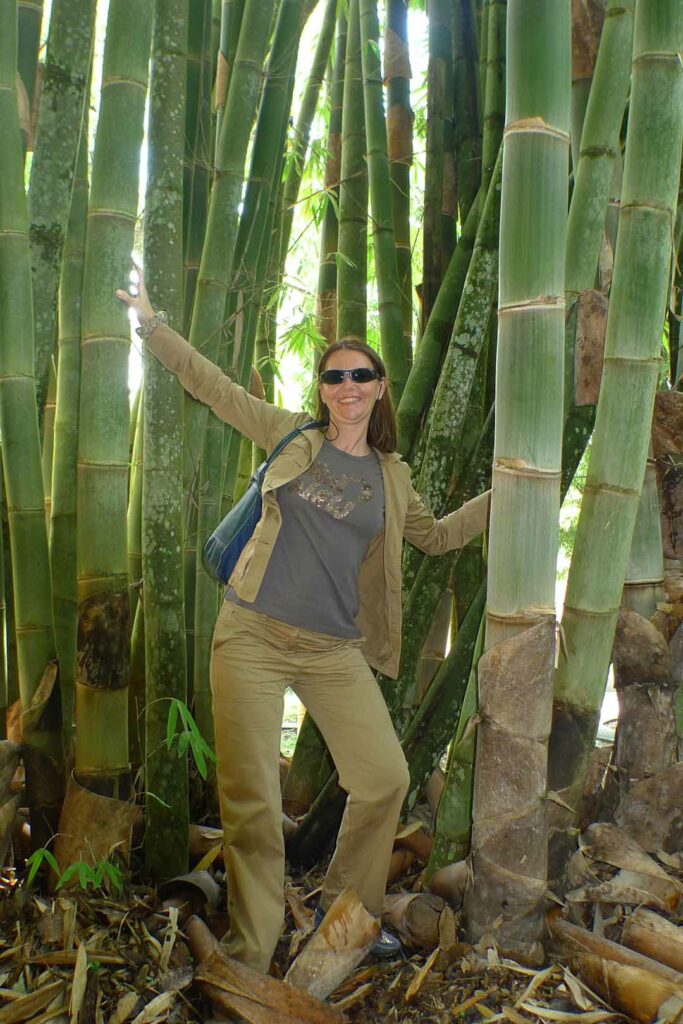
During your ride to the next highlight of the day, you will experience a lot of local color: street vendors offering their wares and Balinese people using mainly the so-called bemos, minibuses, on the short distance, which are always crowded. Most locals, however, are real scooter lovers. In Bali, everyone owns a rattling moped. This is not only the most important means of transportation, but also the number one means of transportation. Everyone abuses their overloaded scooter, for example for transporting tires, surfboards or bamboo. In Bali, there is an elaborate system of gas stations, as almost every householder in and outside a village supplies the moped riders with glass bottles filled with a liter of fuel. The awareness of environmental protection is truly still expandable!
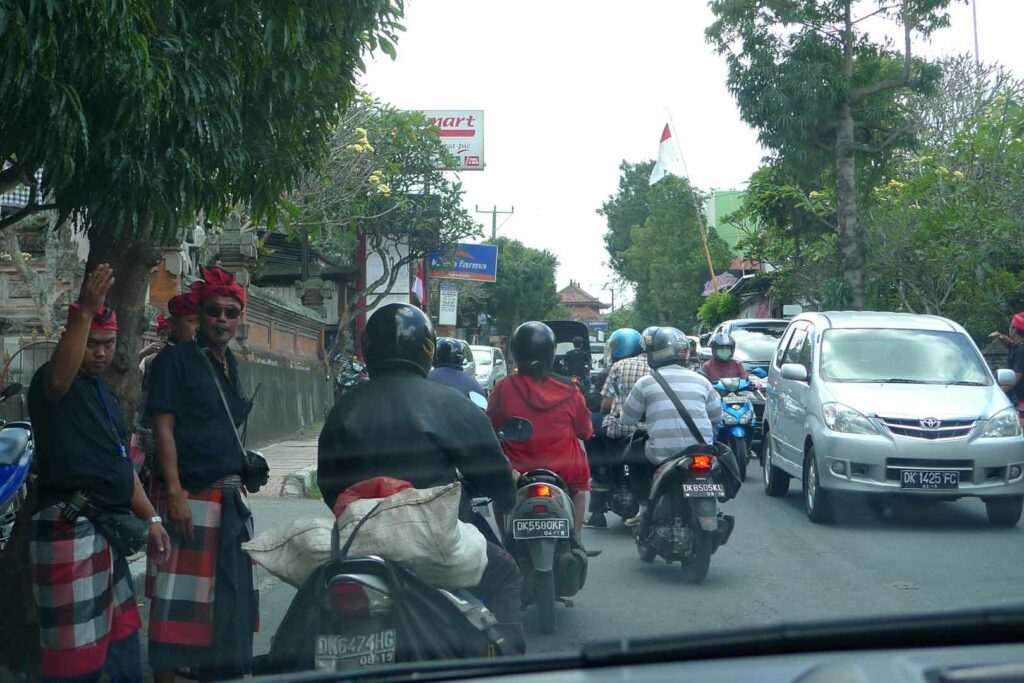
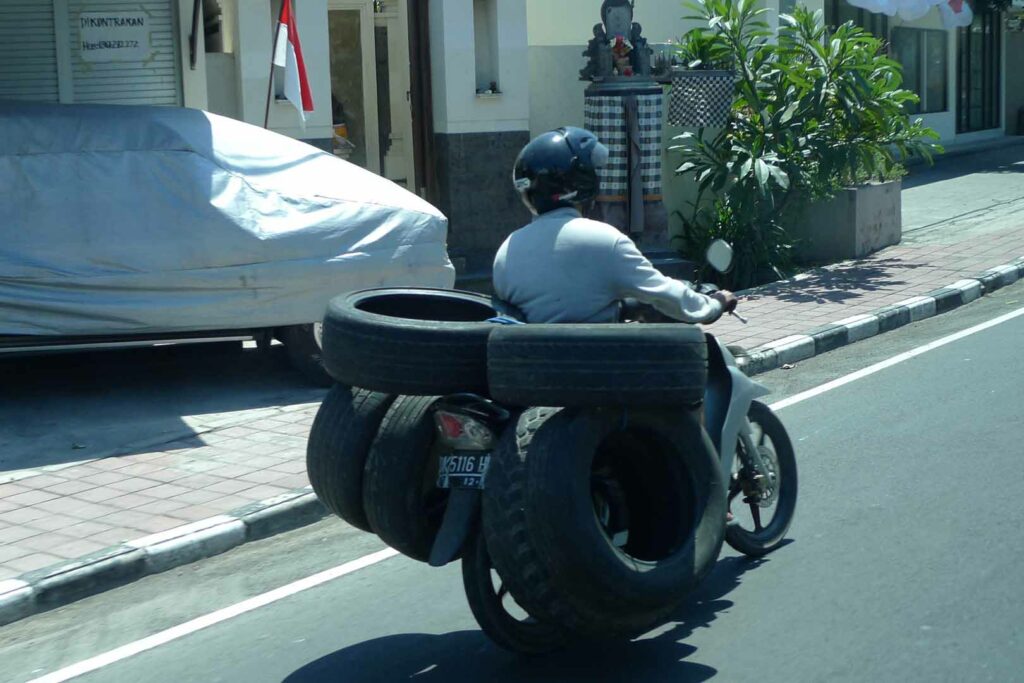
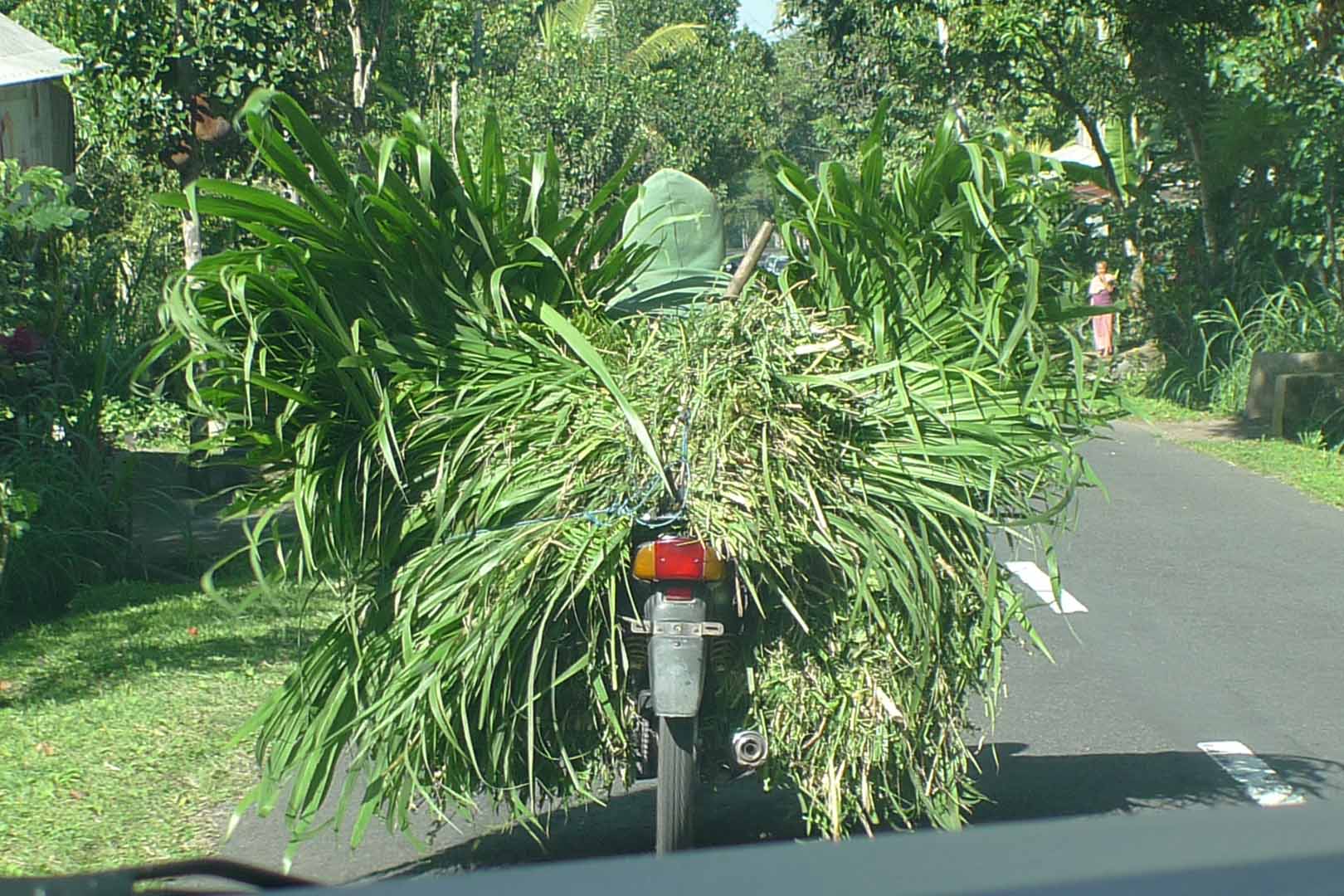
After the botanical garden, we headed to Ulun Danu Beratan Temple, also called Pura Bratan, dedicated to the goddess of the lake Dewi Danu. During our visit, local farmers held an impressive ceremony. Since the sacred water from Lake Bratan, a volcanic lake at 1,200 meters above sea level, is said to possess magical powers that bless the rice fields with outstanding fertility, this 17th century water temple is a very popular pilgrimage destination for rice farmers from southern Bali. In this temple complex, as in all other temples, the demon and god figures are dressed in sarong (wraparound robe) and selempot (temple sash).
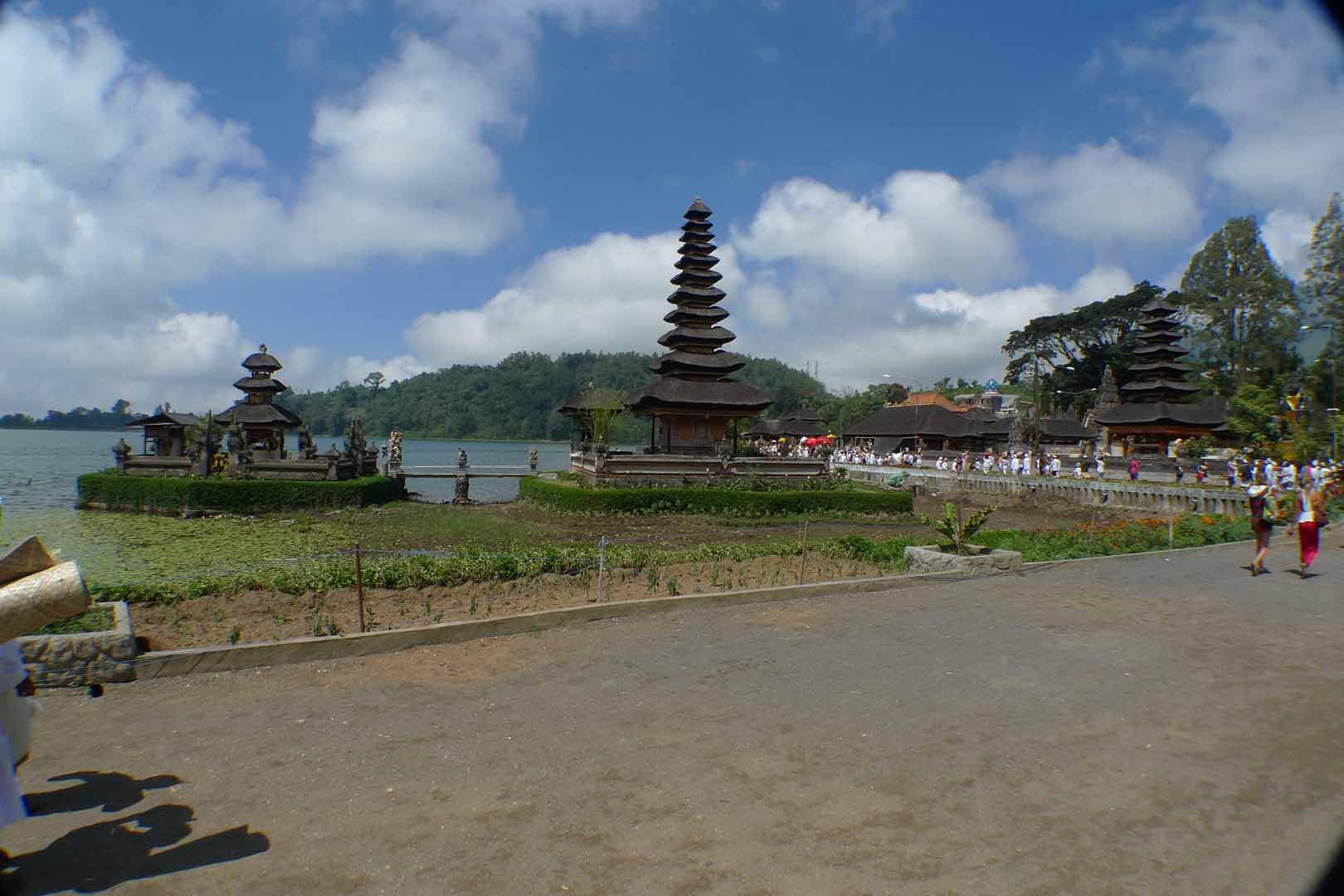
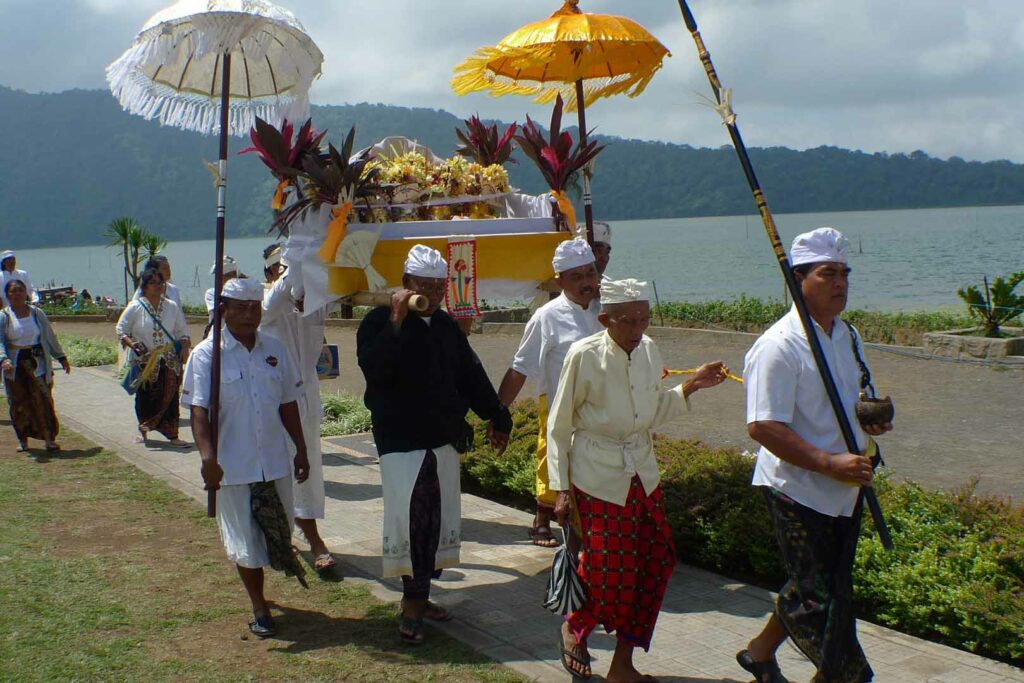
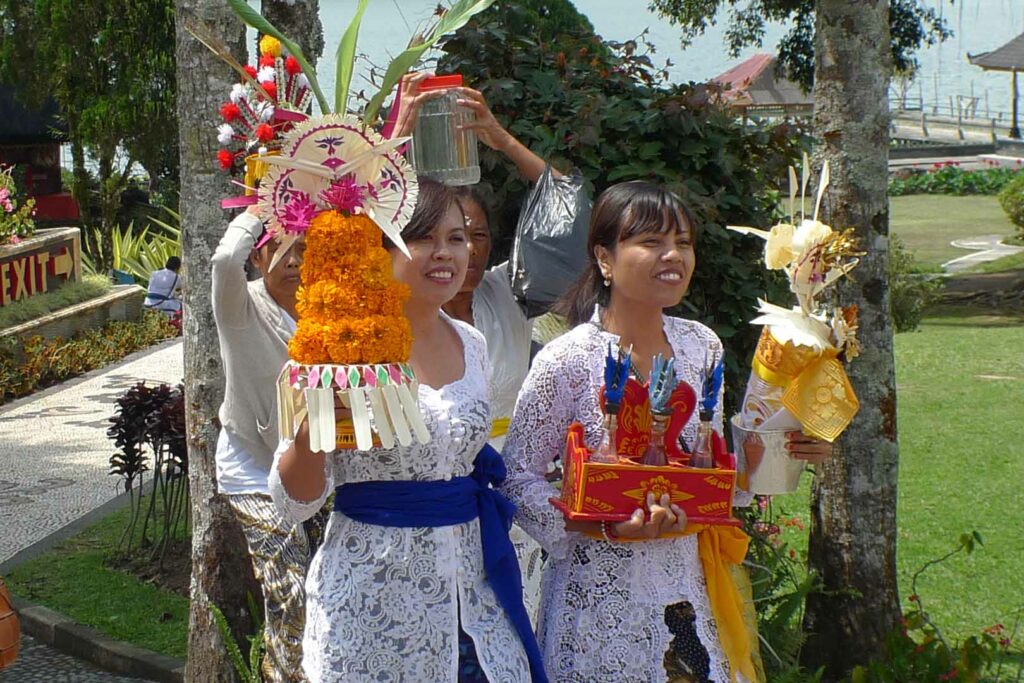
Day 5: Relax in the hotel
Day 6: Half day excursion
From Nusa Dua, you can also visit the world-famous sea temple Pura Tanah Lot. This most photographed temple of Bali rises at high tide like a mystical figure in the middle of the waves of the roaring sea.
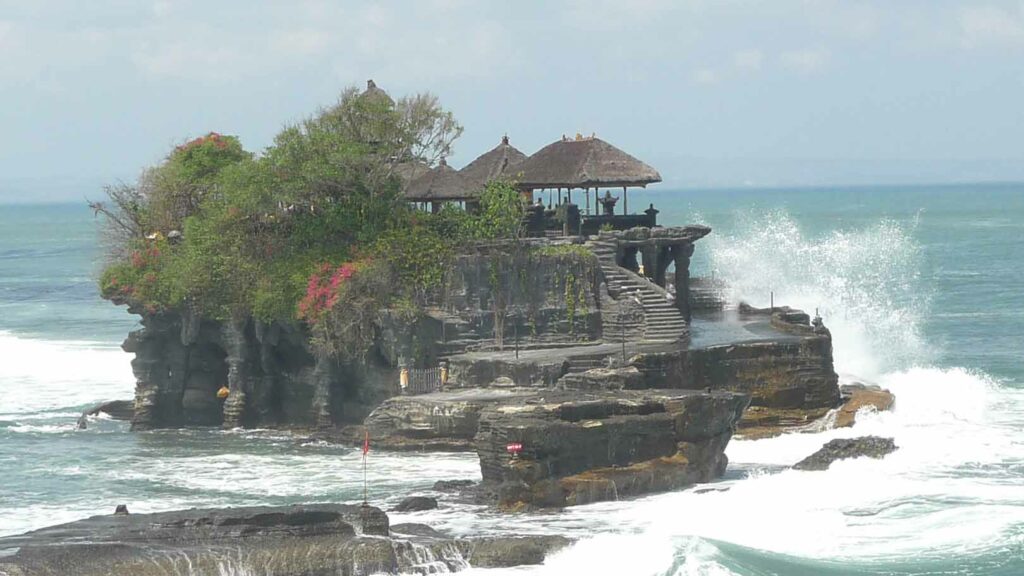
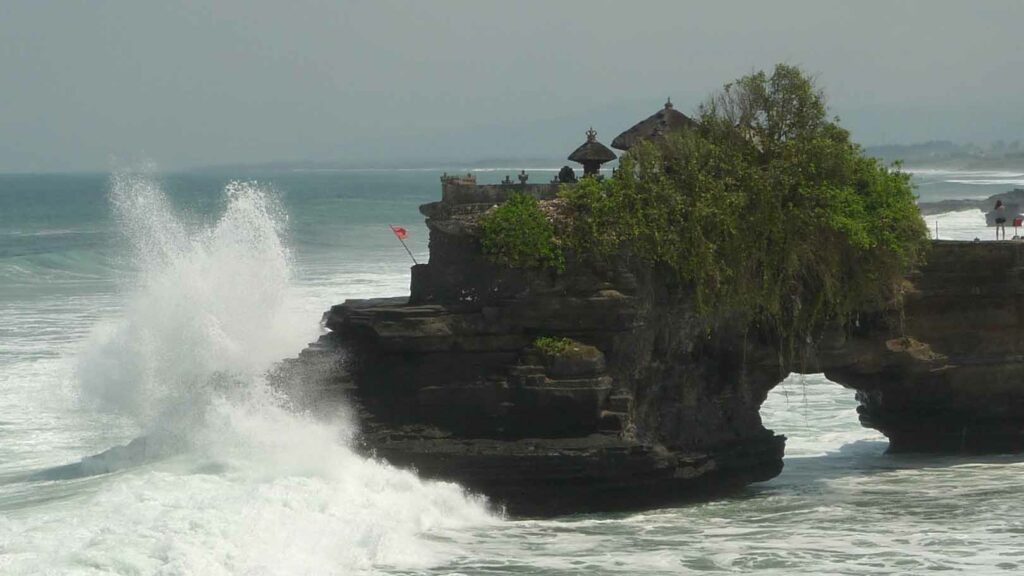
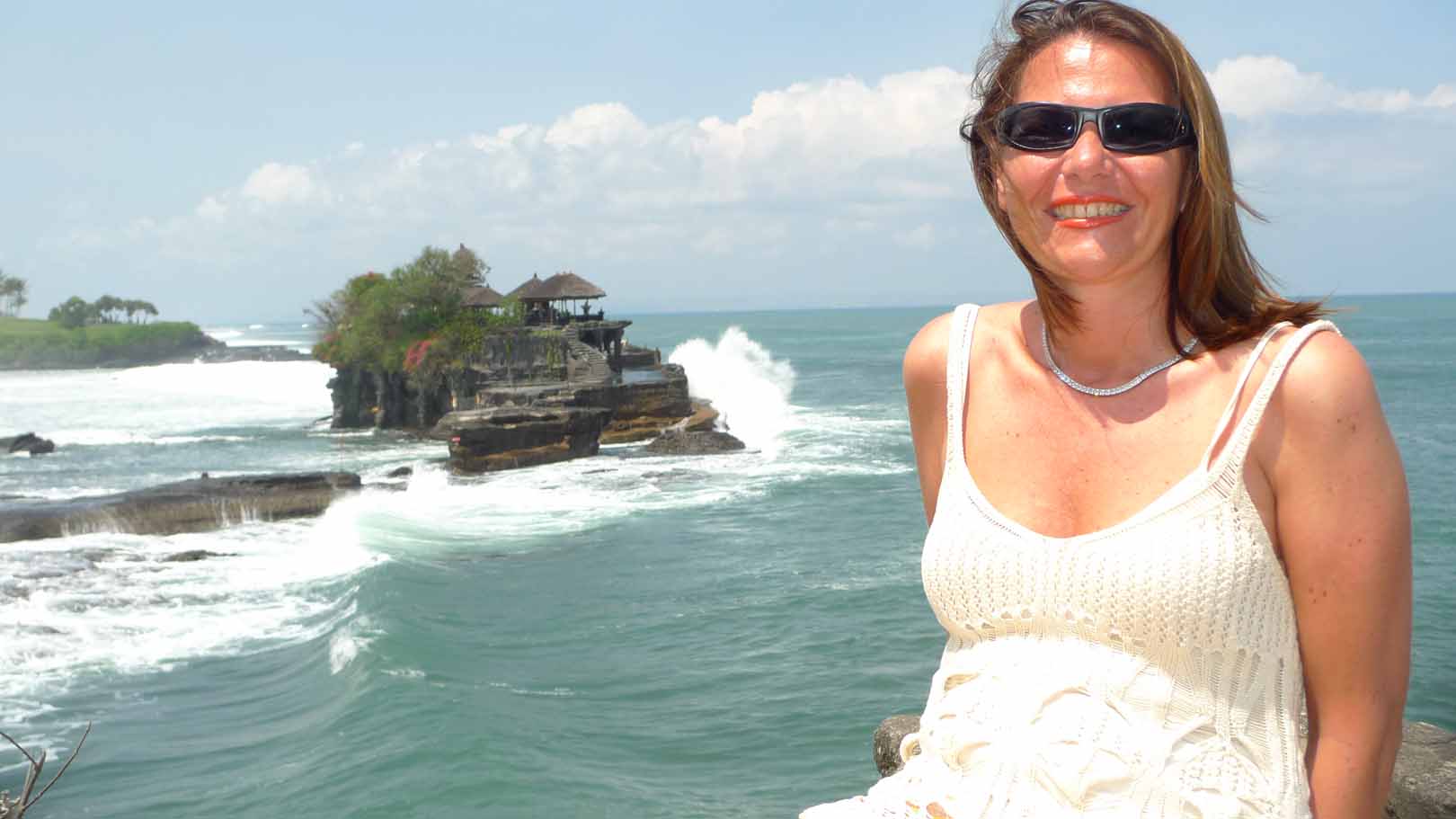
Day 7:
On the way to Ubud, the green heart as well as the center of art and culture in Bali, you can pay a visit to the second largest temple complex in Bali. The Pura Taman Ayun is surrounded by a moat and symbolizes the Hindu world in the cosmic sea.The eleven-story Meru (a shrine with pagoda-like staggered roofs) is the tallest in this complex and symbolizes the mountain Gunung Batukau.
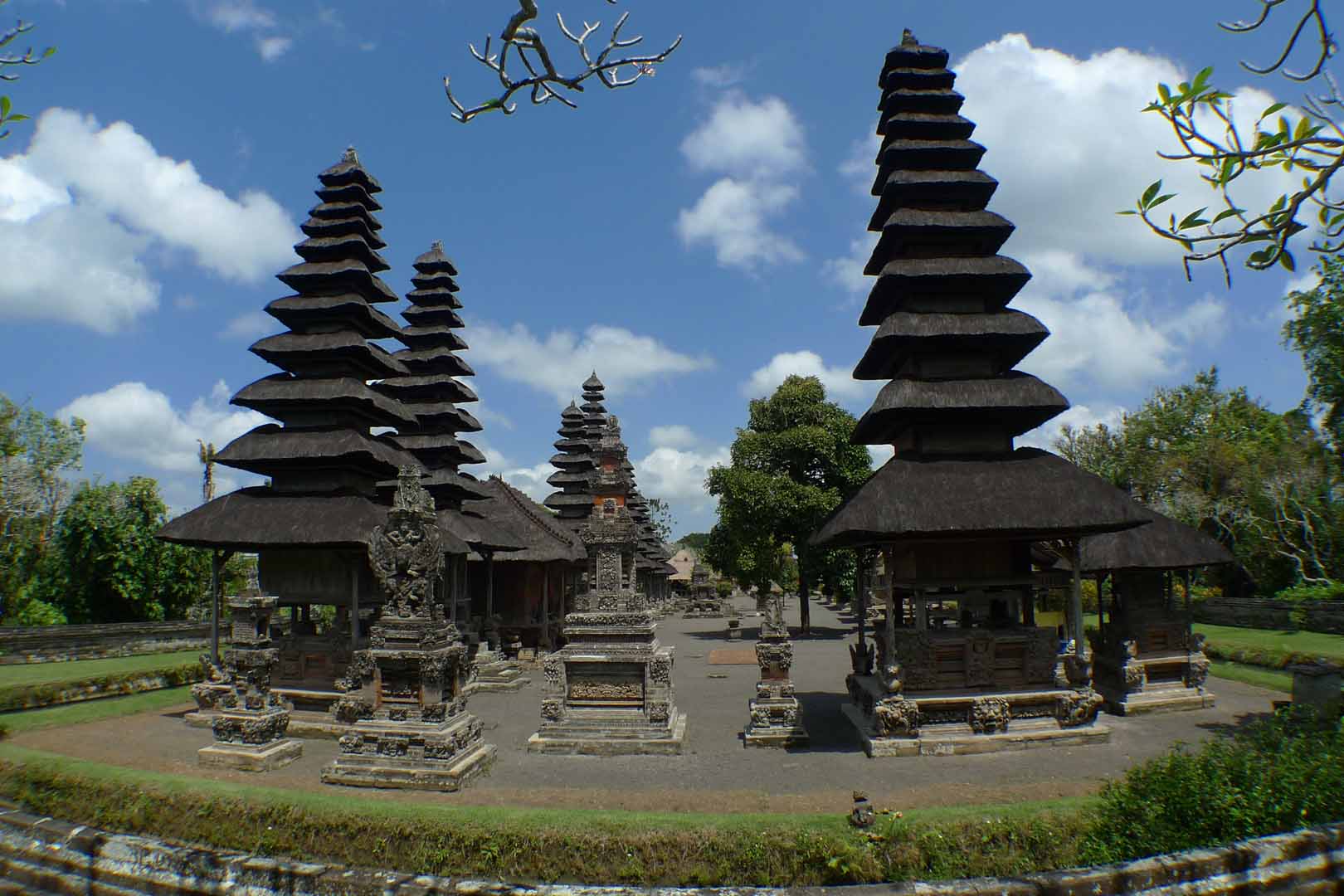
For those with a penchant for silver jewelry, I recommend a quick detour to John Hardy. The Canadian came to Bali in the late seventies as a dropout and wanted to create an environmentally sustainable, totally responsible luxury. He founded a silver jewelry workshop, a school and a village for his workers. Today, about 600 employees work in his village and his silver creations are among the best in the world. Insider tip: Book a tour of the workshops in advance. It is truly impressive as you experience firsthand the individual, handmade production steps from design to finished piece of art. You can’t miss the unique architecture of the show- and salesroom either. An imposing structure made of bamboo, straw, cloth, wax, clay and plaster rises like a cathedral from the surrounding rice fields. However, every visitor to this bamboo ship must walk barefoot over a rickety bamboo bridge and no shoes may be worn inside either.
Day 8: Relaxation at the Viceroy (detailed hotel report under Hotels in Bali on my blog)
Day 9: Half day program
In the artist village Ubud, you should not miss the Blanco Museum including studio, temple and Hindu pagoda. The extravagant domicile with garden and living parrots was once the retreat of the eccentric artist Antonio Blanco (Bali’s Salvador Dali). Furthermore, just be inspired by the numerous galleries in town.
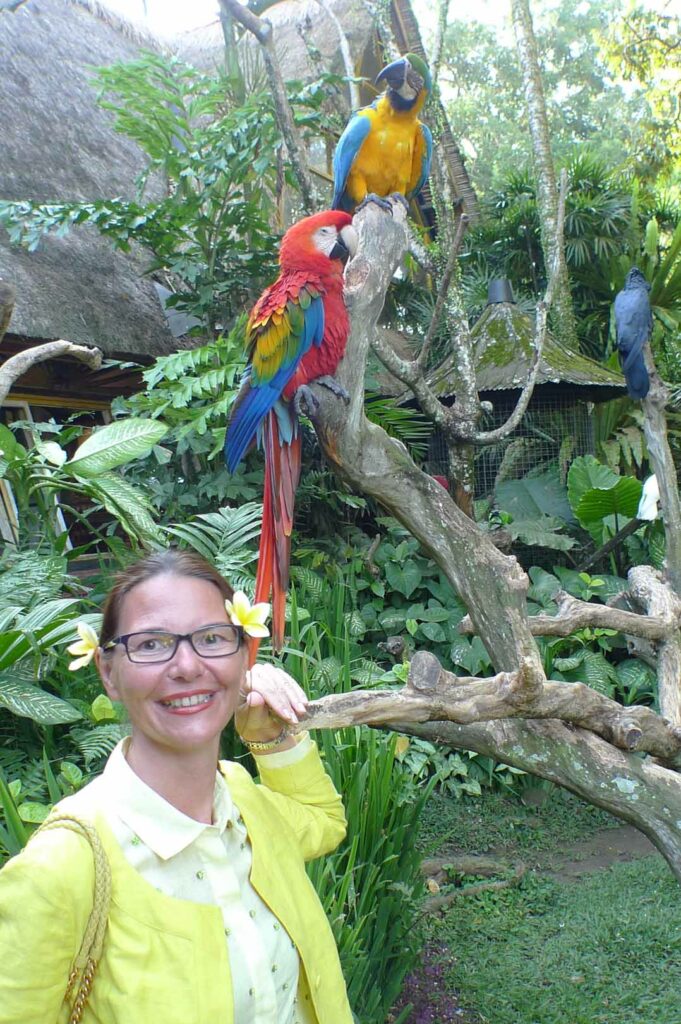
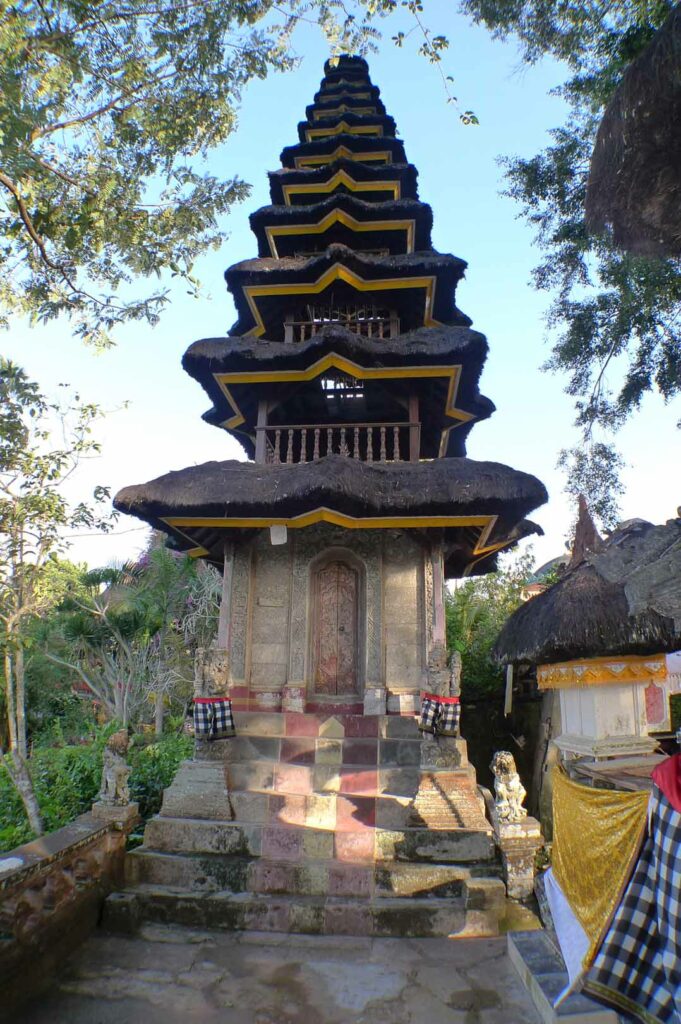
You can also visit the Dewa Putu Toris art gallery, a few kilometers away and learn interesting facts about Indonesian painting.
INSIDER TIP: I don’t usually give tips about restaurants when talking about sightseeing, but I have to make an exception here. The unique Mozaic in Ubud https:www//mozaic-bali.com must be on your to-do list! This unique gourmet restaurant will not only delight your taste buds, but also your soul! It is an absolute must! An experience like this will stay with you for a lifetime. Check out the photos in the slideshow and on my Instagram account @lookandluxury
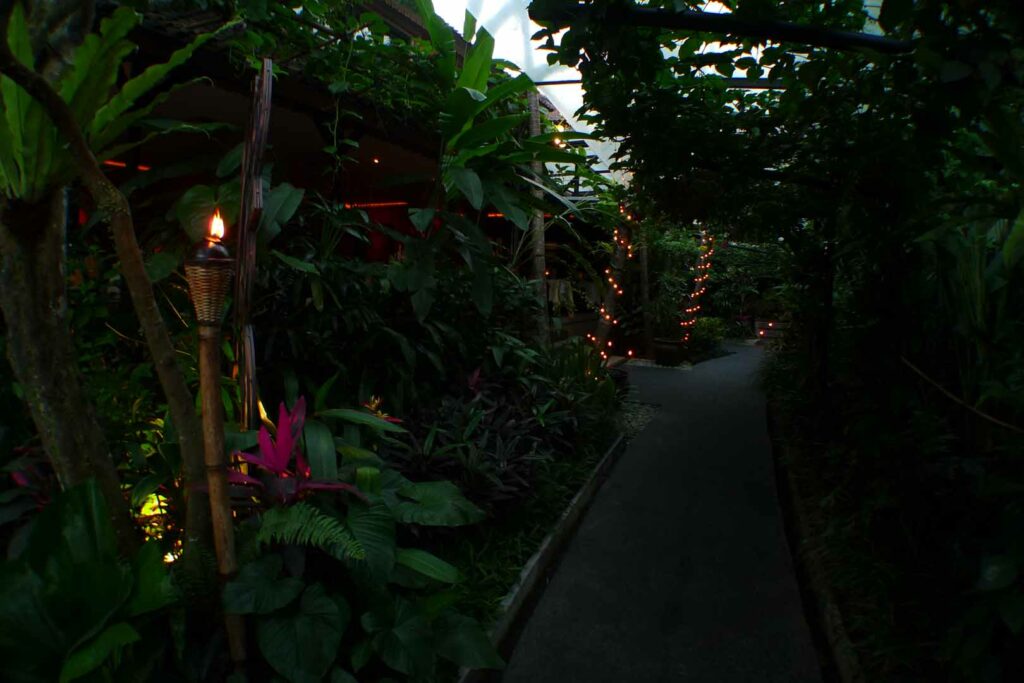
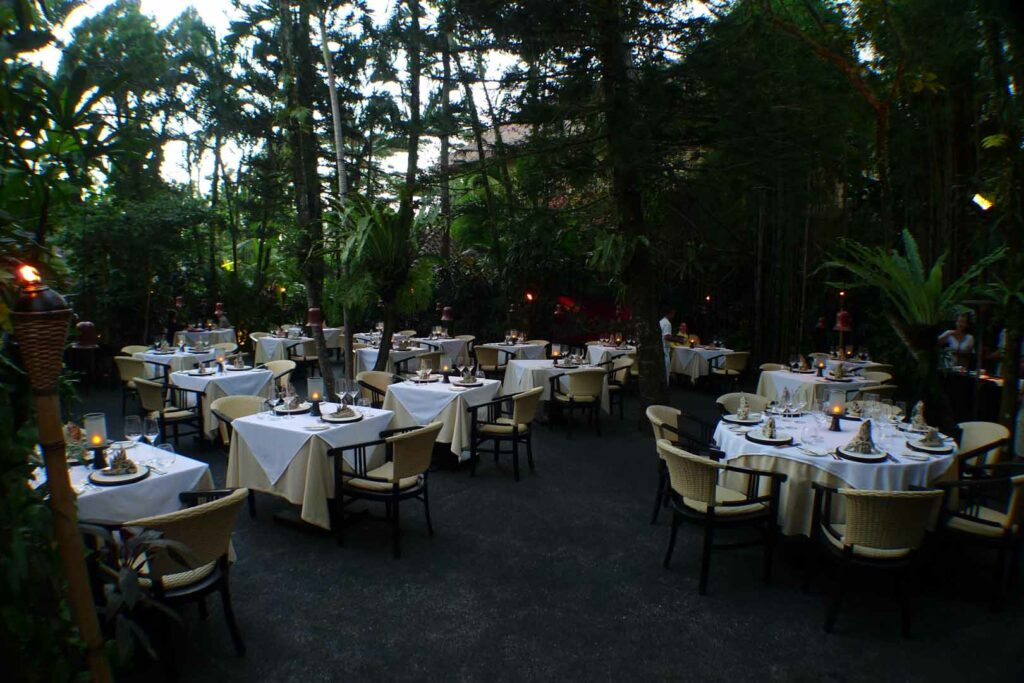
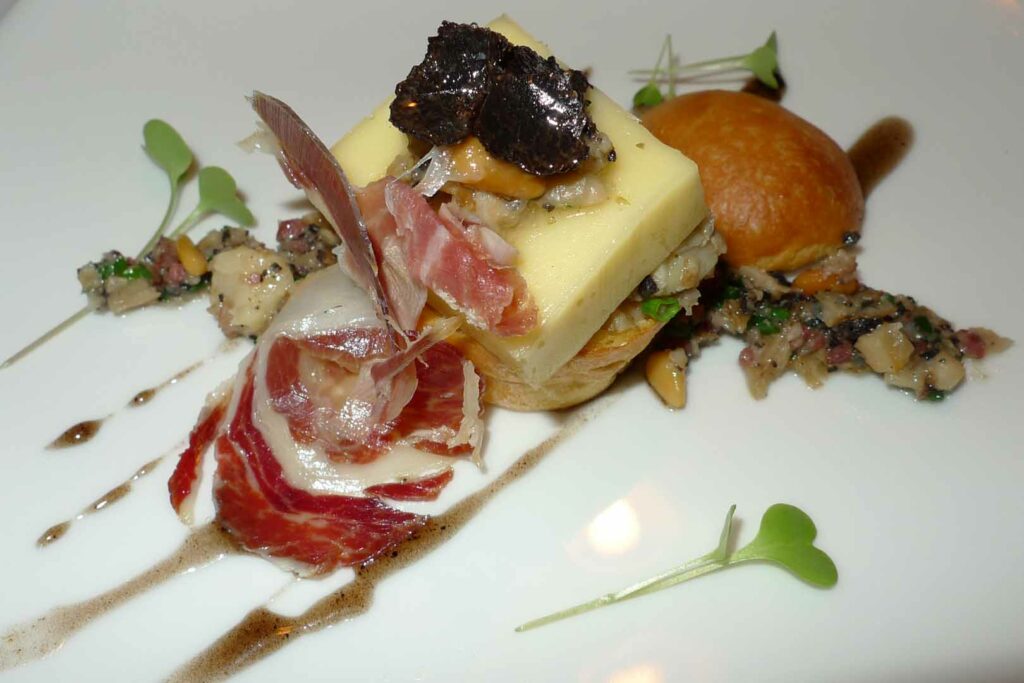
Day 10: Full day program from 8:00 am to 6:00 pm
Today a very special temple is on the bucket list. The main sanctuary of the island can be reached in a good hour from Ubud! The so-called temple of all temples, the Mother Temple is located 950 to 1,011 meters above sea level. The terraced Pura Agung Besakih is a complex of 22 temples, over 200 structures and 50 merus, which extends over three square kilometers on the slopes of the still active volcano Gunung Agung. You should be prepared for a steep climb. The climb is worth it, because from the “Split Gate”, you have a breathtaking view of the surrounding area.
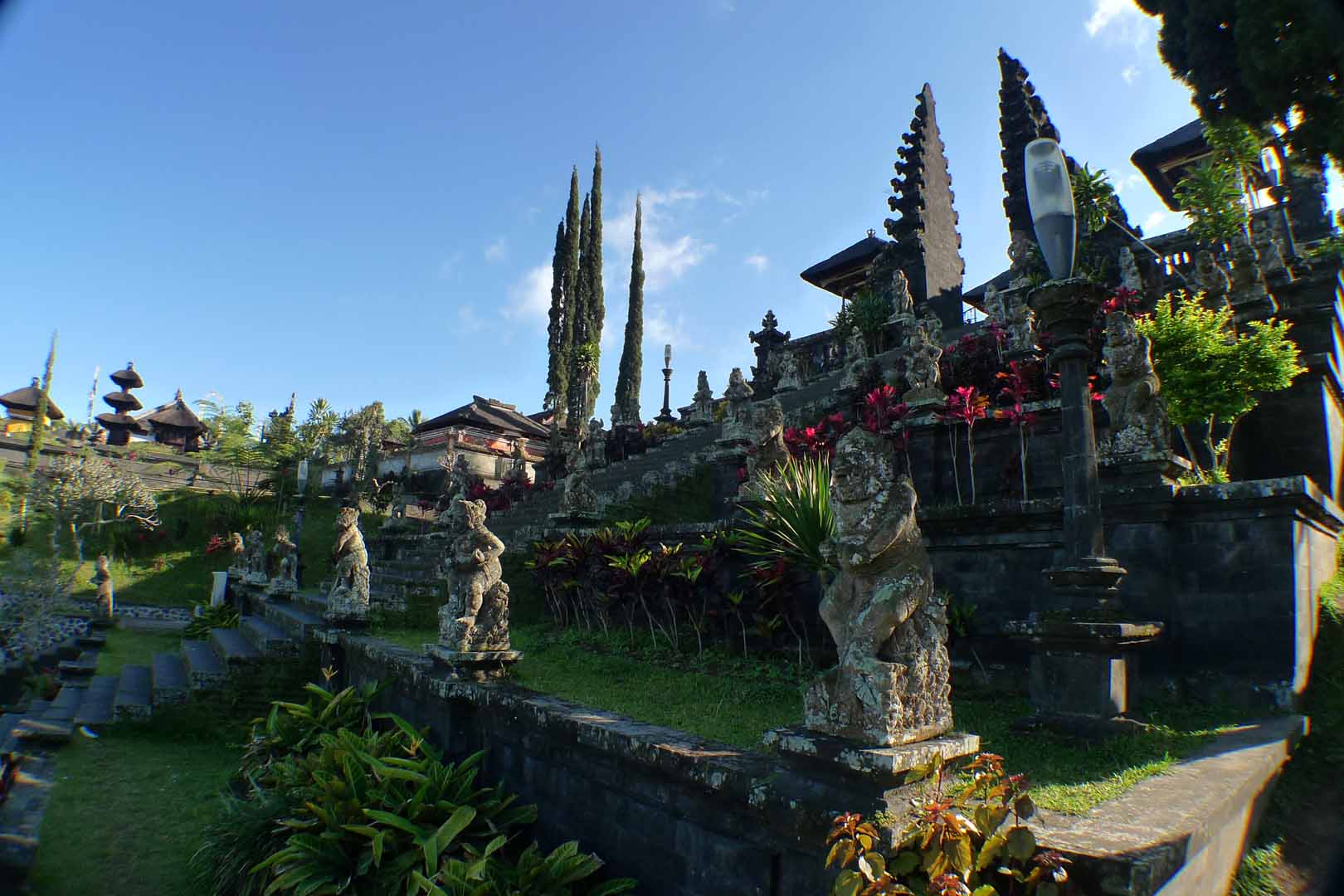
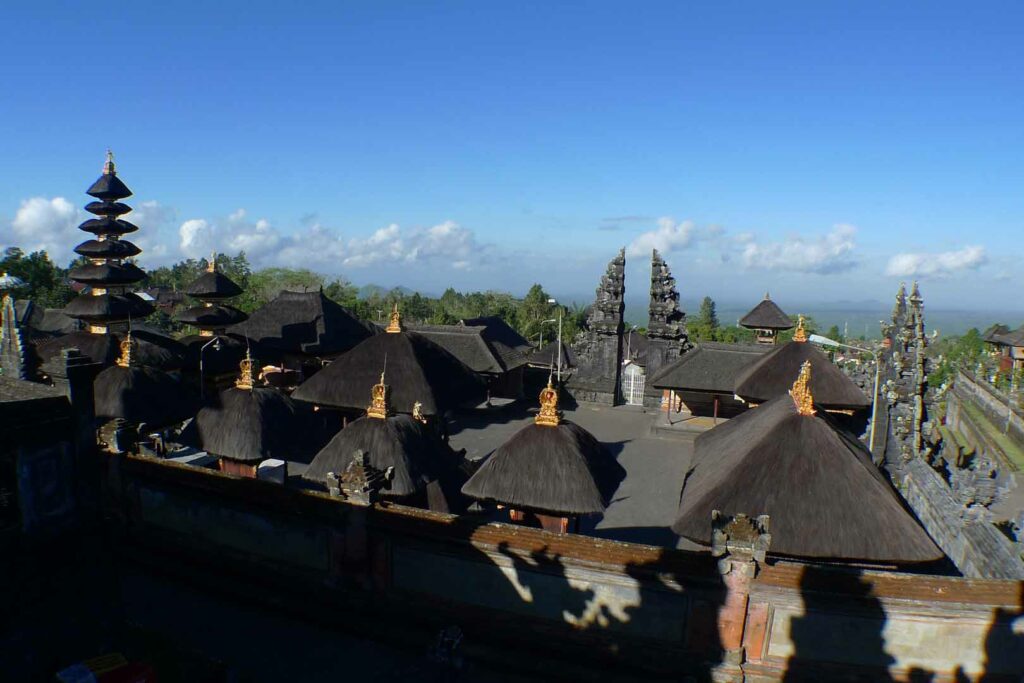
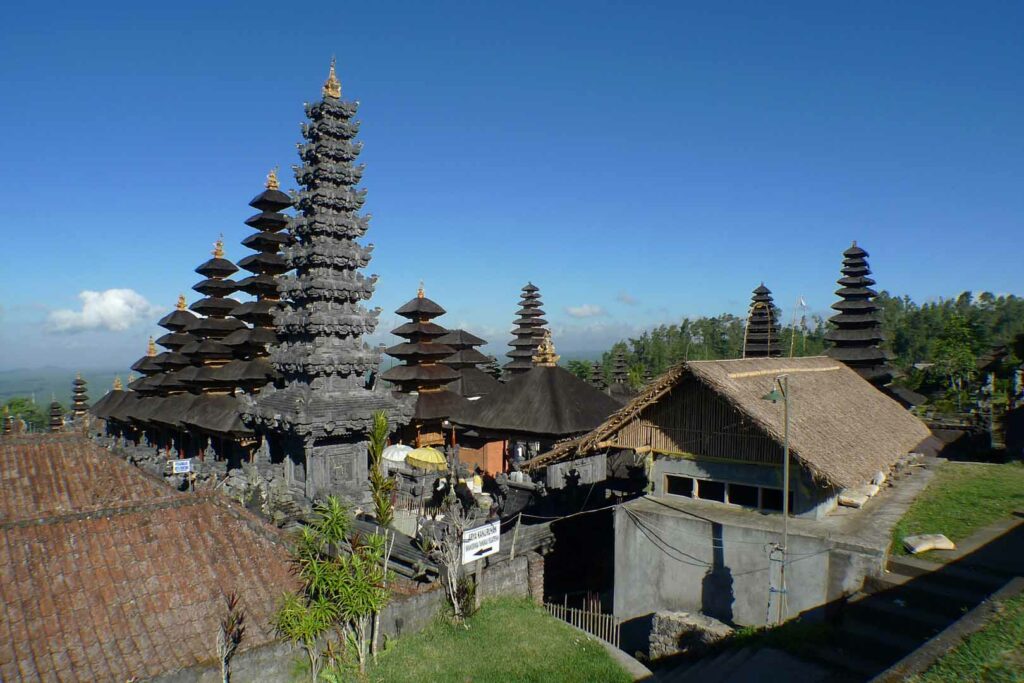
Afterwards I recommend a visit to a typical Balinese village. The model village Penglipuran is designed after the original villages in Bali. That means it is aligned according to a mountain (divine sphere) sea (realm of demons) axis. In the village you will find a religious community and several temples. Also take a closer look at the houses. They are surrounded by magnificent walls made of clay or bricks with richly decorated gates. The more ornate the gate, the higher the financial and social status of the inhabitants.
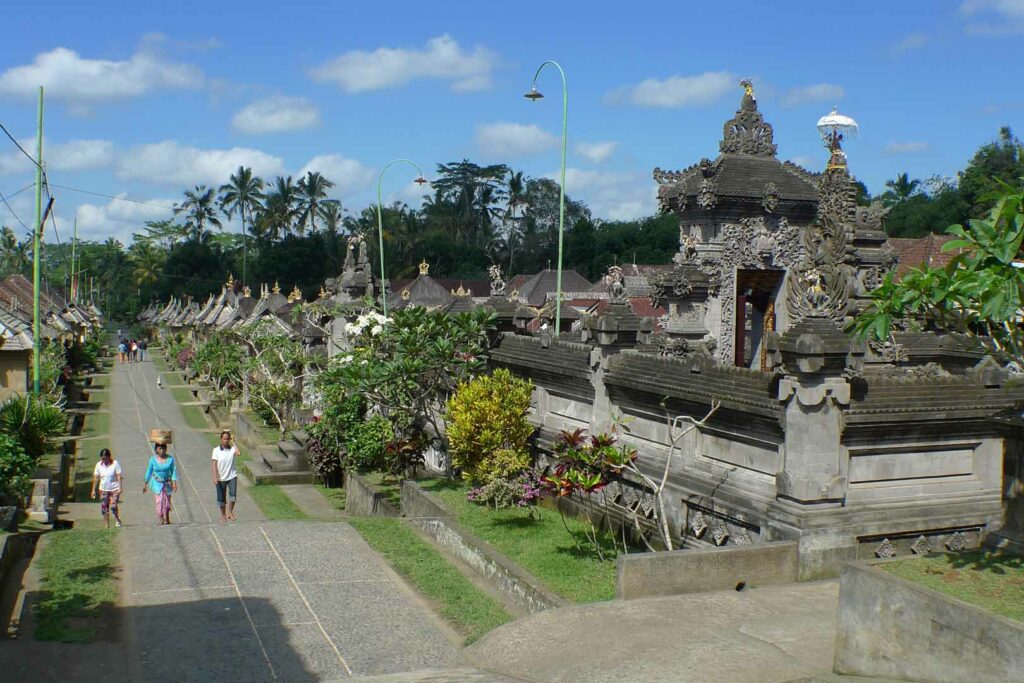
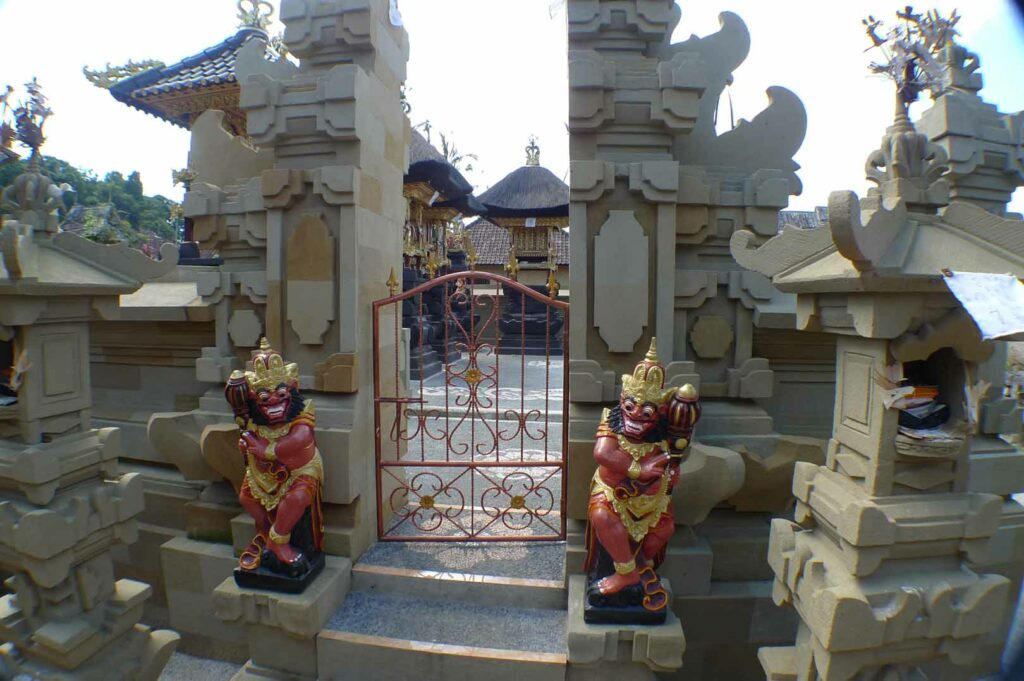
Your private driver will now take you to a 12th century prayer site. Pura Kehen not only impresses with the temple complex, which is once again situated on terraced mountain slopes, but the drum tower in the branches of a banyan tree also draws the eye.
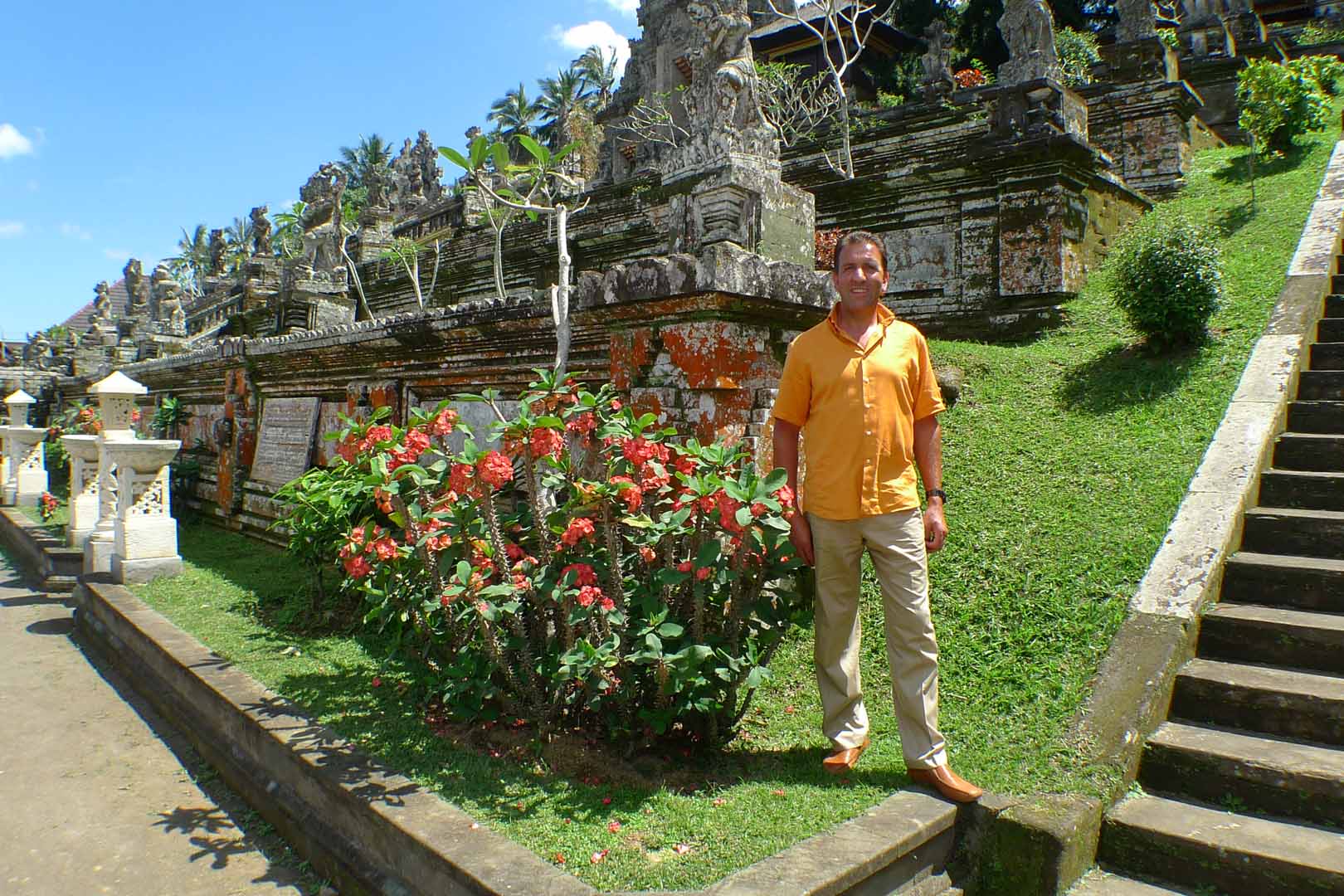
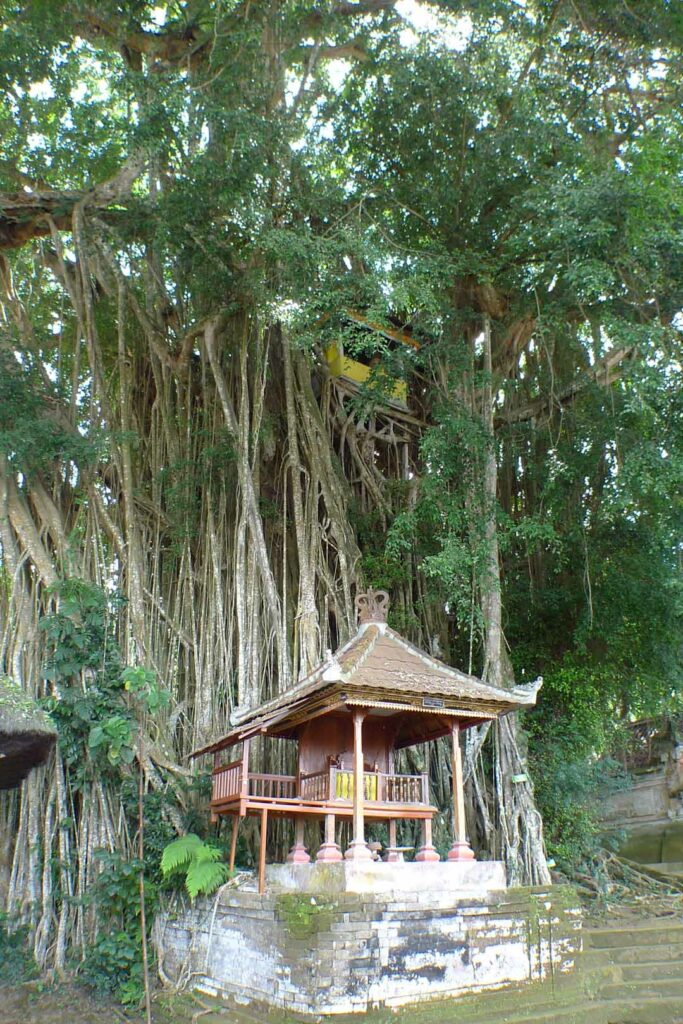
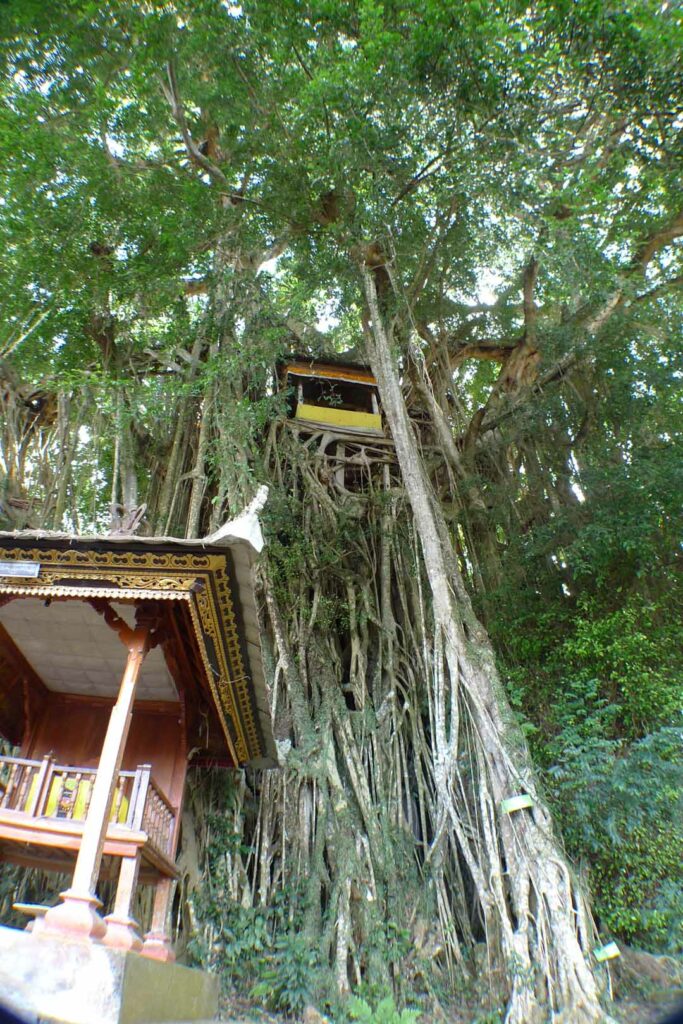
Now you have earned a little refreshment. I suggest you relax with a Kopi Luwak, colloquially known as cat coffee. The Satria Agrowisata in Tampaksiring is located a few kilometers away and serves the most expensive coffee in the world as well as delightful teas. At this coffee plantation, you can also witness the production of this world-famous coffee. It is hard to believe that Kopi Luwak is made from the excrement of the Indonesian creeping cat.
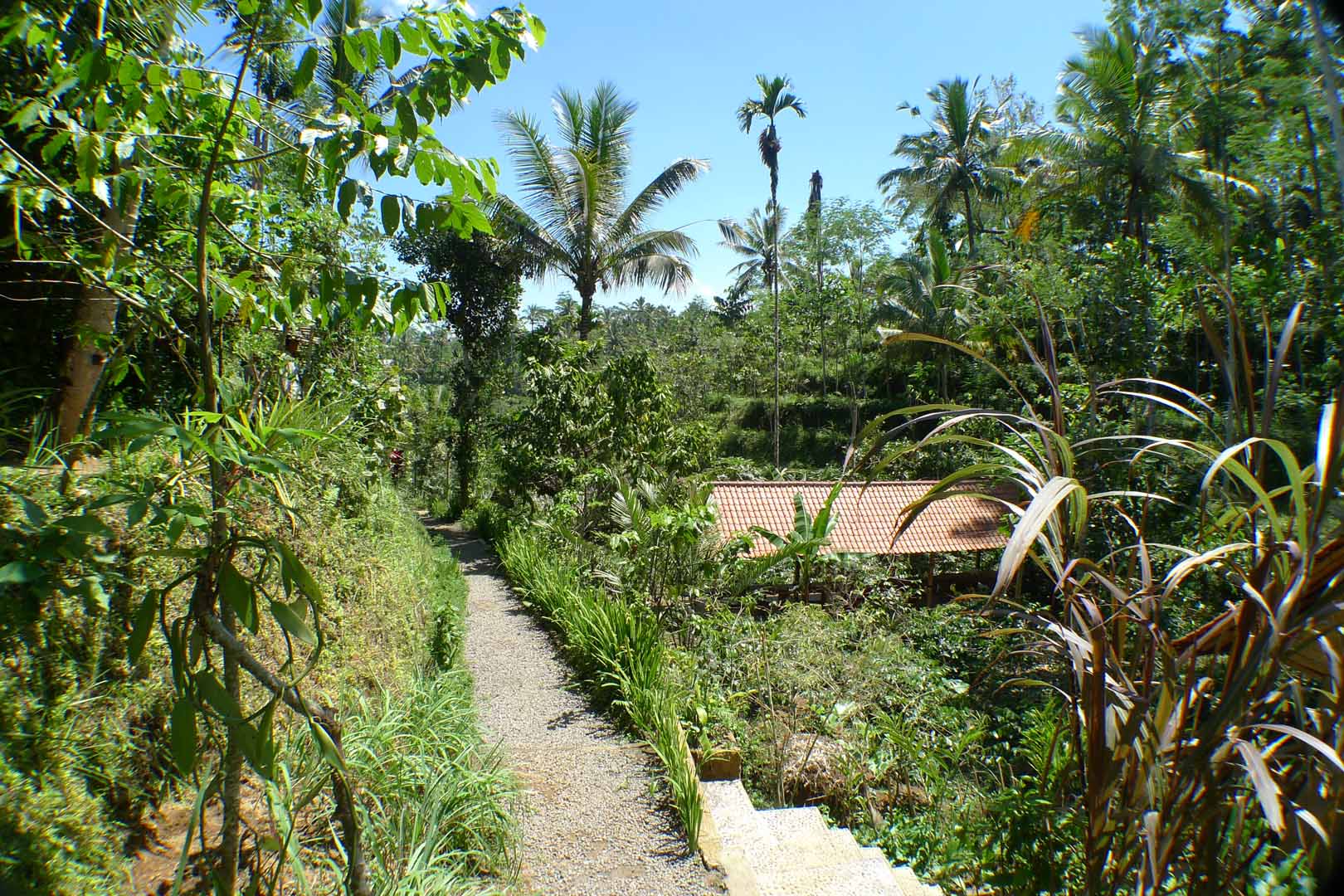
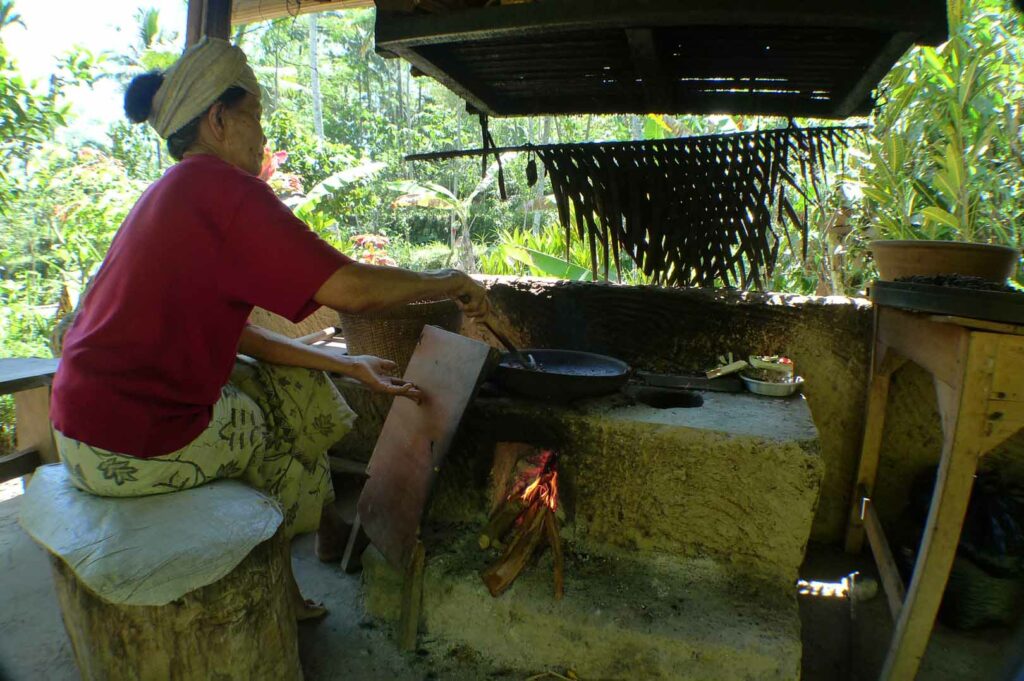
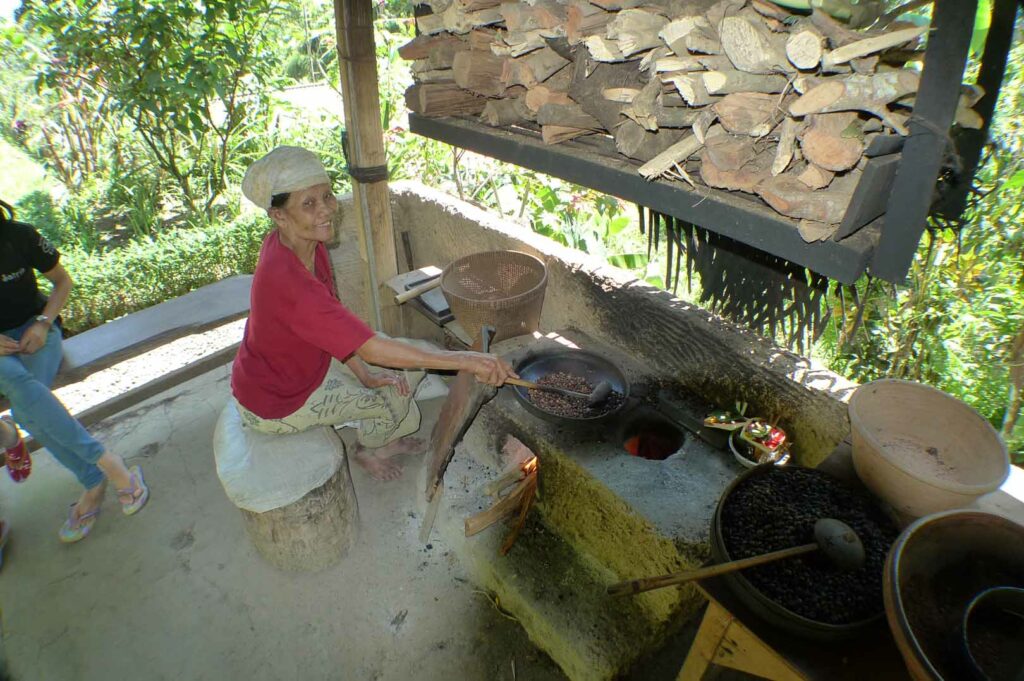
The penultimate visit on this well-filled day is to the Pura Tirtha Empul, a Hindu-Balinese water temple. People from all over Bali come to this spring temple for its sacred water and ritual ablutions in the rectangular bathing pools. Especially on weekends, Balinese throng in front of the mouths of mystical stone statues. These spit the holy water on the heads of their bathers in the natural bath.
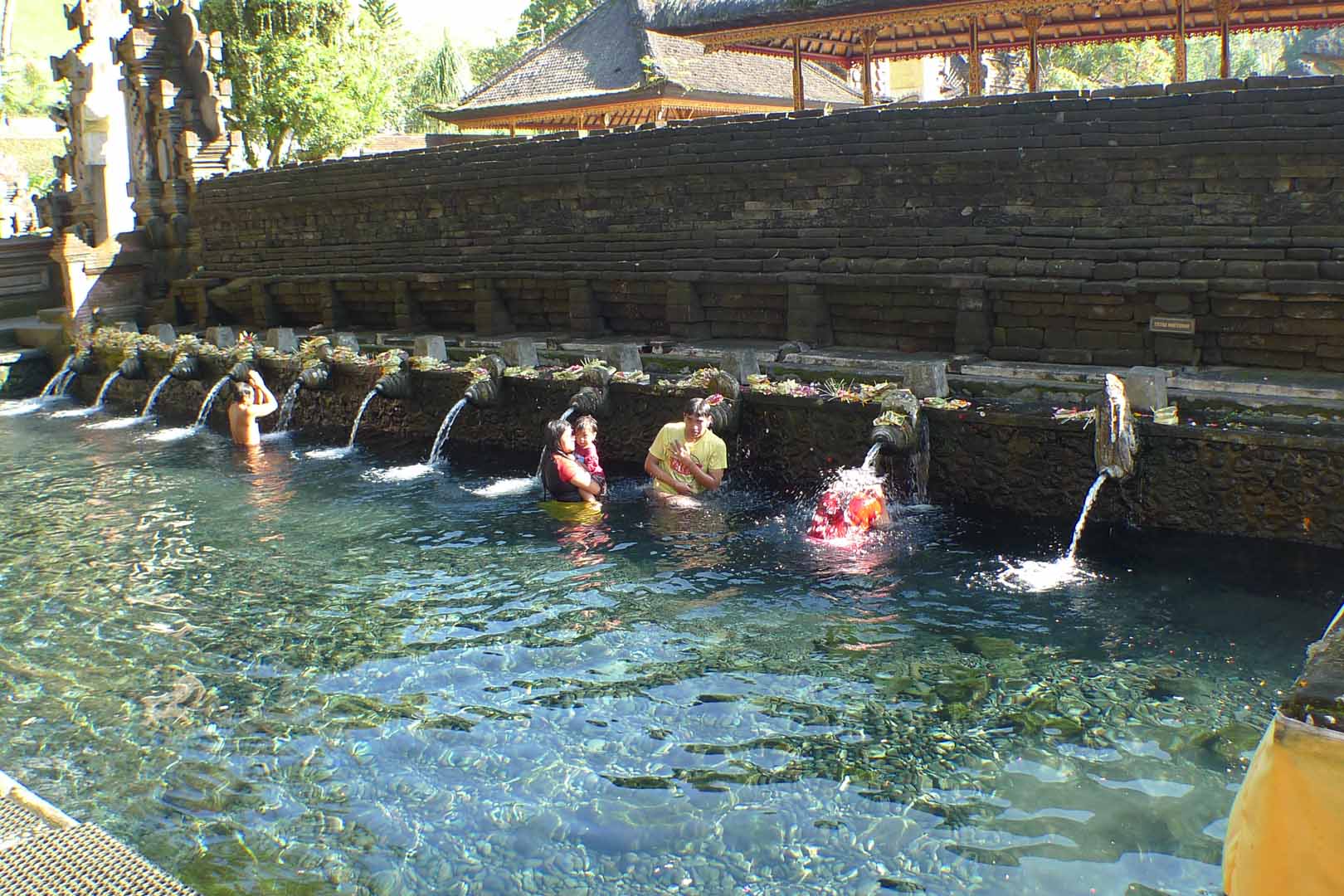
Nearby are also the royal monuments of Gunungkawi. The footpath – surrounded by picturesque rice fields – down to the river Pakerisan is a feast for the eyes, up unfortunately a nightmare (315 steps at 35 degrees).
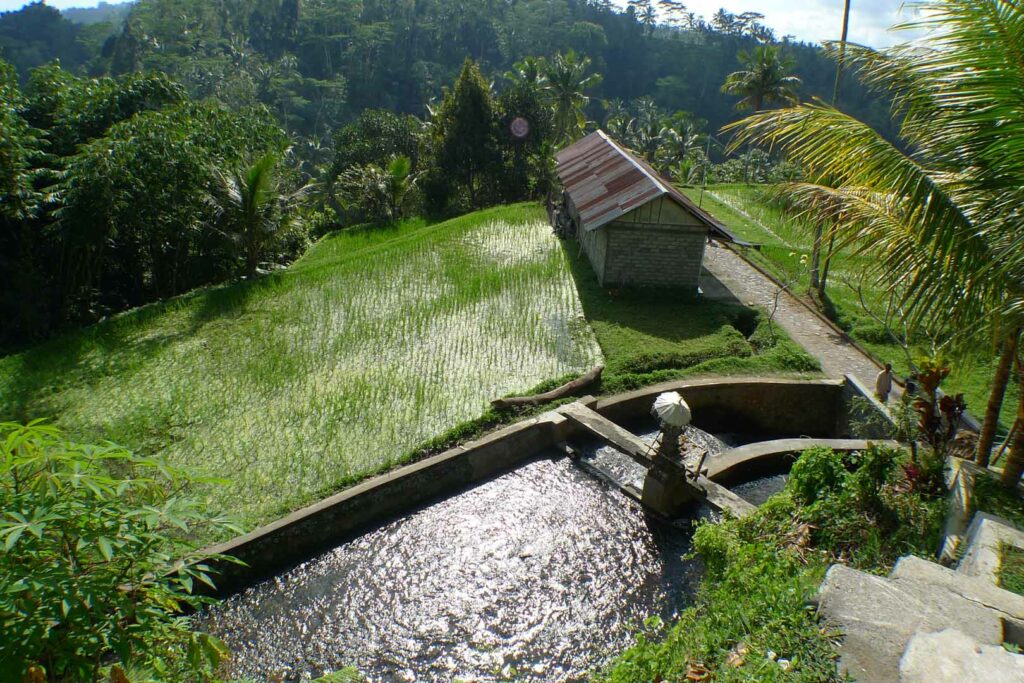
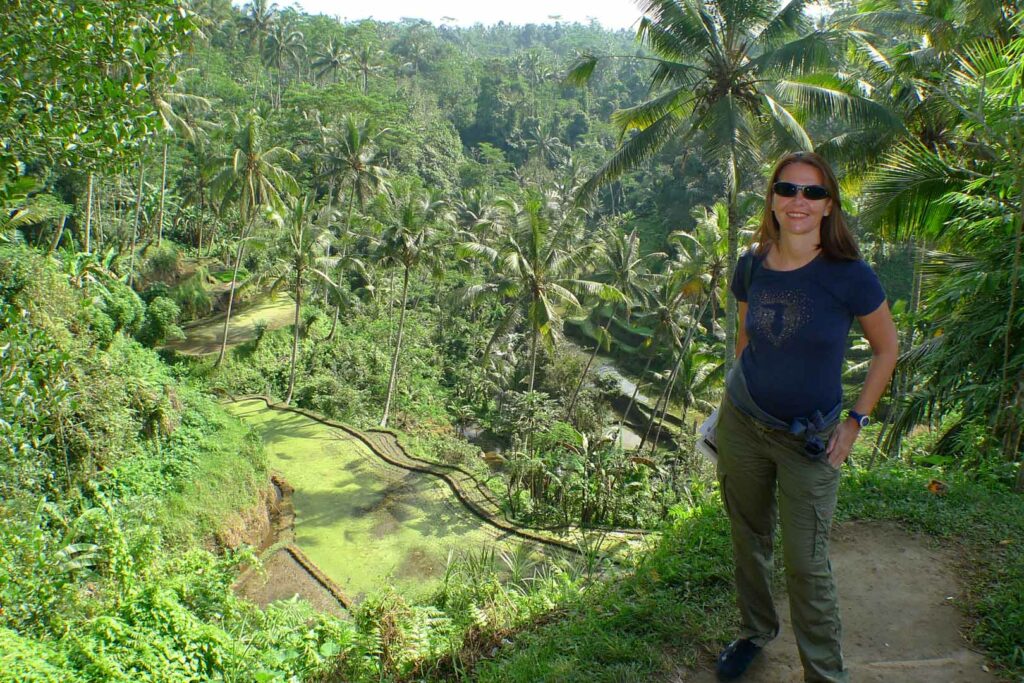
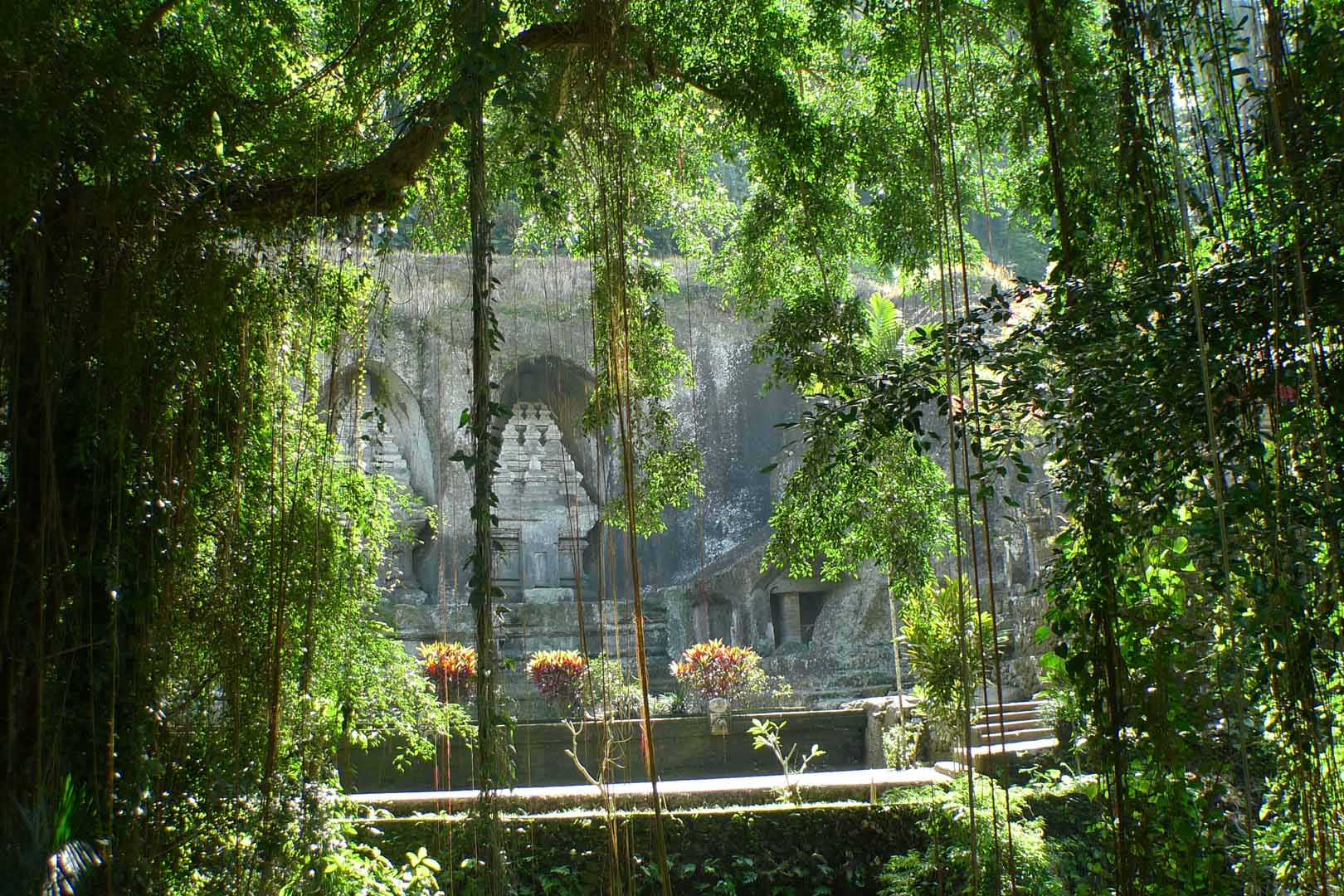
Day 11: Relax at the hotel
Day 12:
On the way to the east coast you should make a stop at the famous Klungklungs Royal Palace. Particularly worth seeing are the 267 painted panels in the Kertha Gosa court hall. These ceiling paintings show apocalyptic depictions, for example of adulterers whose genitals were burned off, or of thieves who died in agony in oil boilers. I recommend you a stroll through the garden surrounded by a moat.
Day 13 and 14: Relaxation at Amankila (detailed hotel report under hotels on Bali on my blog)
Day 15: Full day excursion
If you are in the mood, you can explore the partly still pristine area in the north. The concierge at Amankila will book you a private driver. You will discover immense and untouched landscapes, for example black, deserted sandy beaches in front of a green mountain backdrop and uniquely hidden waterfalls in the deepest jungle high up in the north of the island.
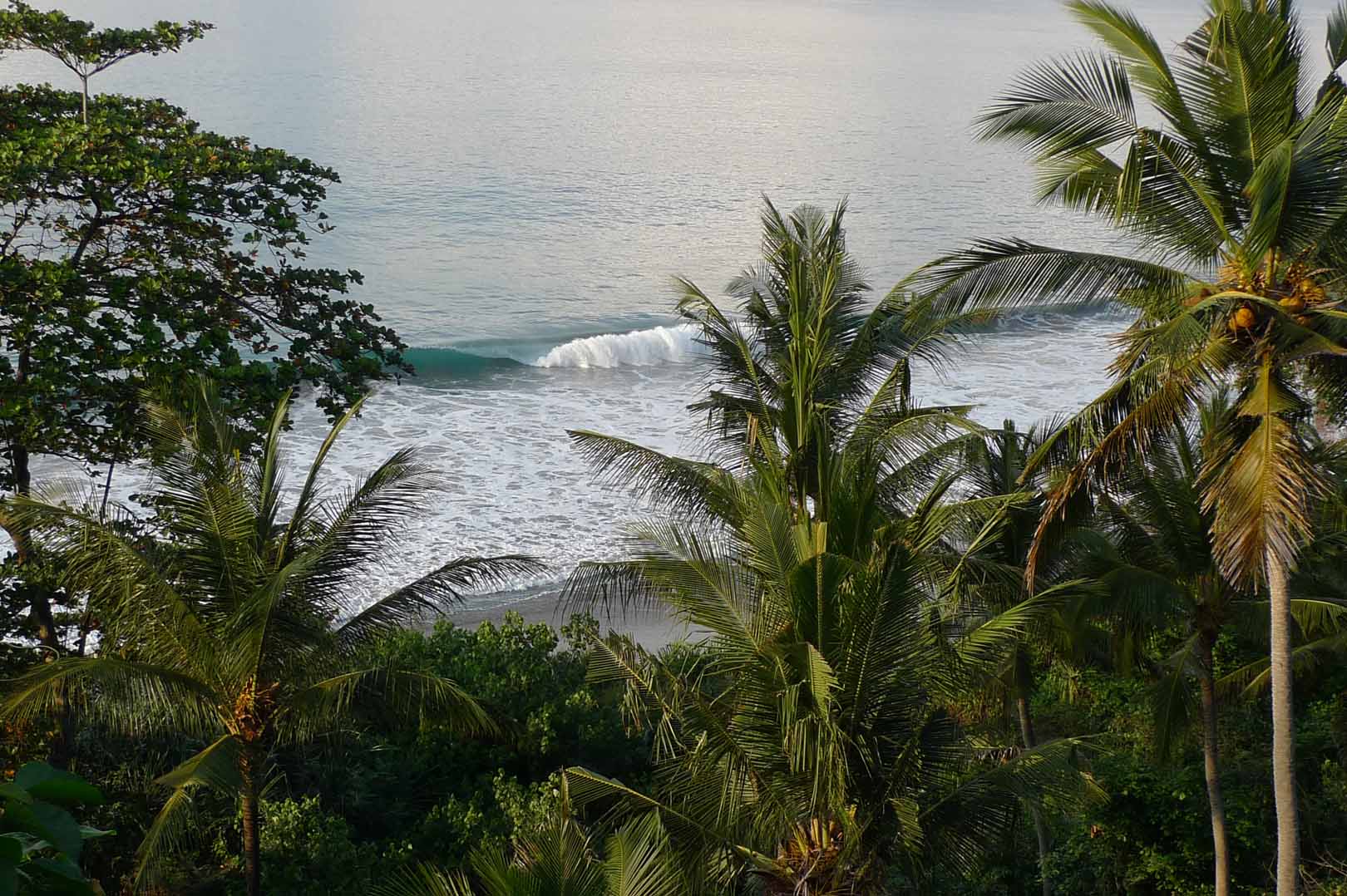
Day 16: Relaxation day before the flight home or an overnight stay in a typical Balinese hotel, the Tugu Bali. More information on my blog under hotels on Bali.
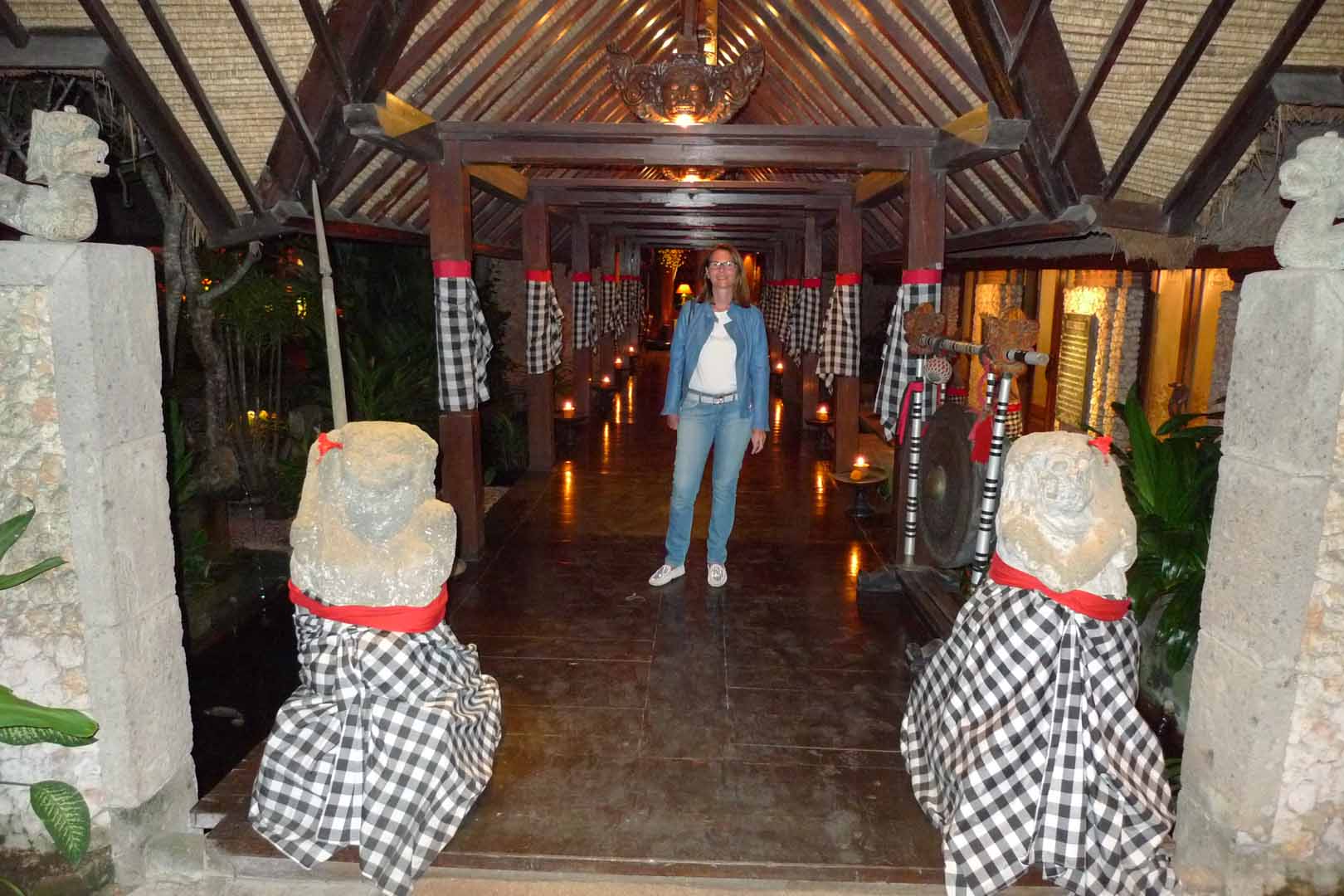
Important notes:
Getting there:
Bali is about 12,067 kilometers as the crow flies from Frankfurt. But there is the possibility to fly in style and comfort with Emirates in First-Class via Dubai to Denpasar or with Lufthansa / Singapore Airlines via Singapore.
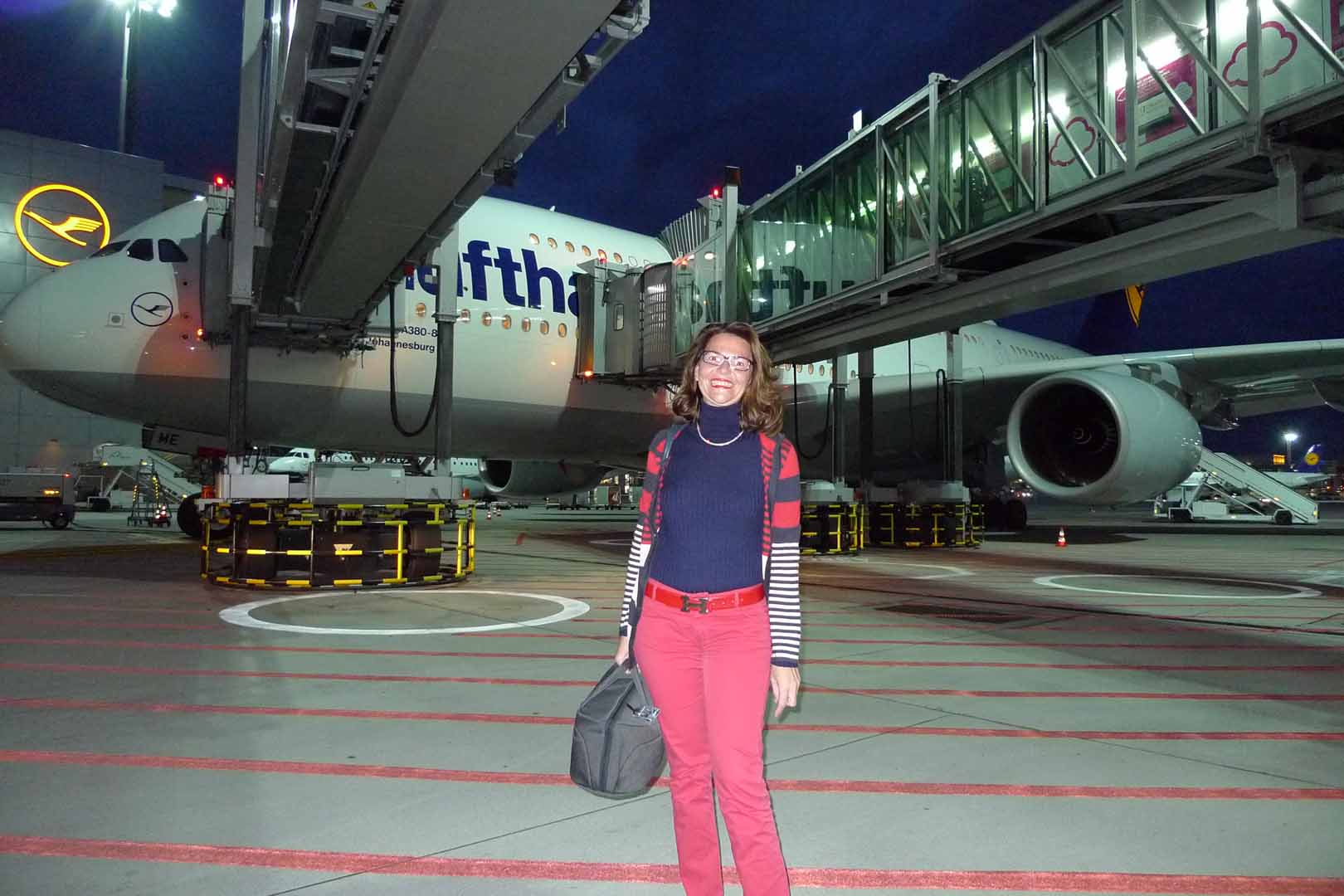
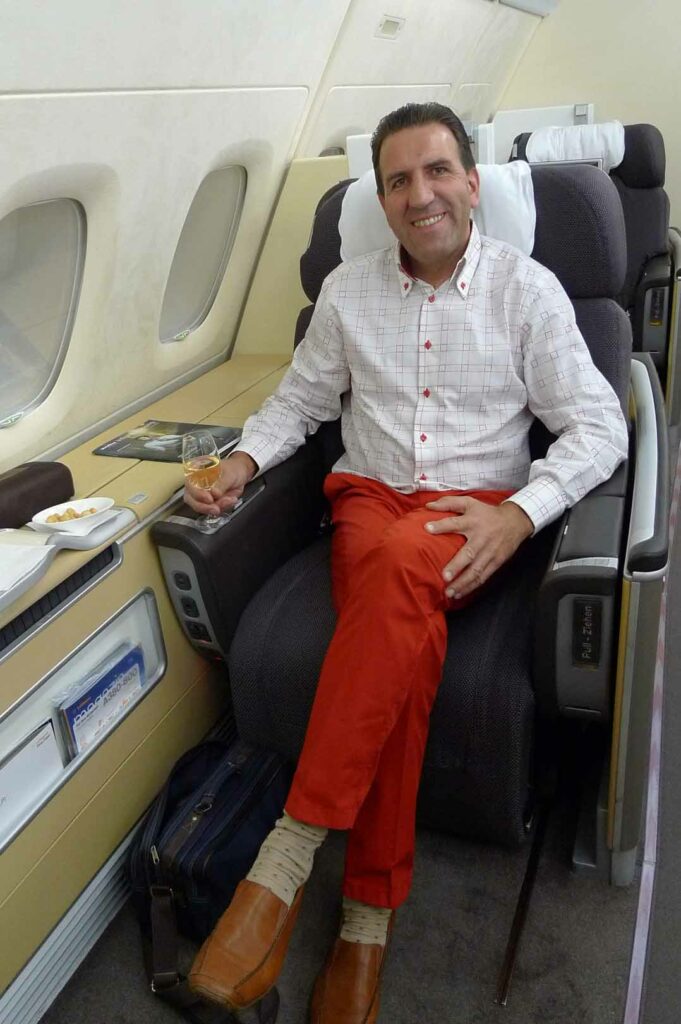
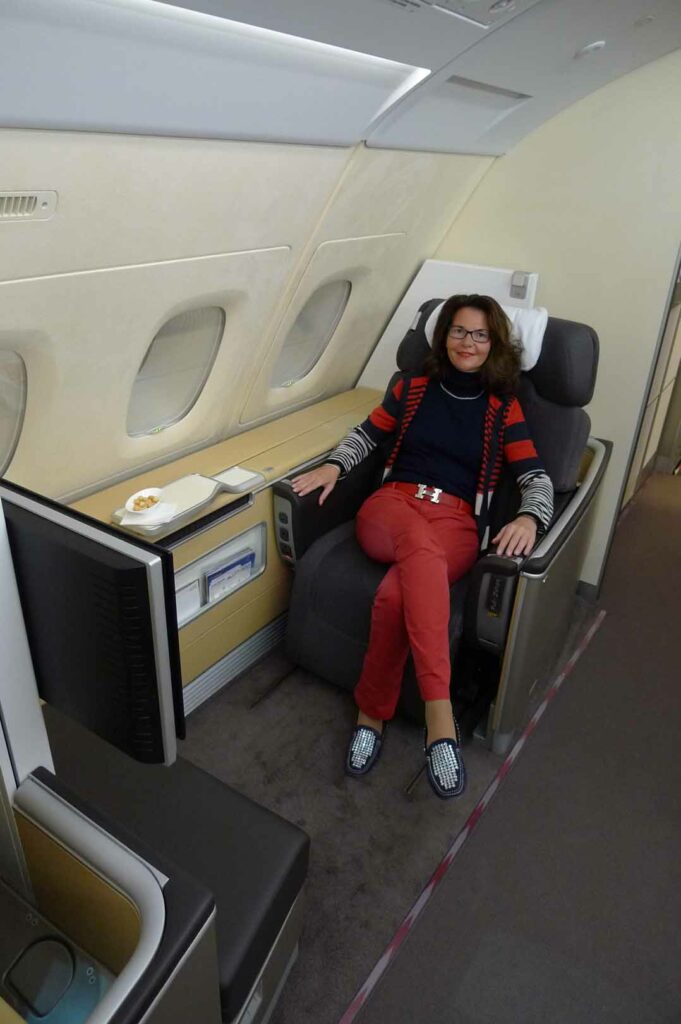
Weather:
Bali has a tropical climate, which means that temperatures average around 30 degrees Celsius. The ideal time to travel is during the dry season from May to October.
Have fun in Bali,
your Amal

